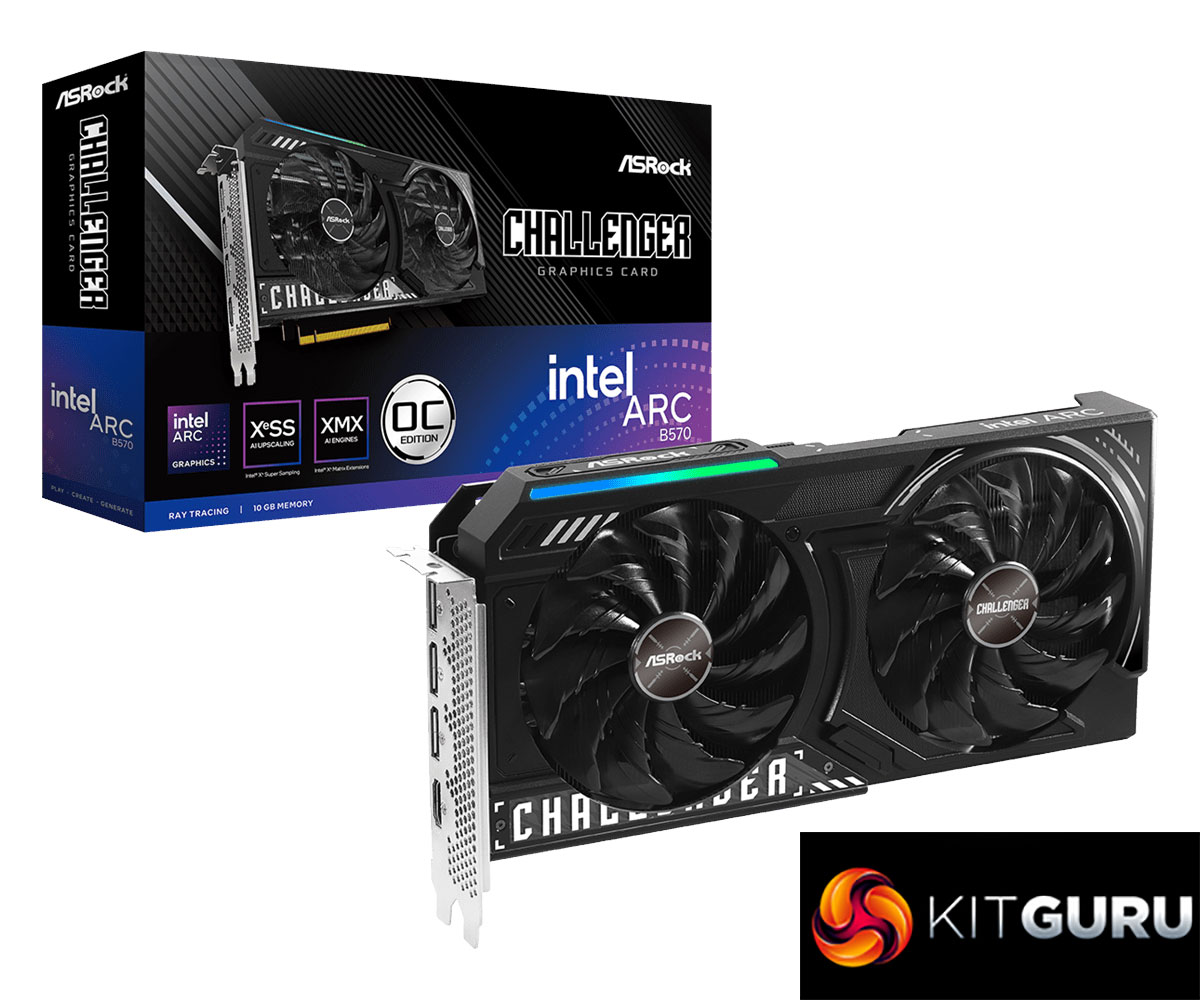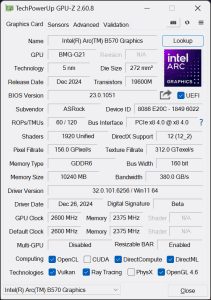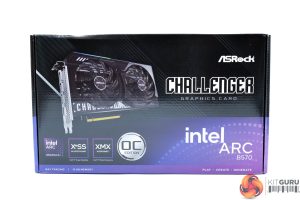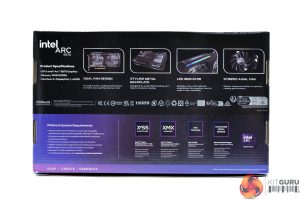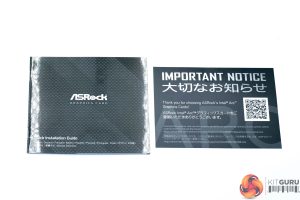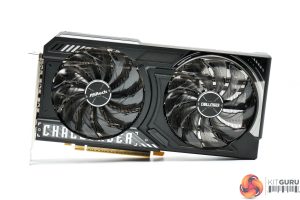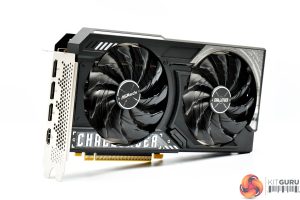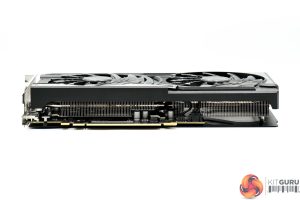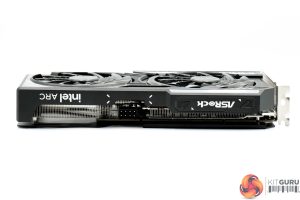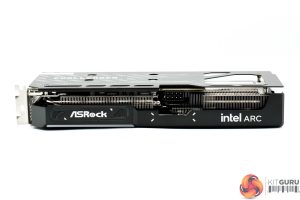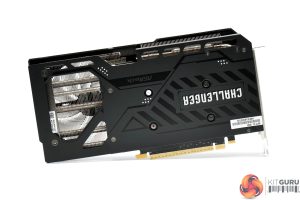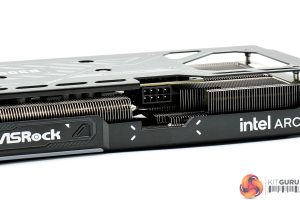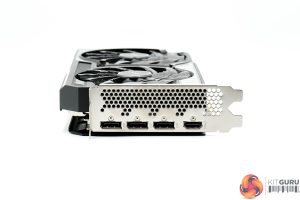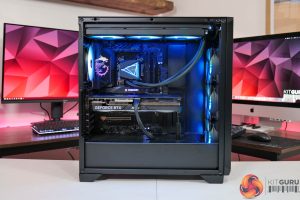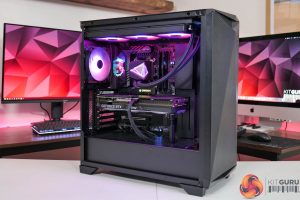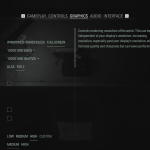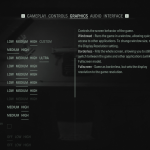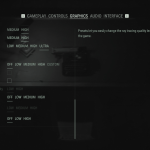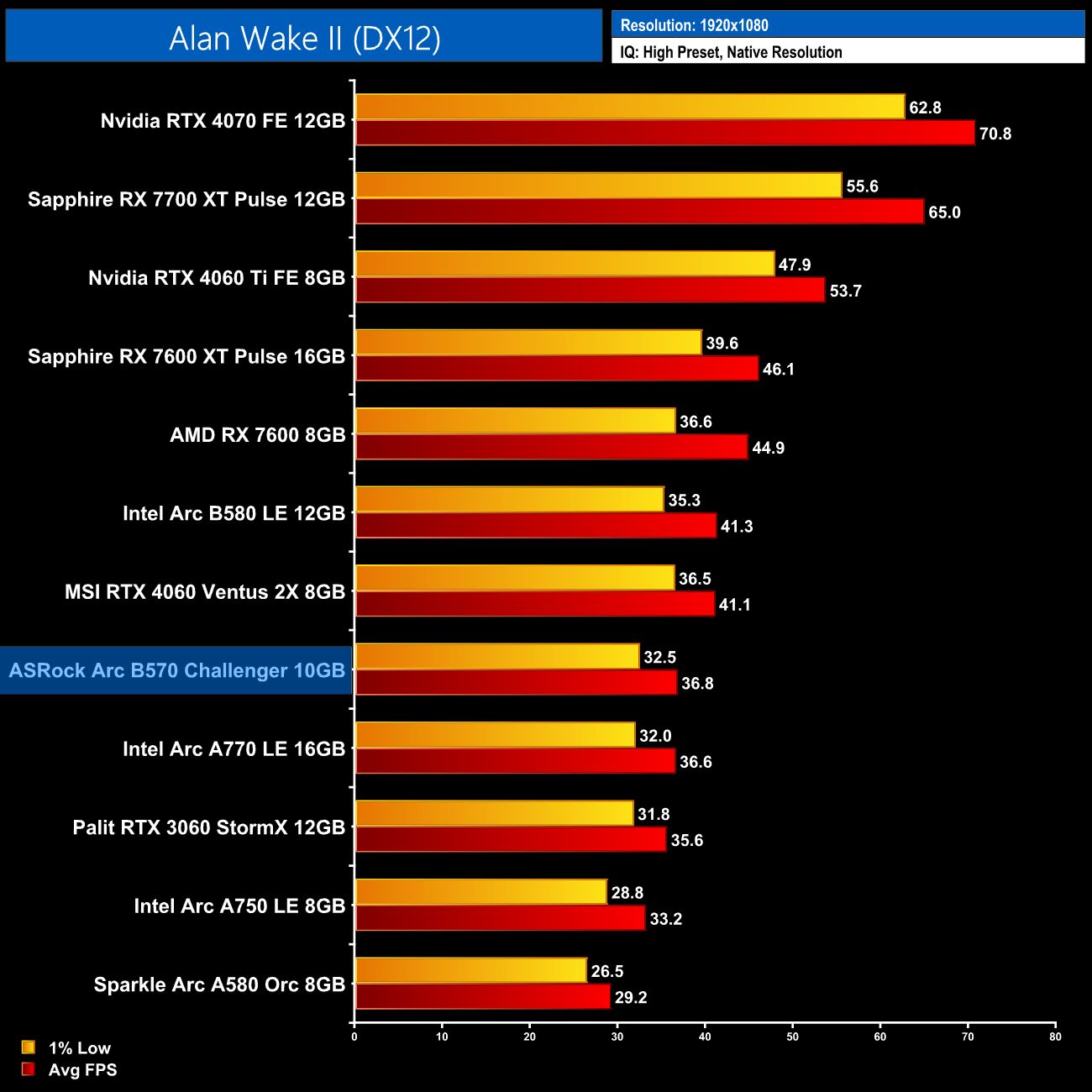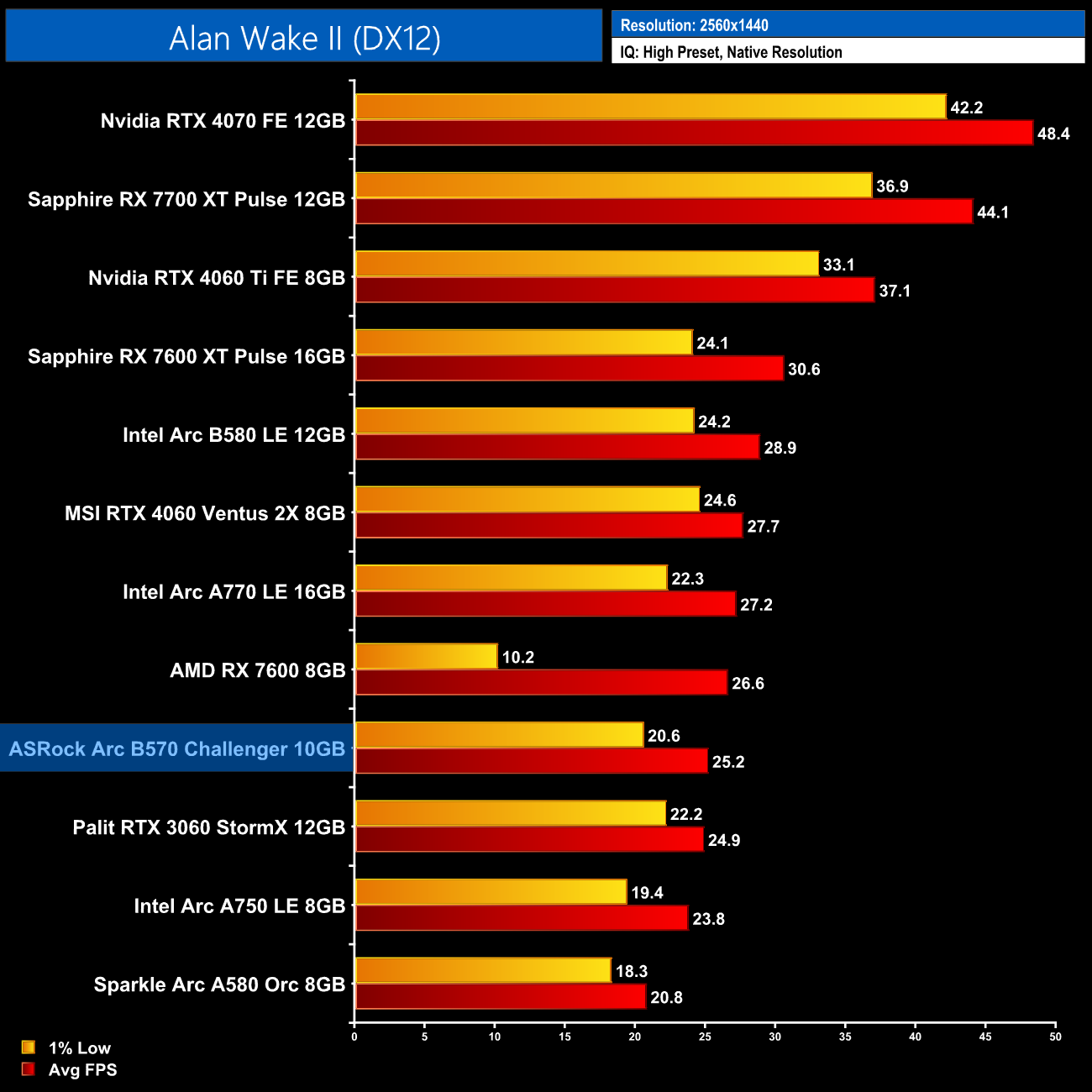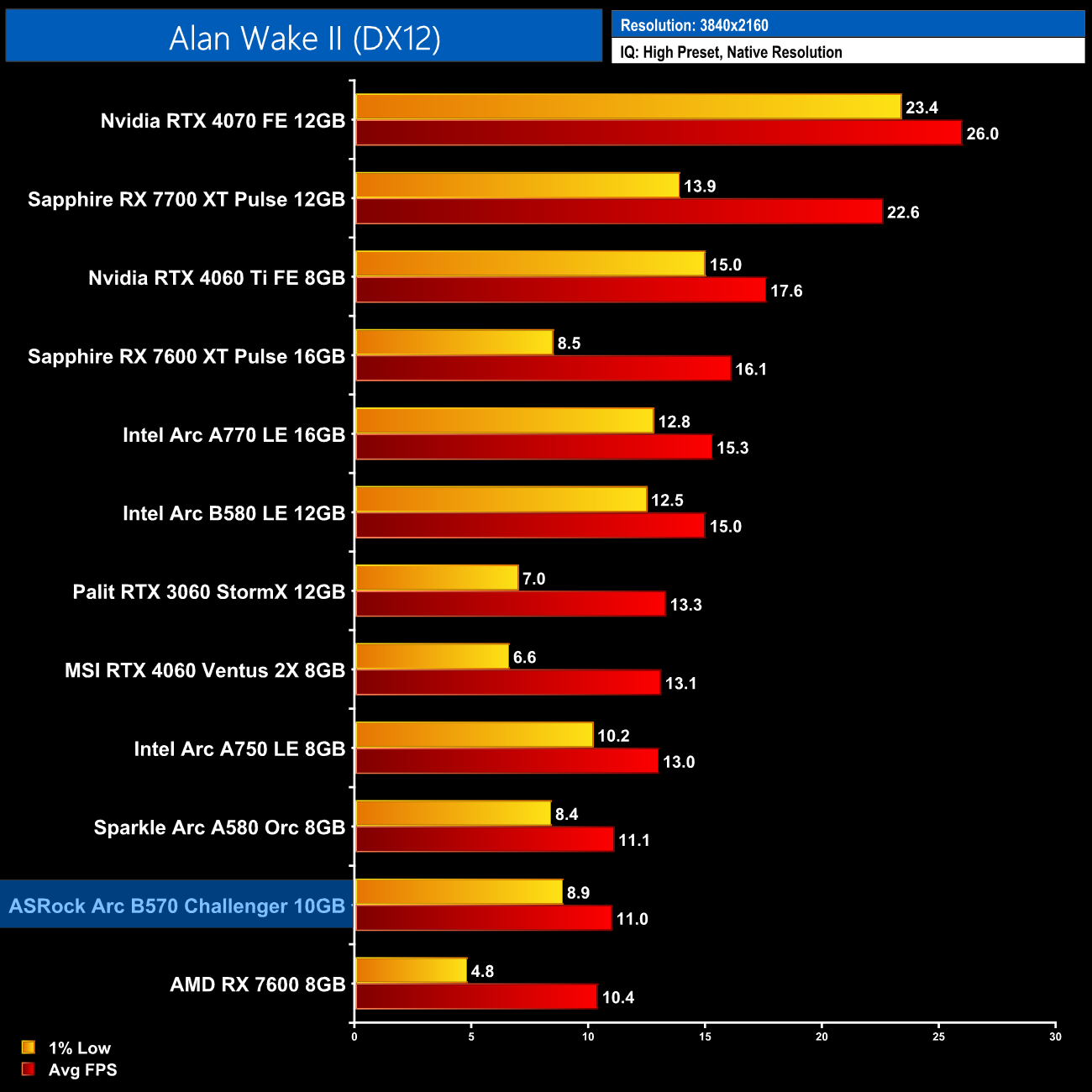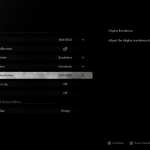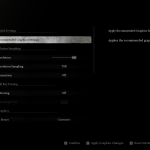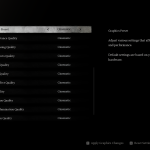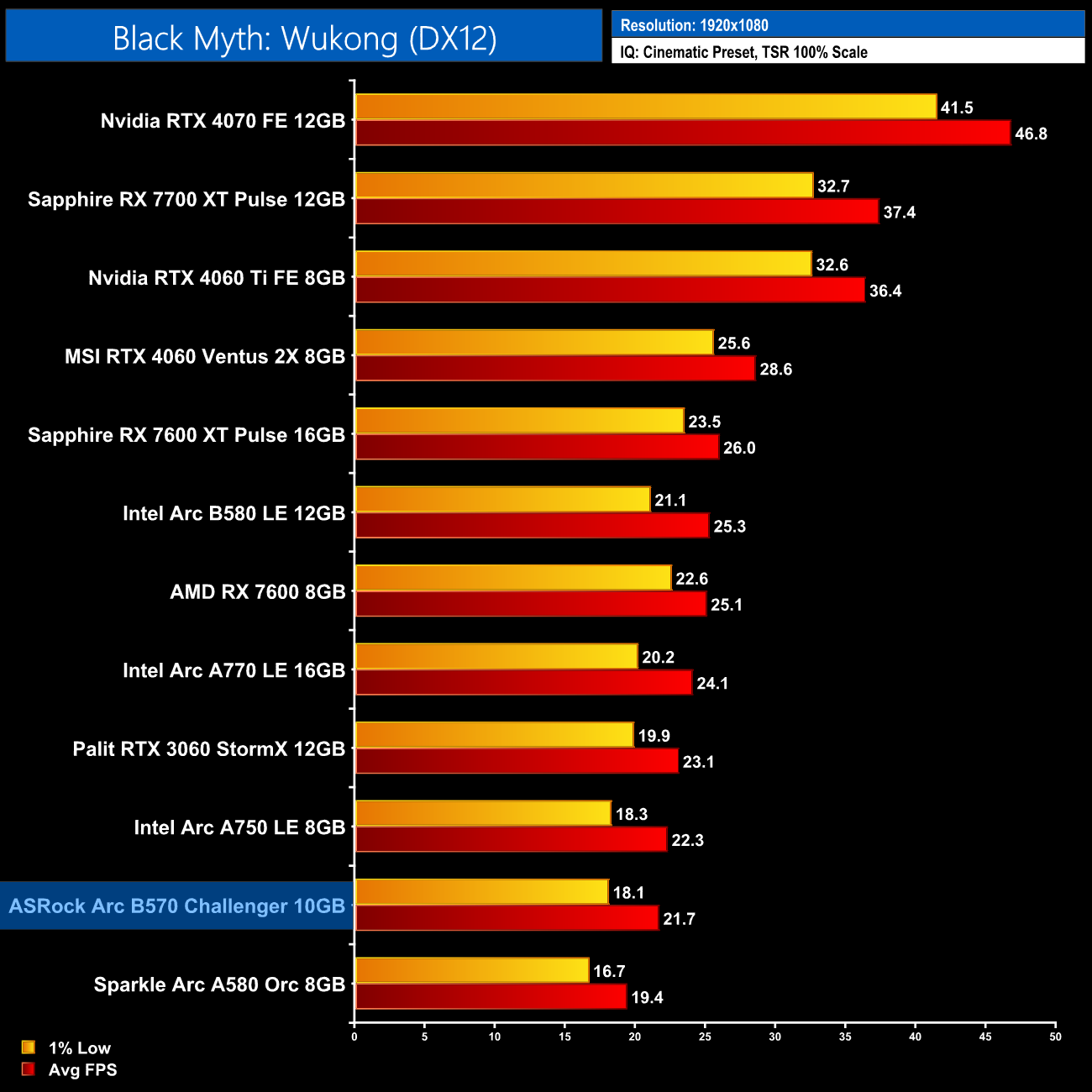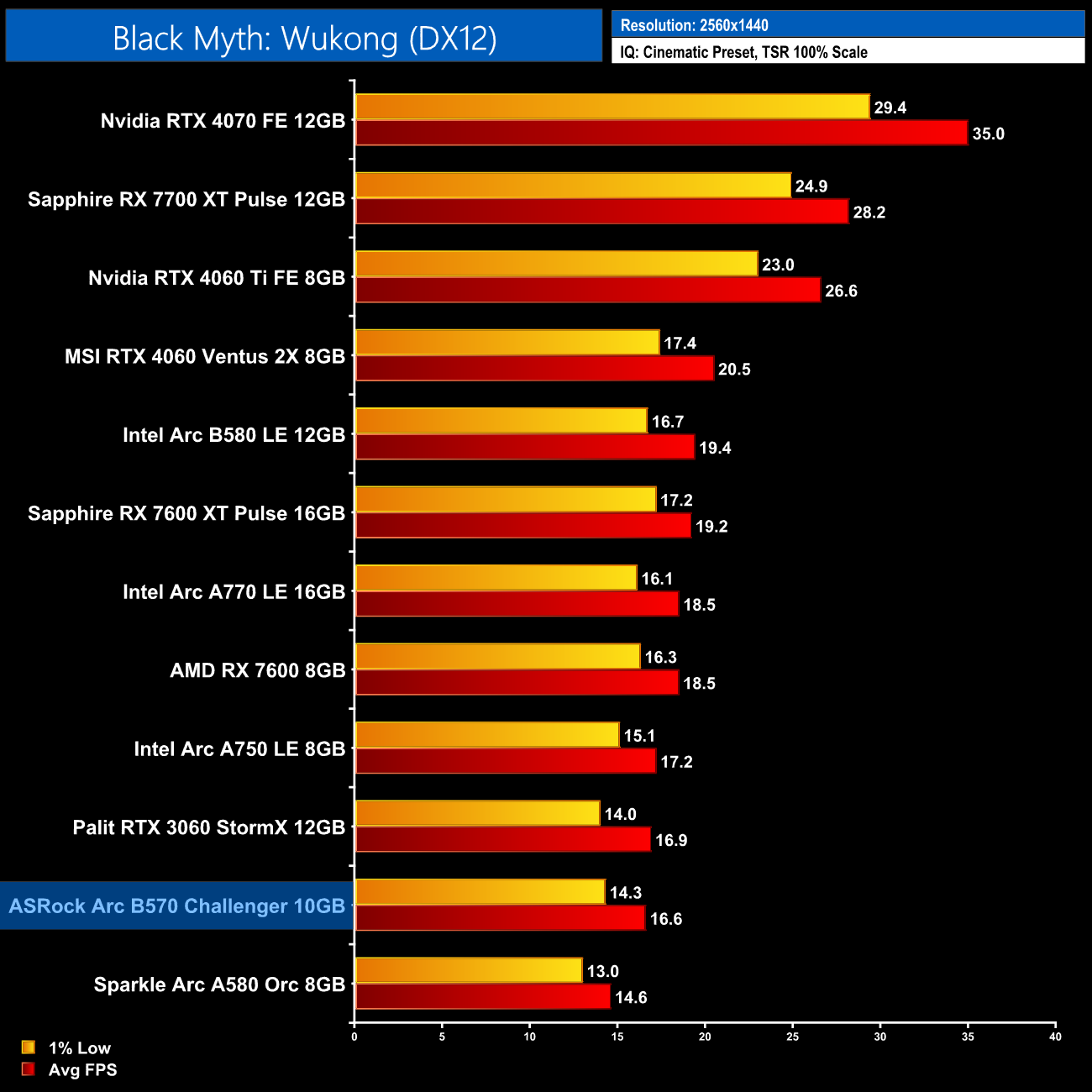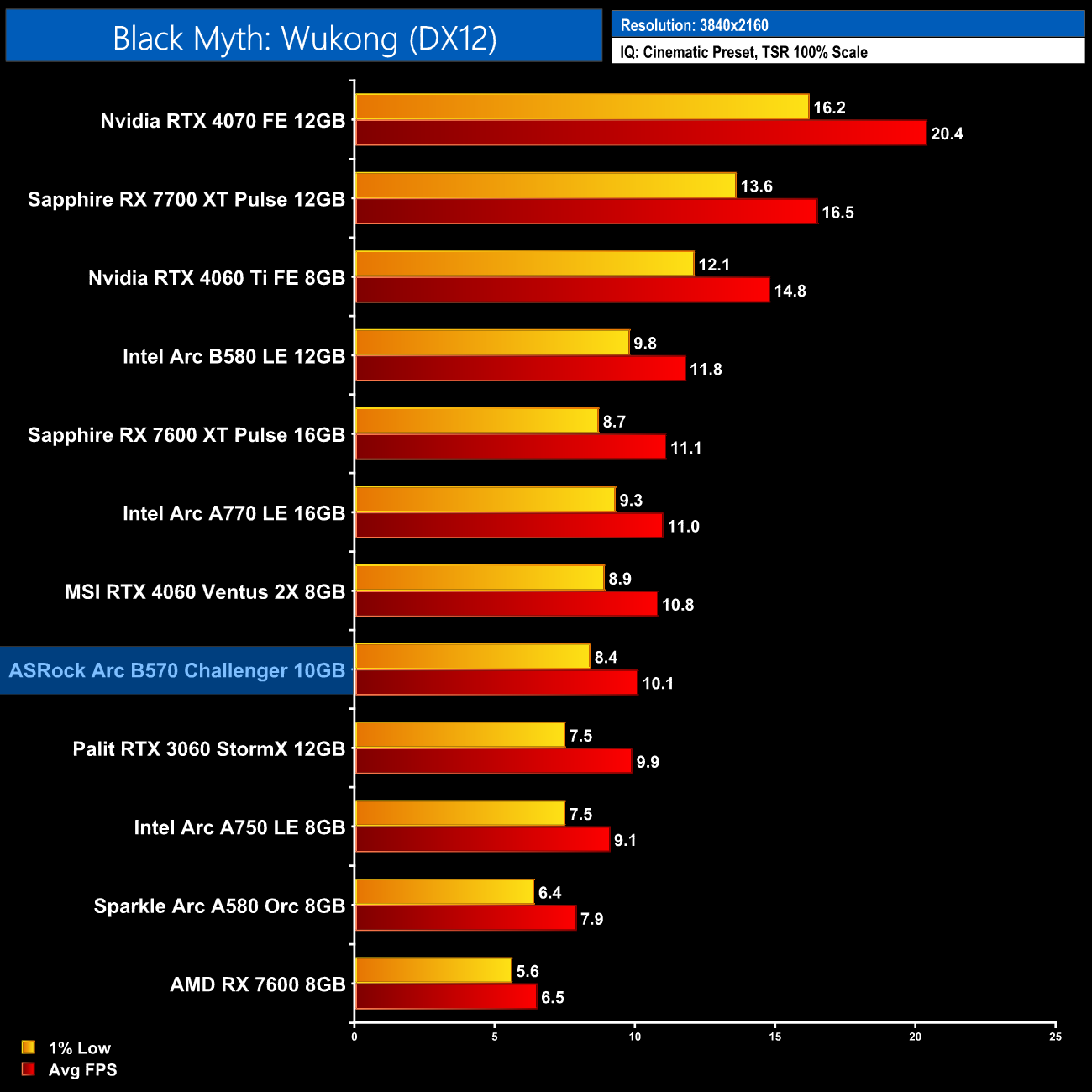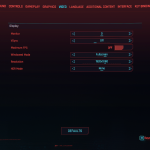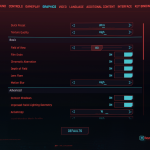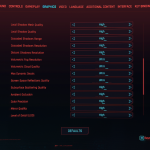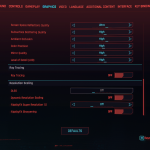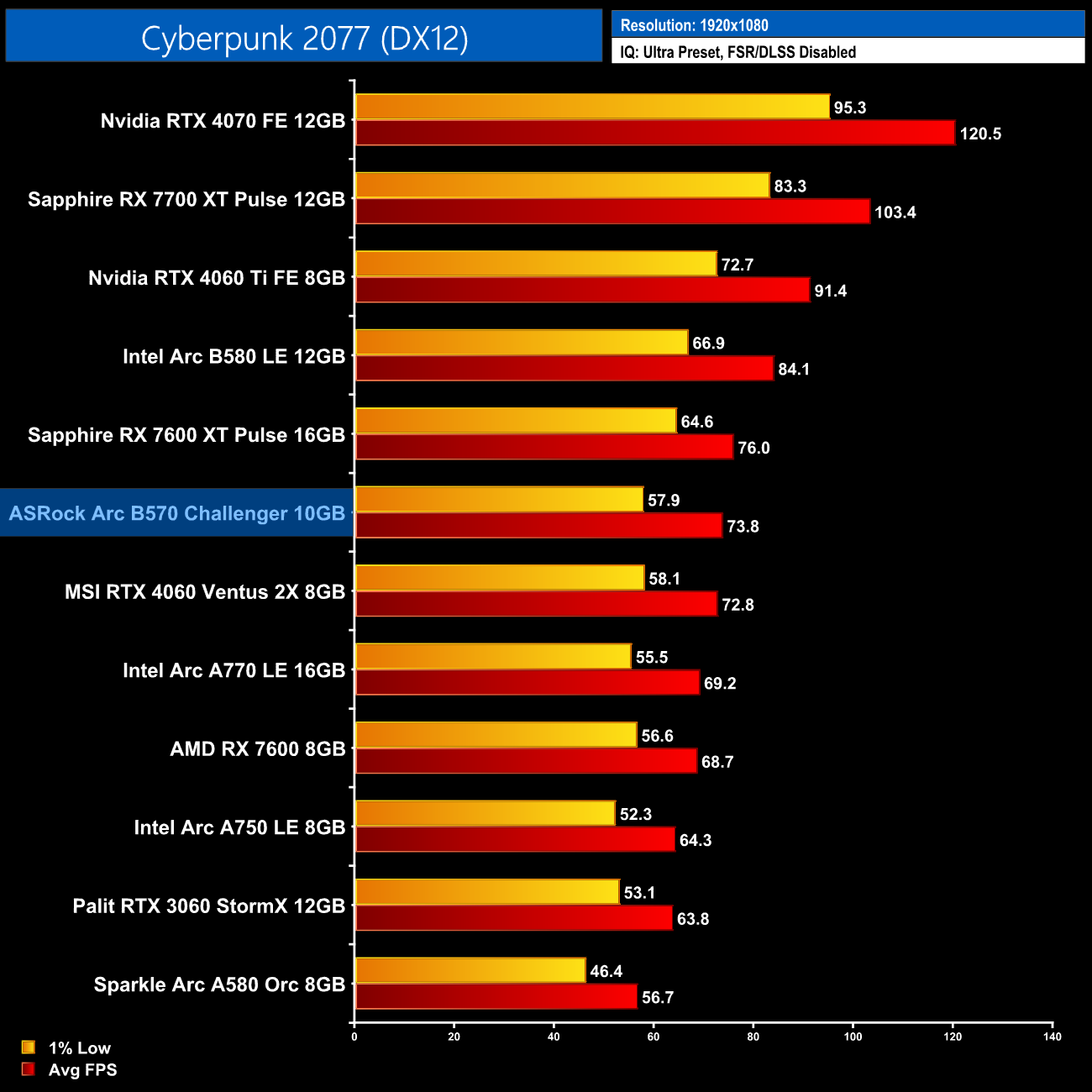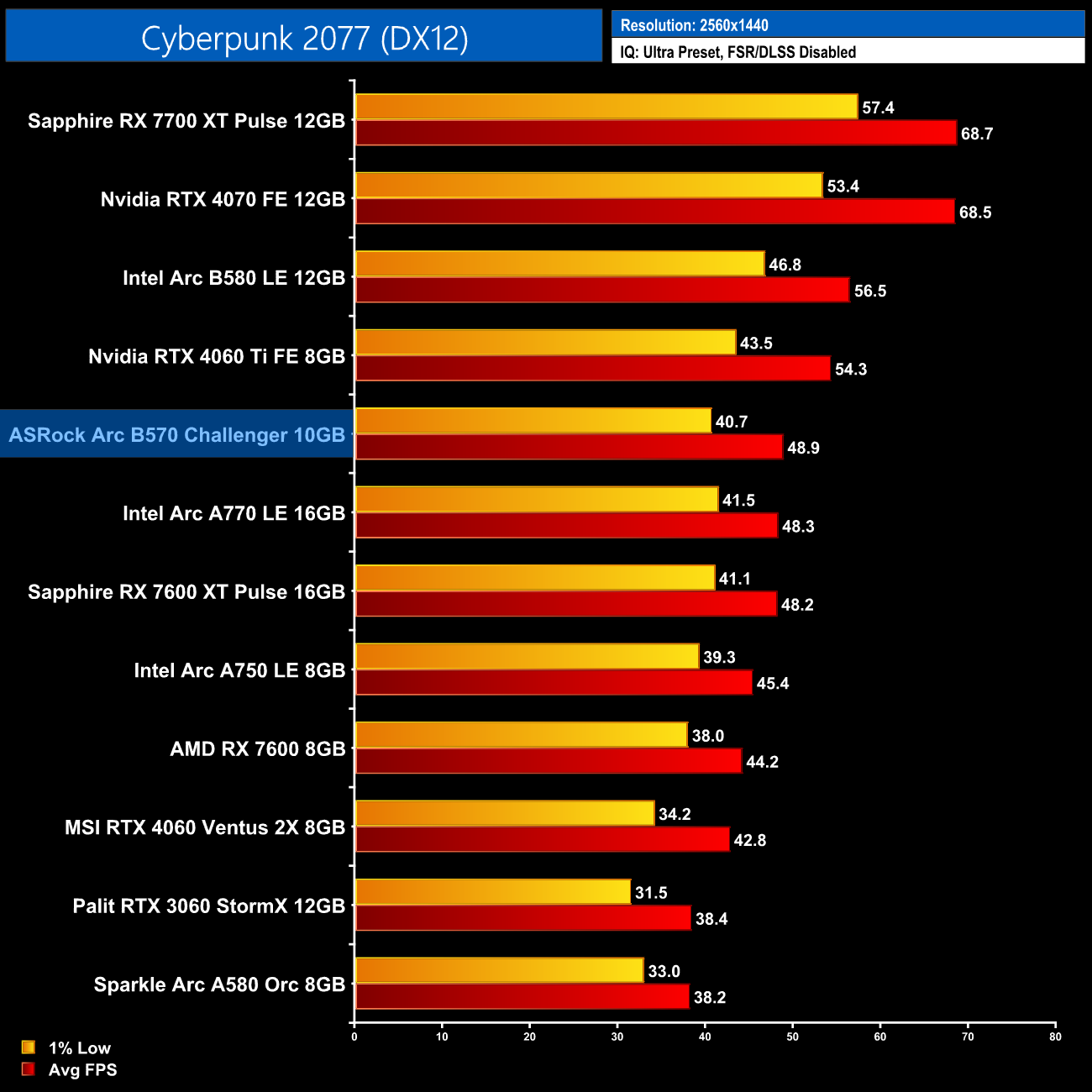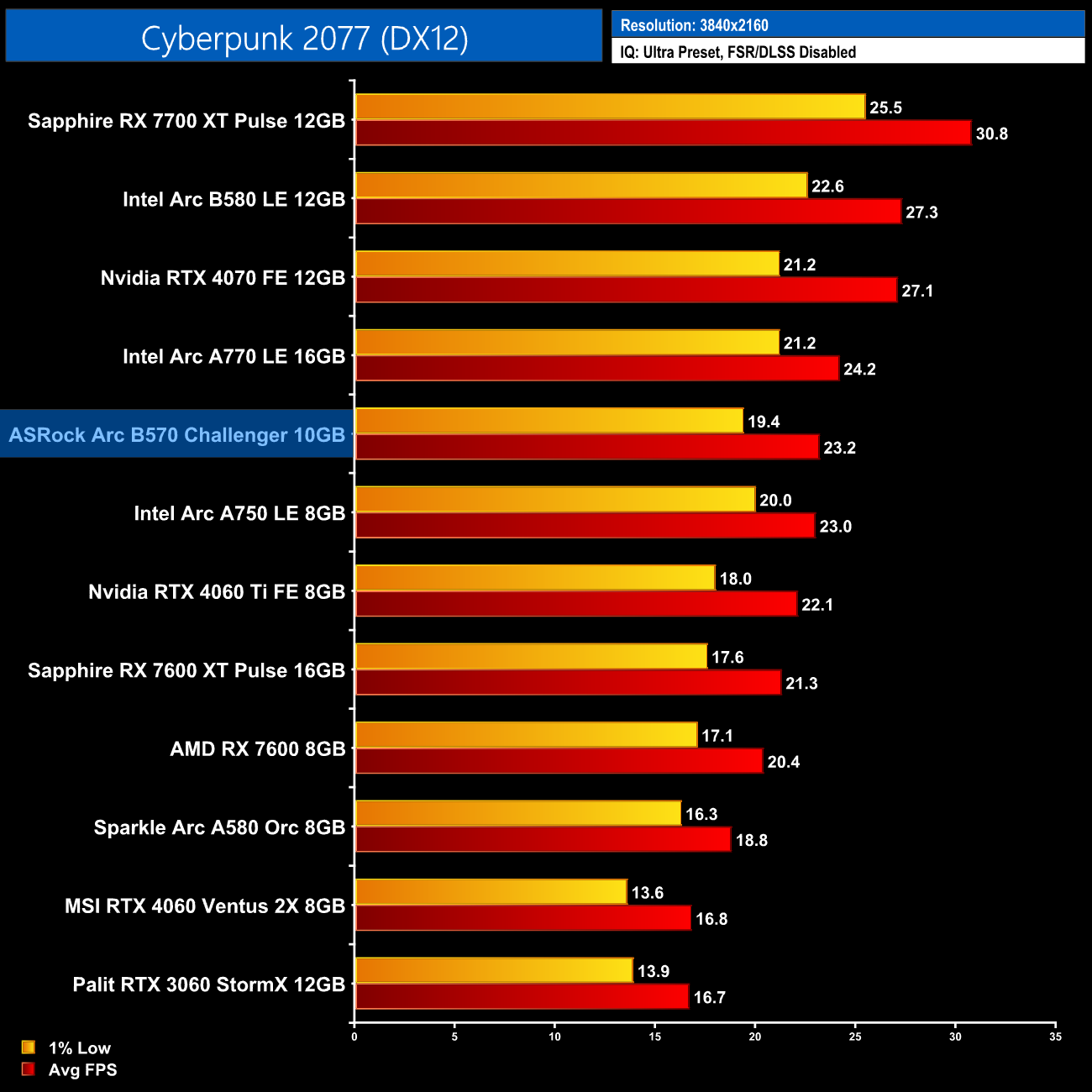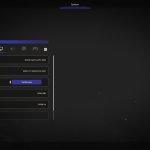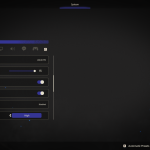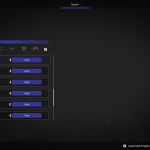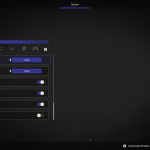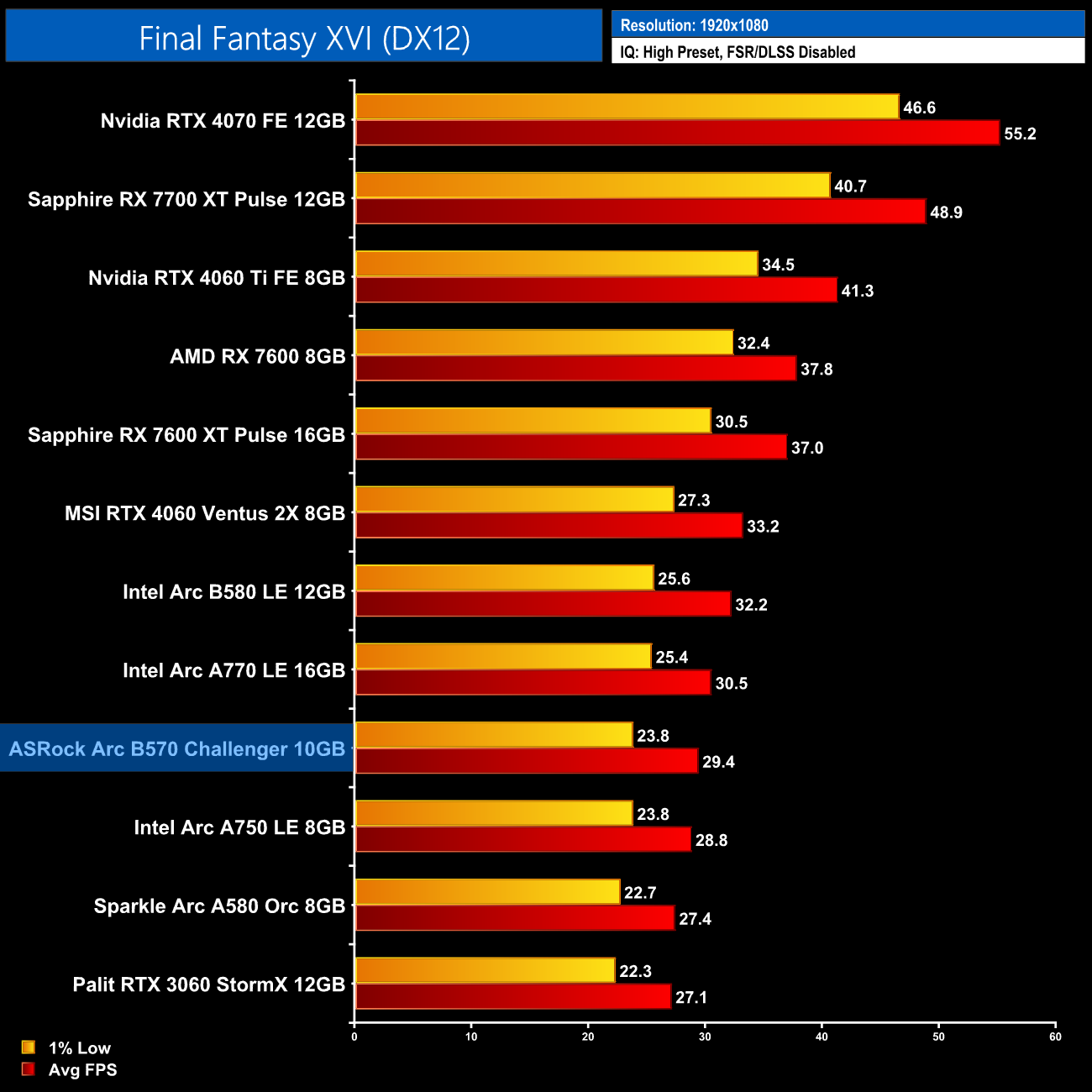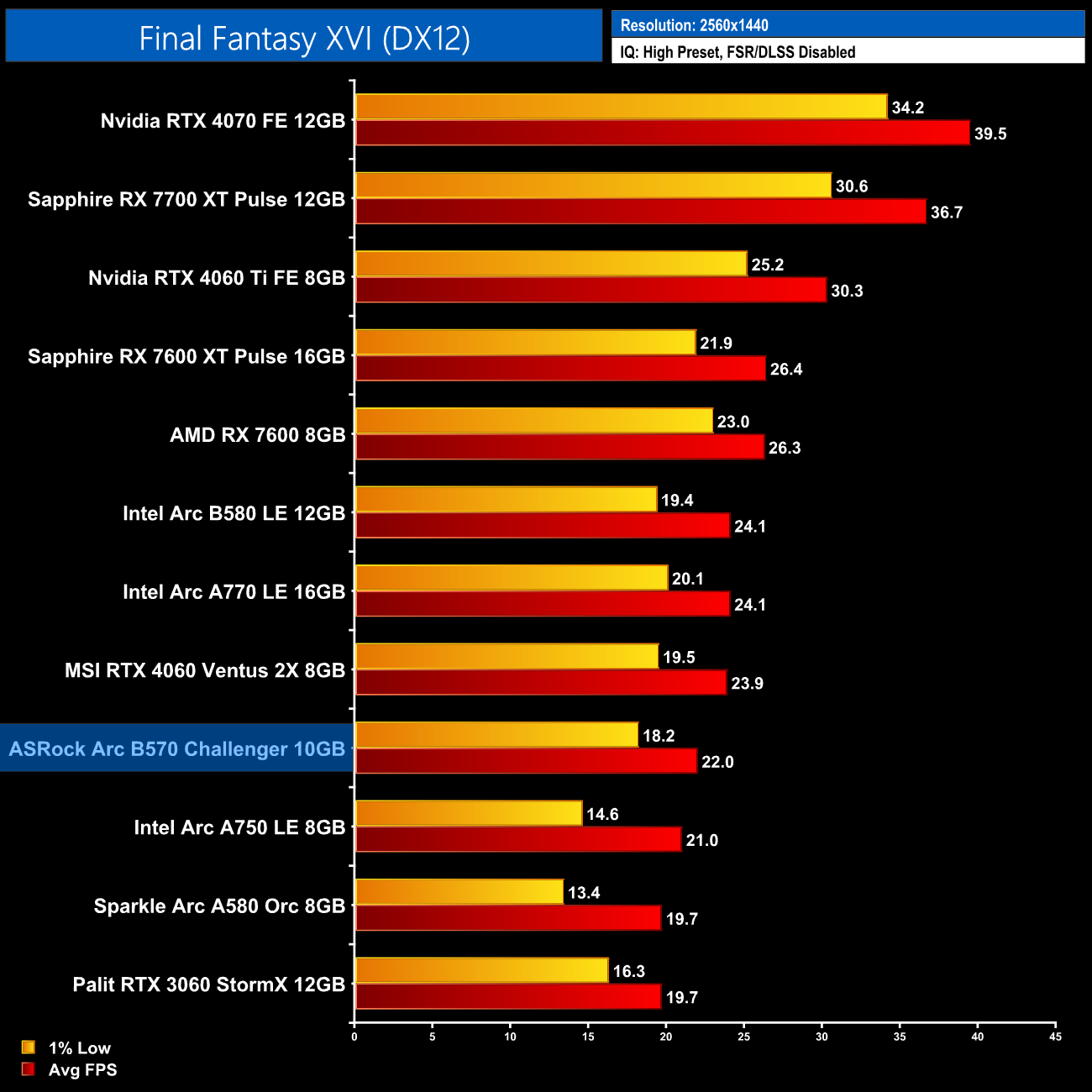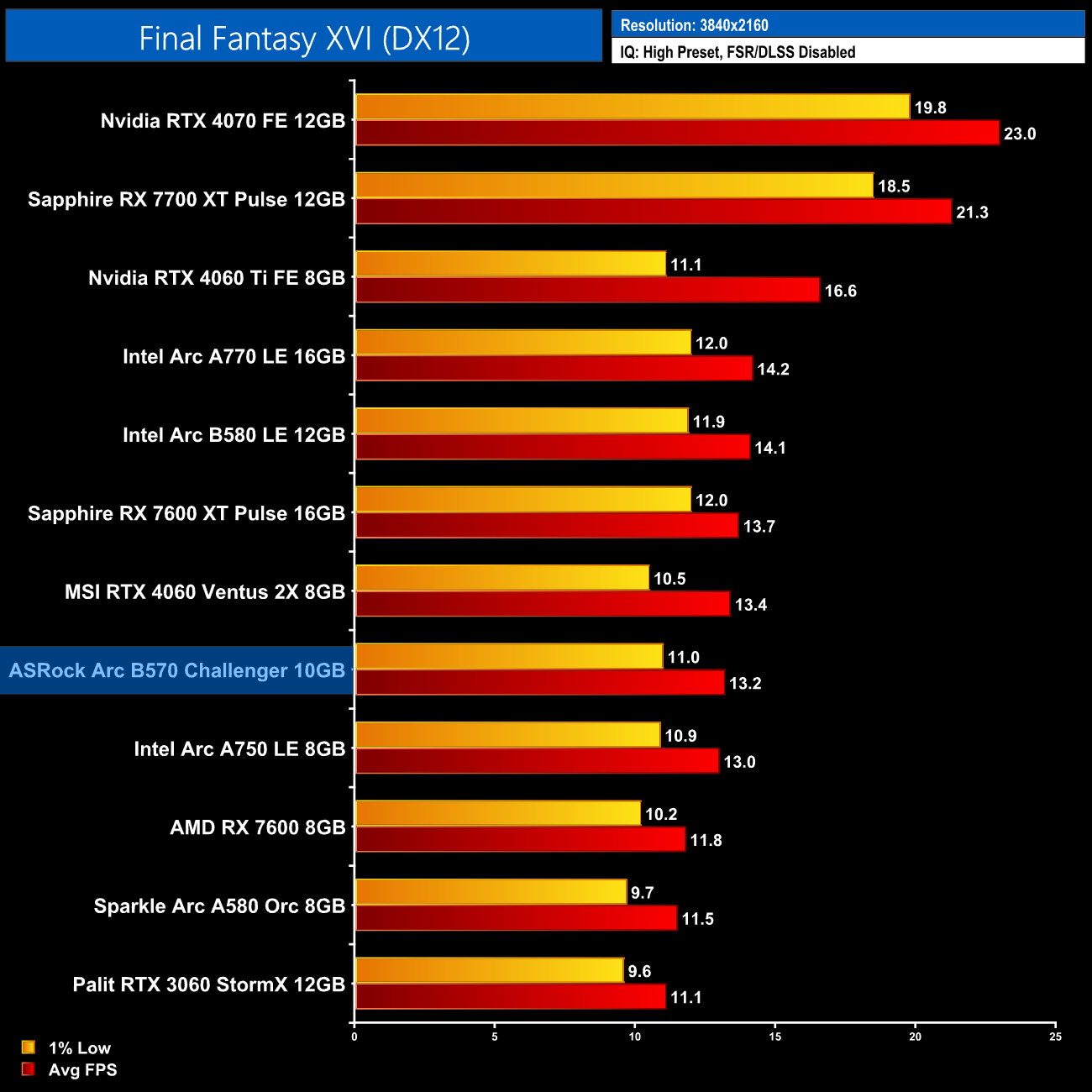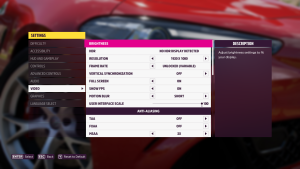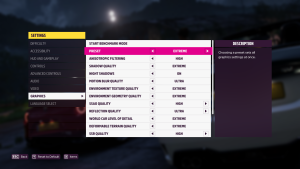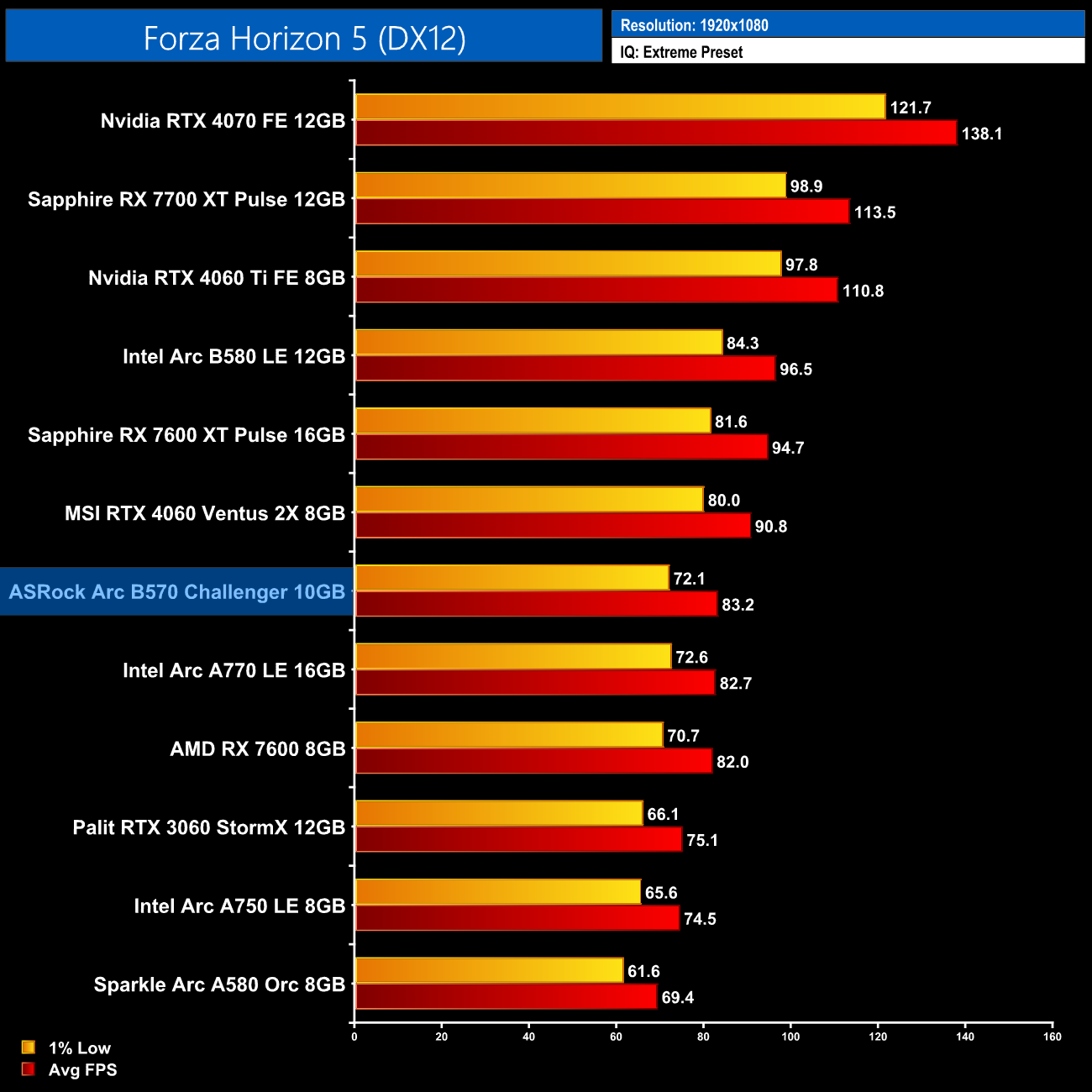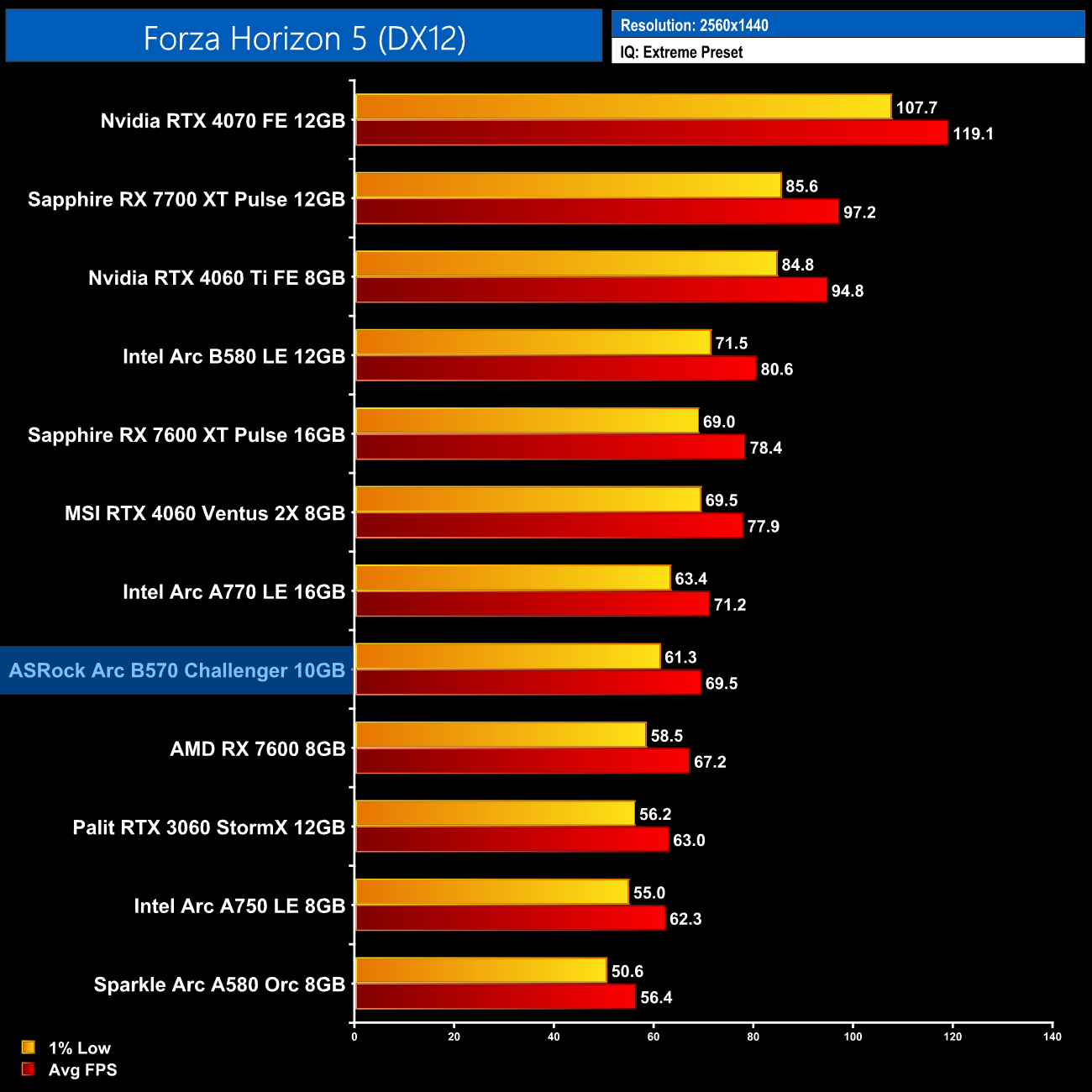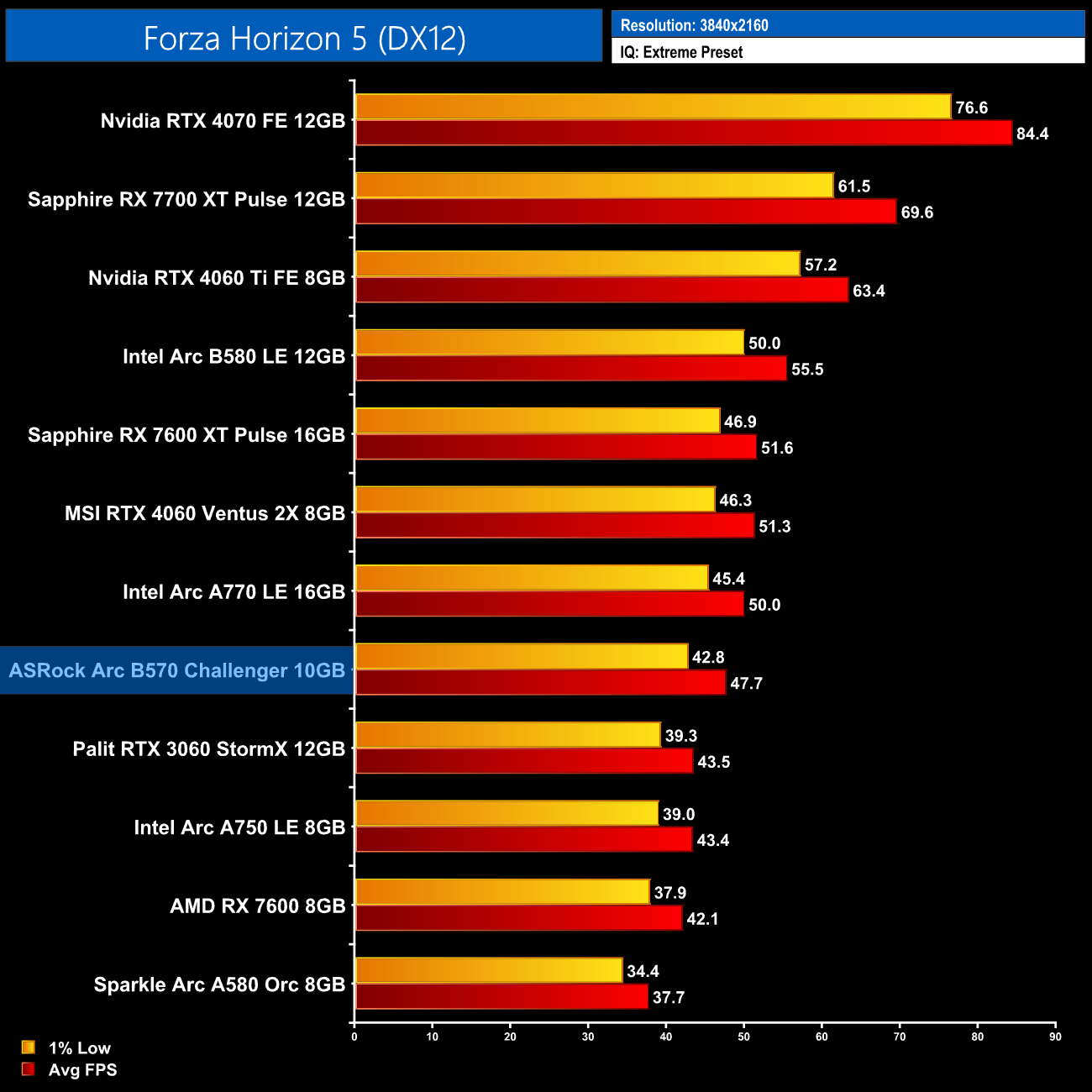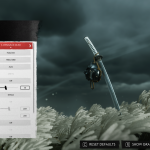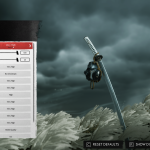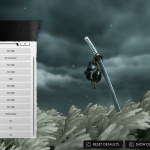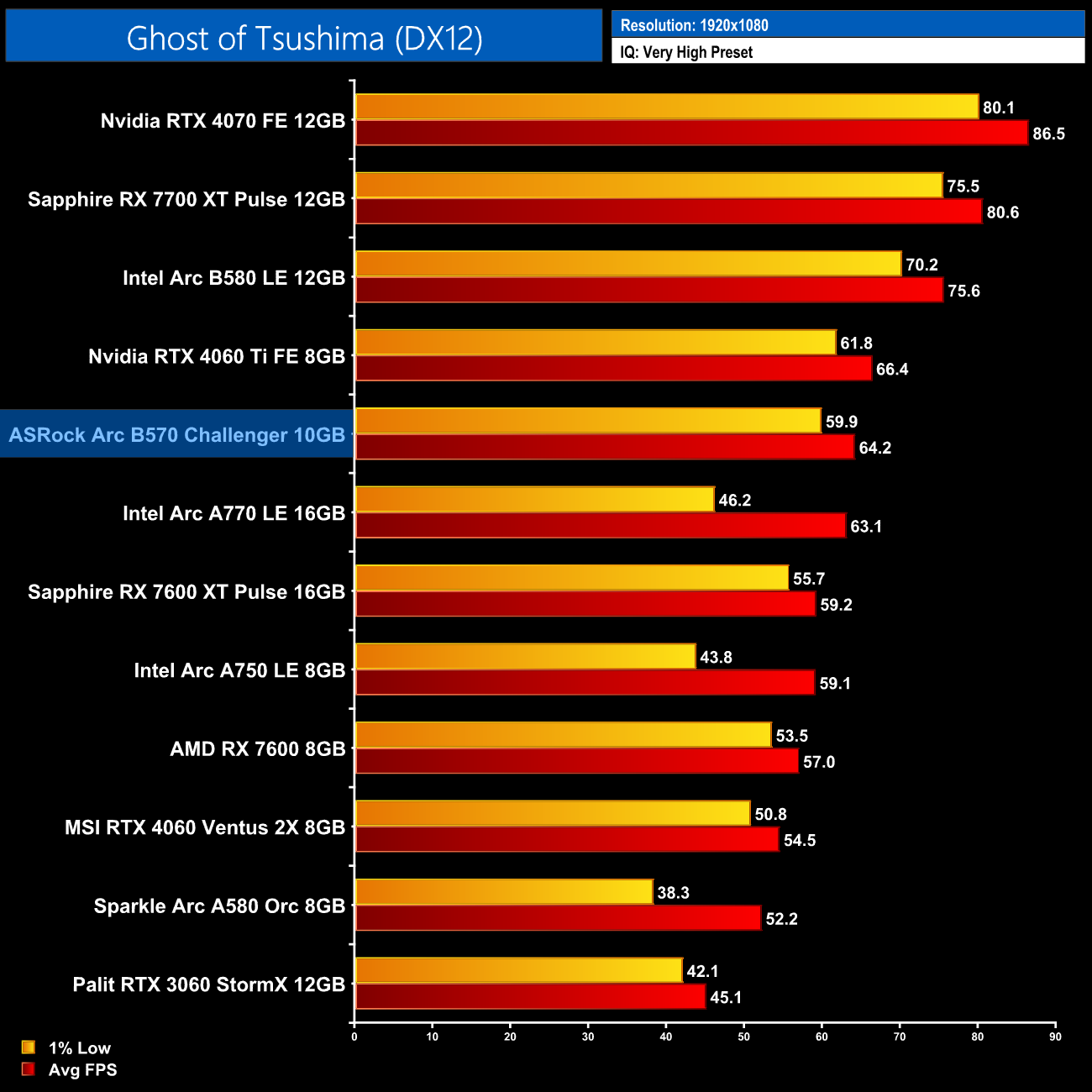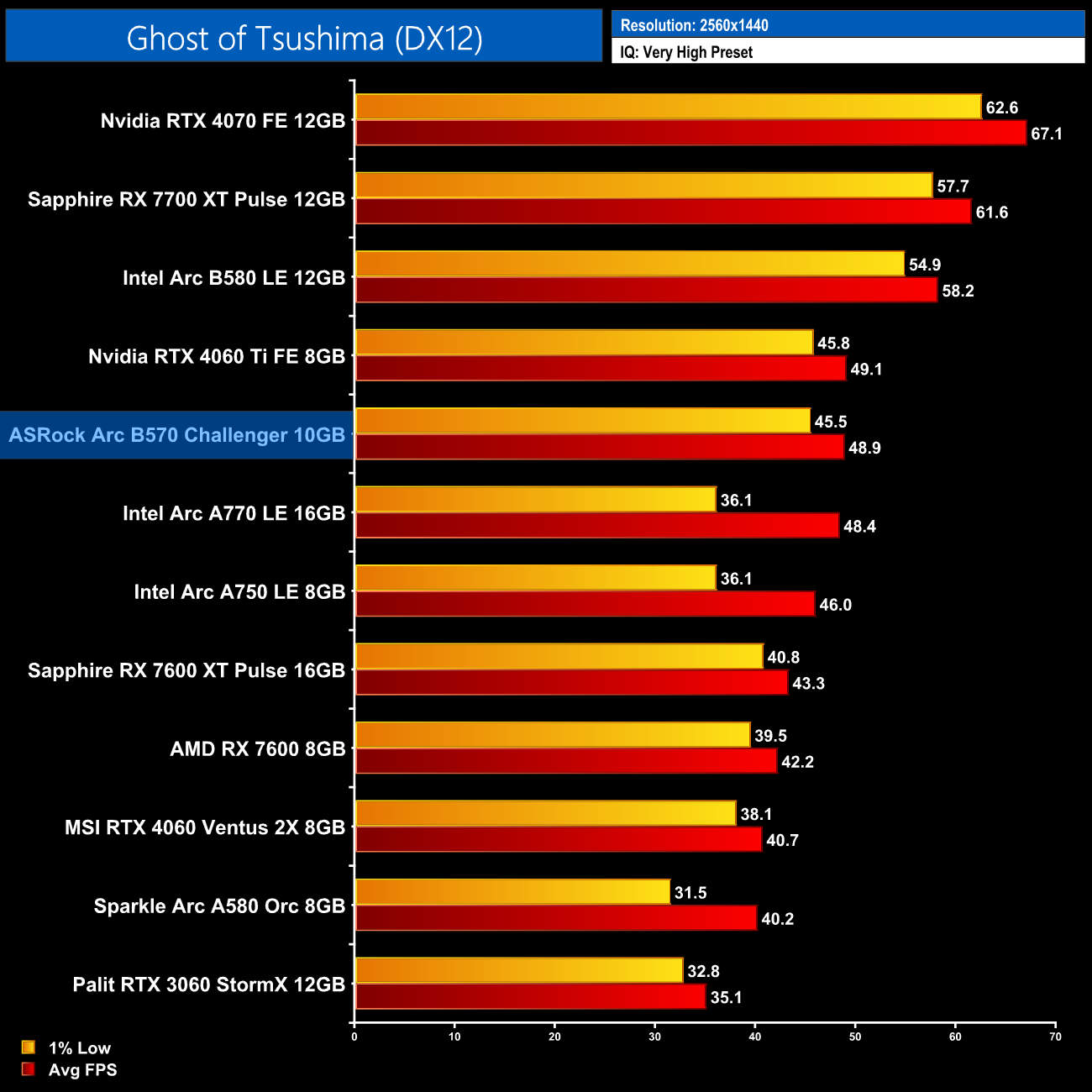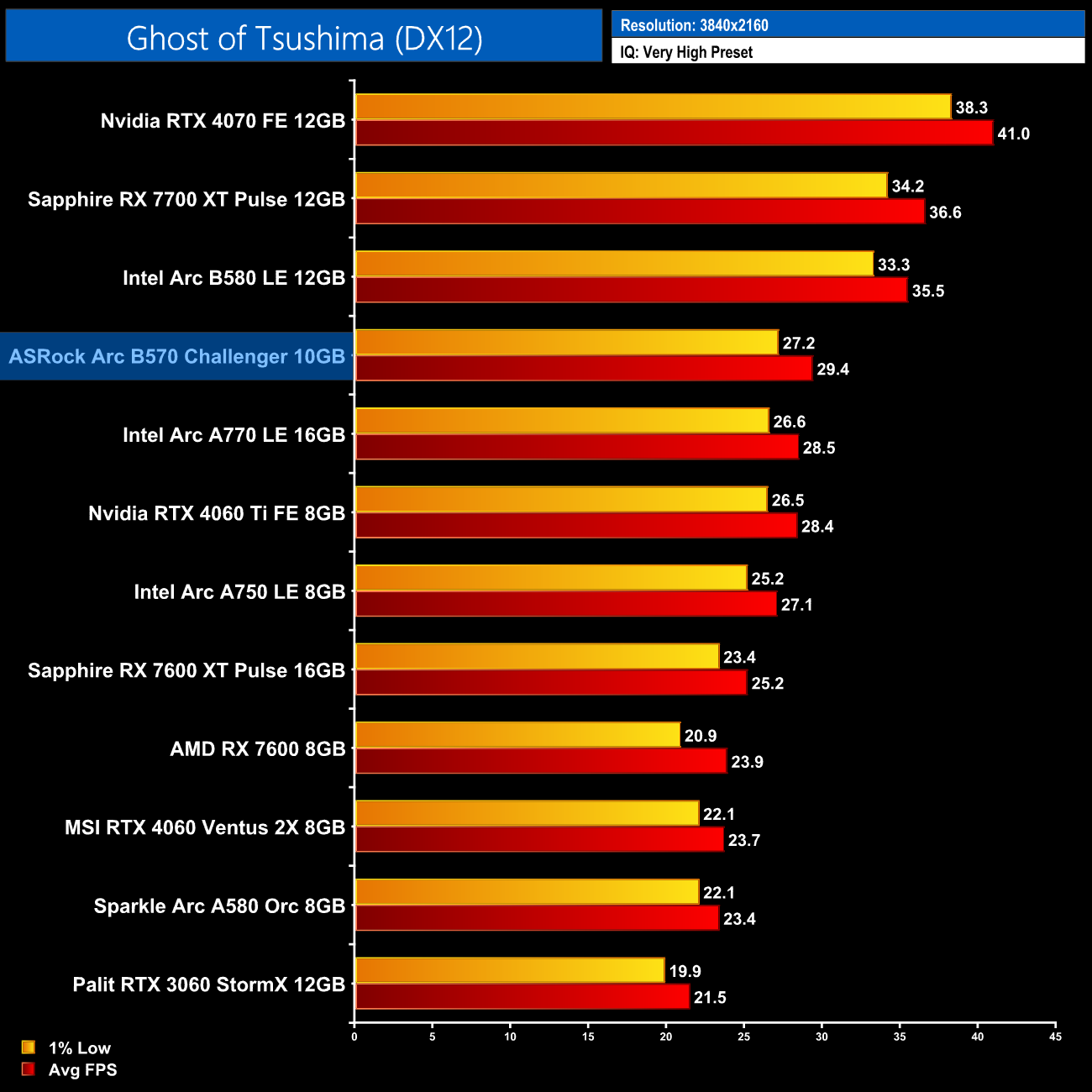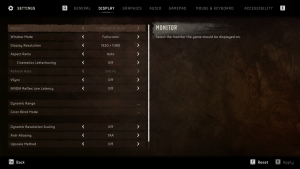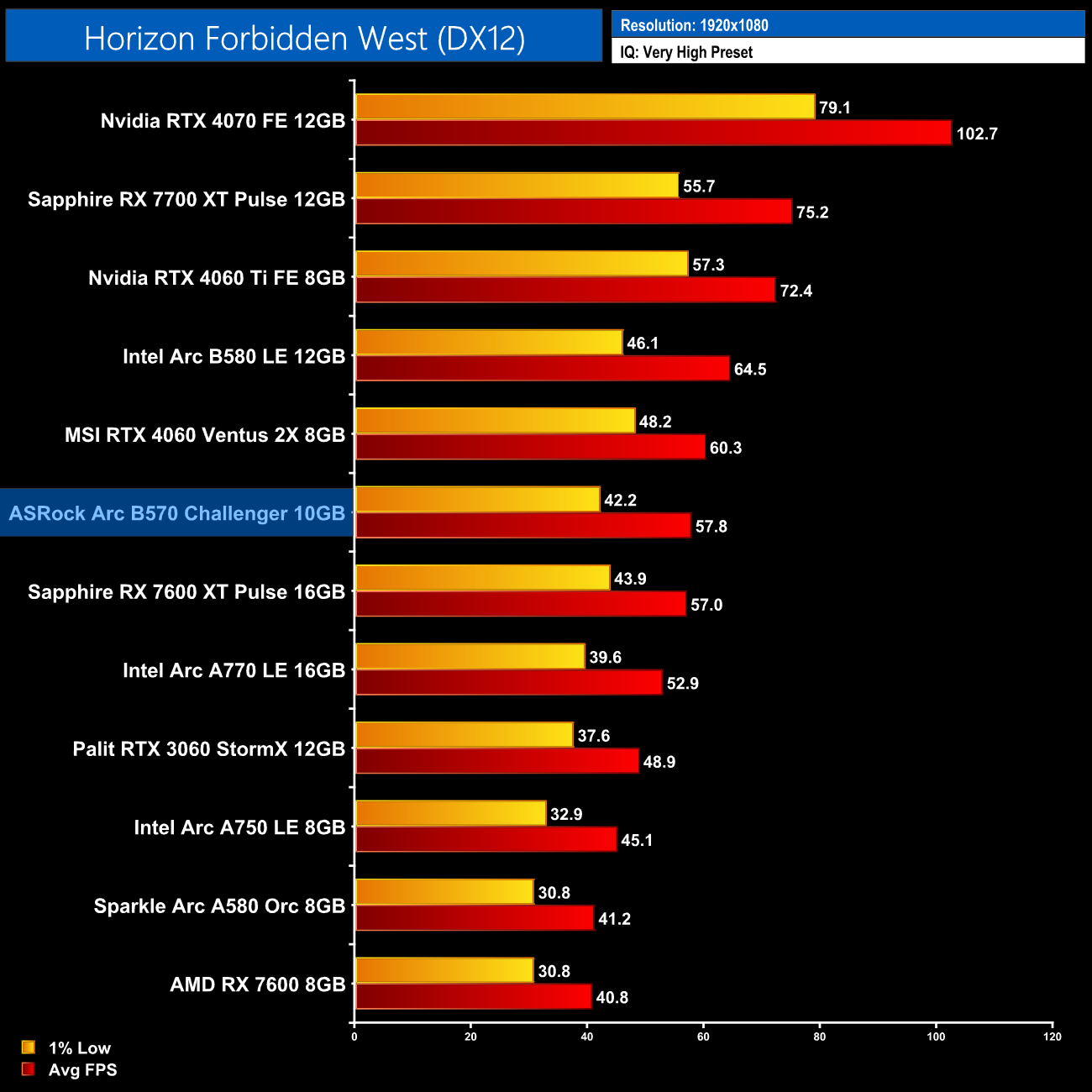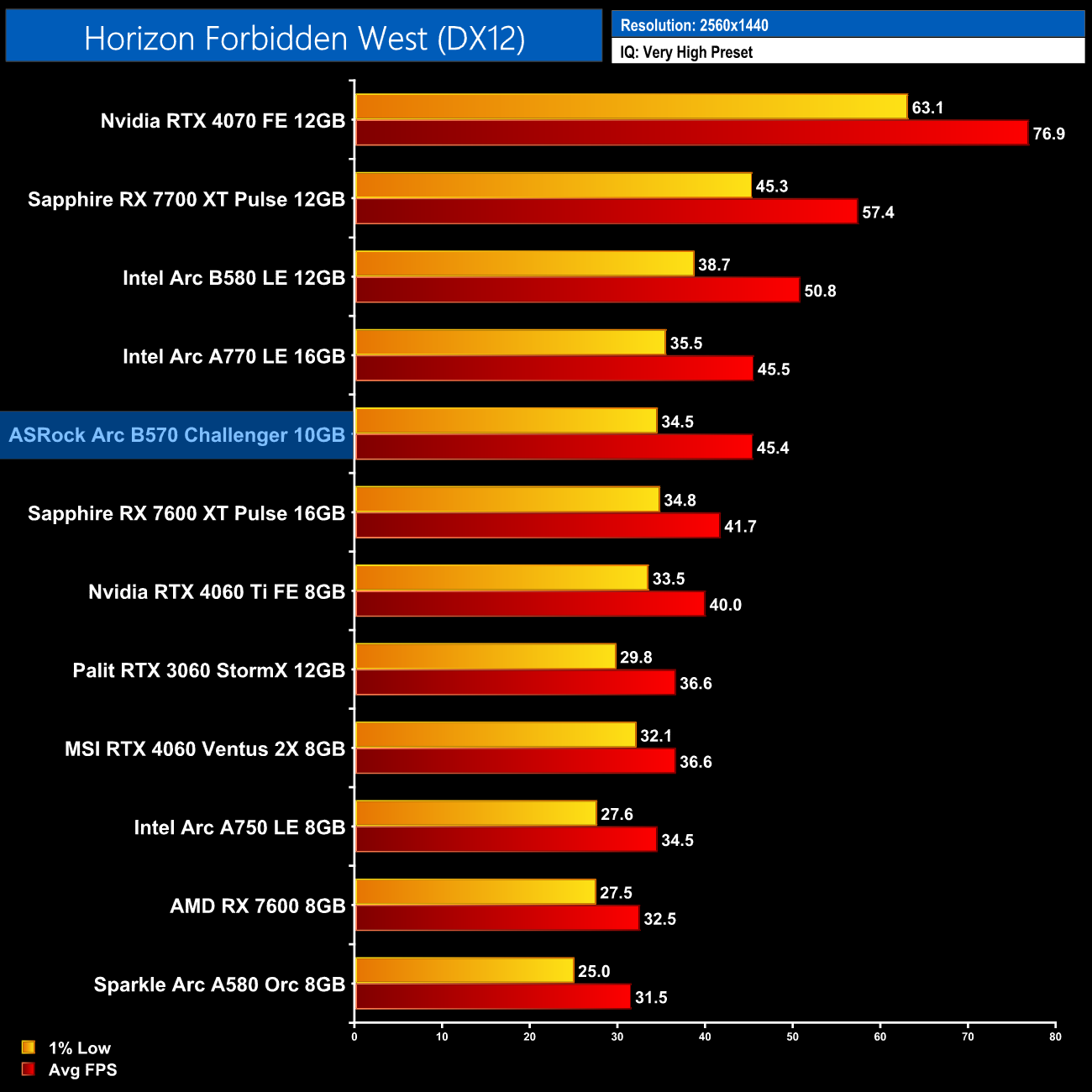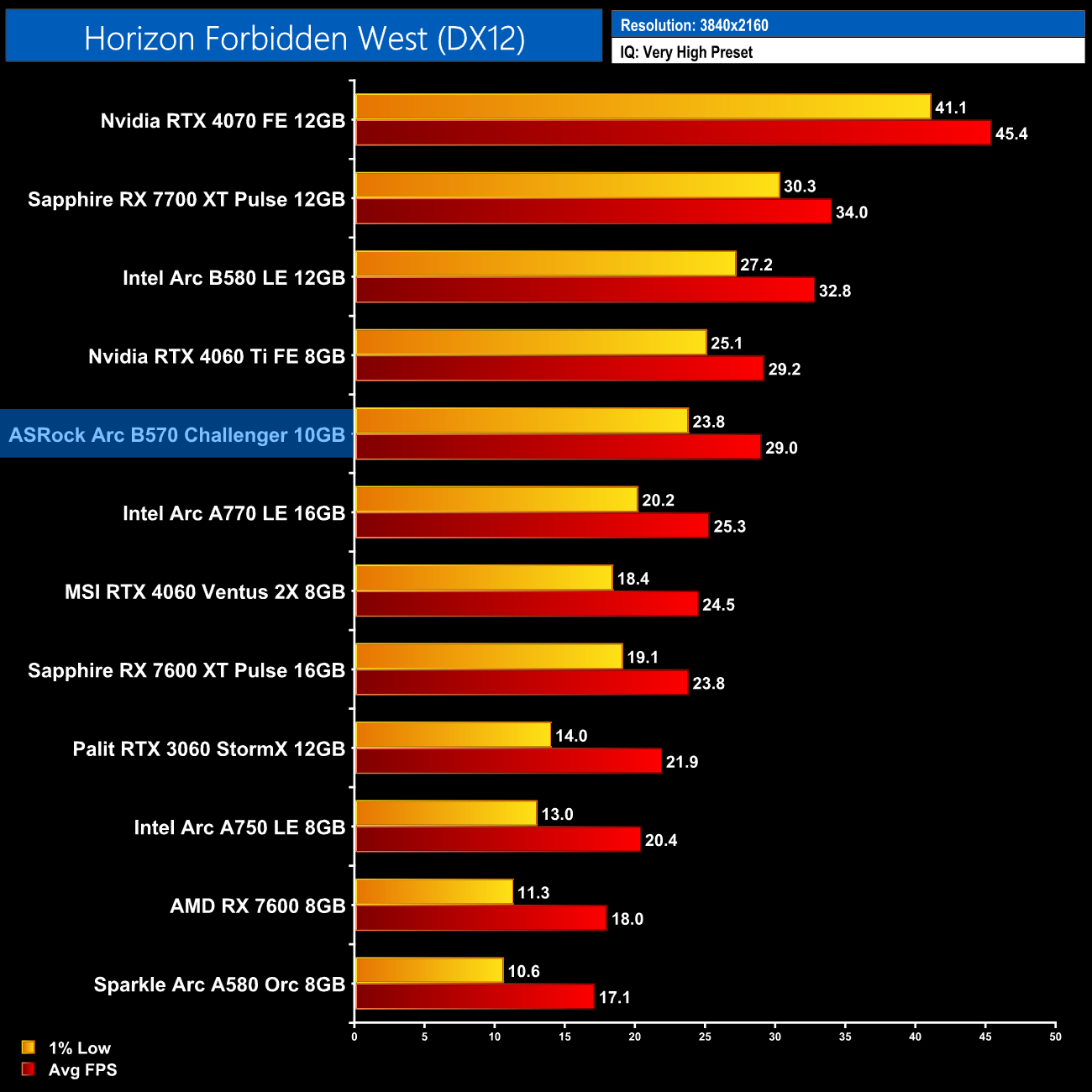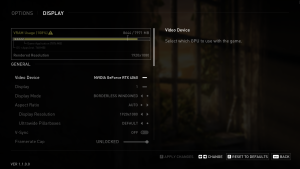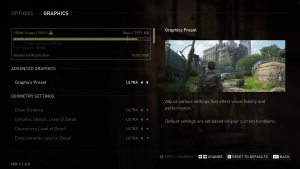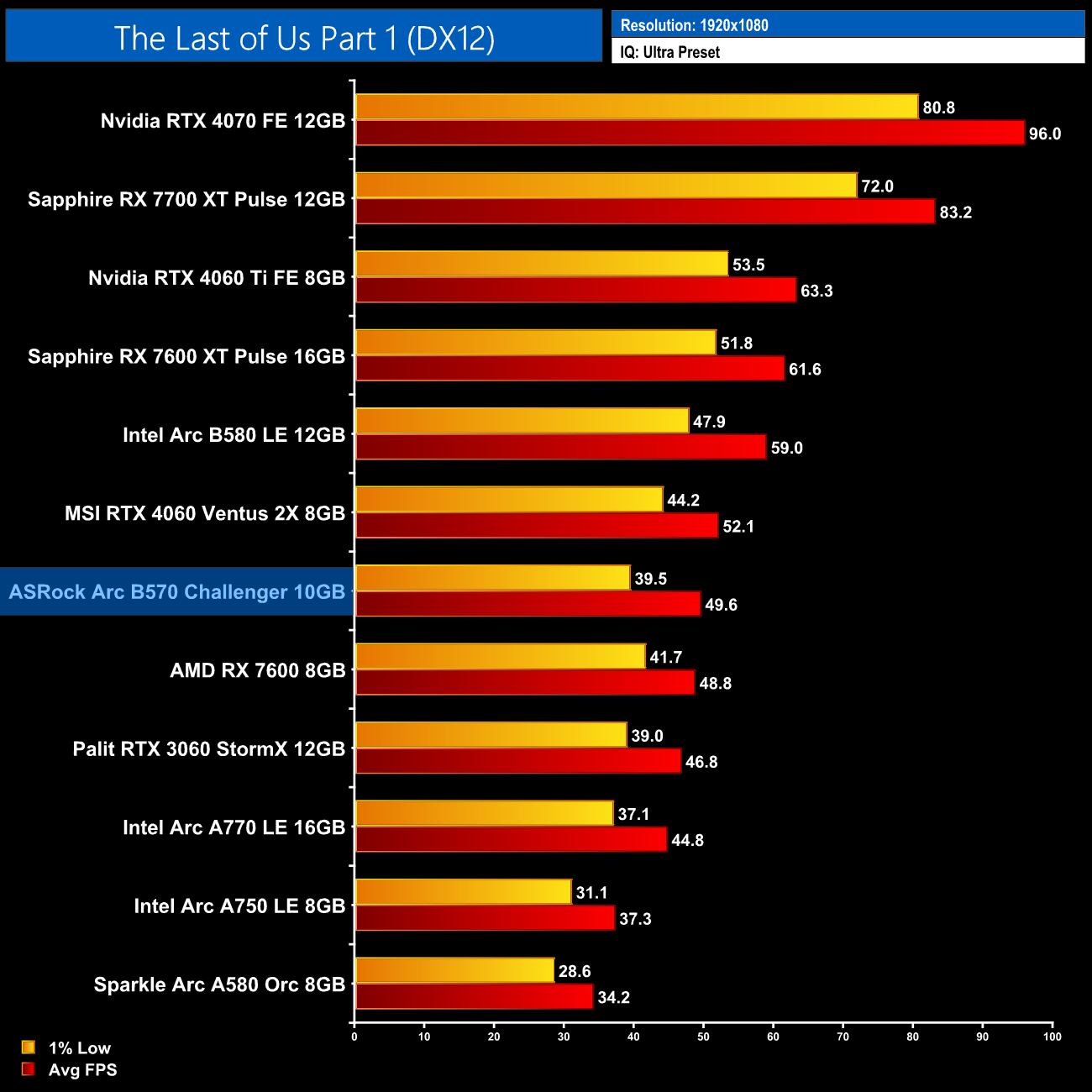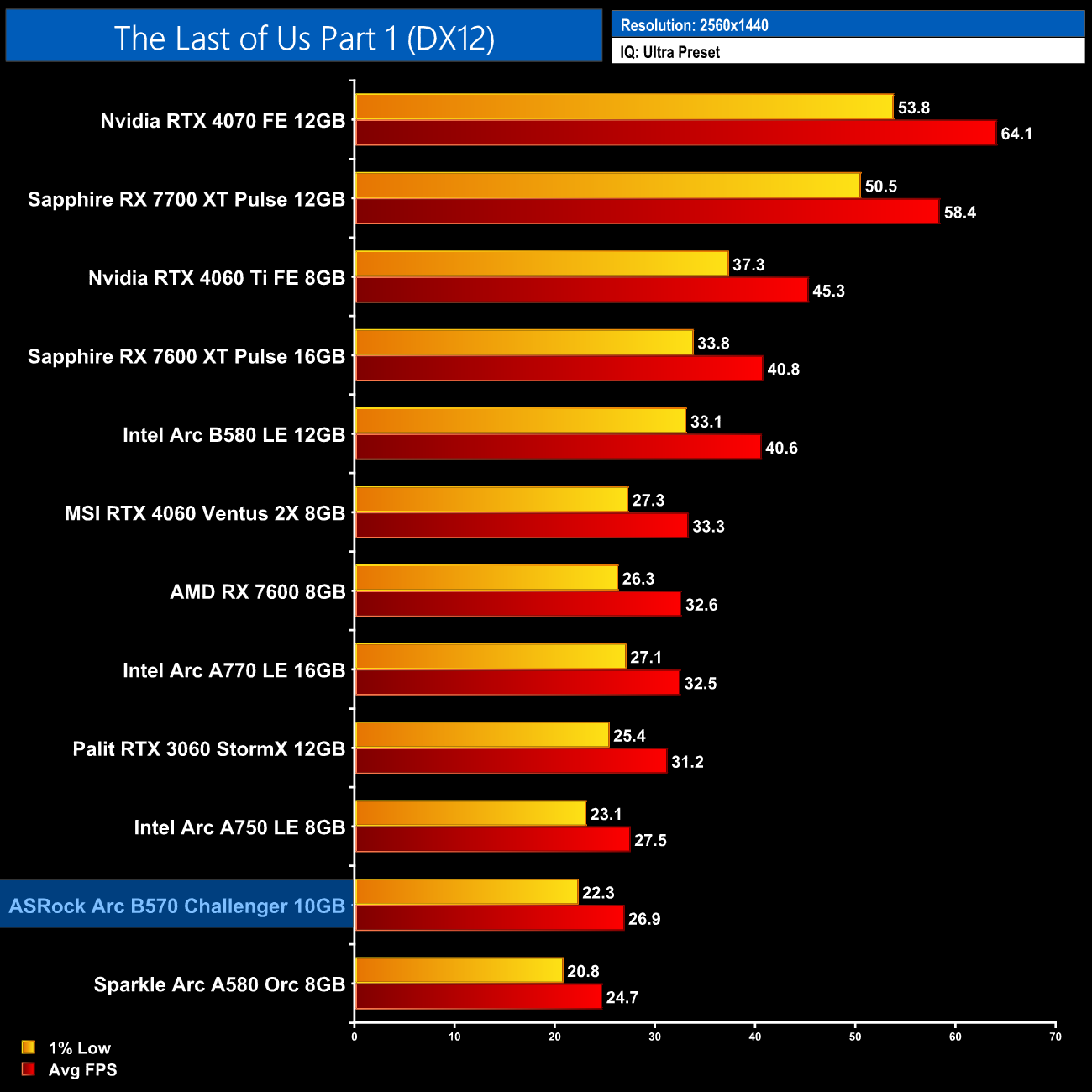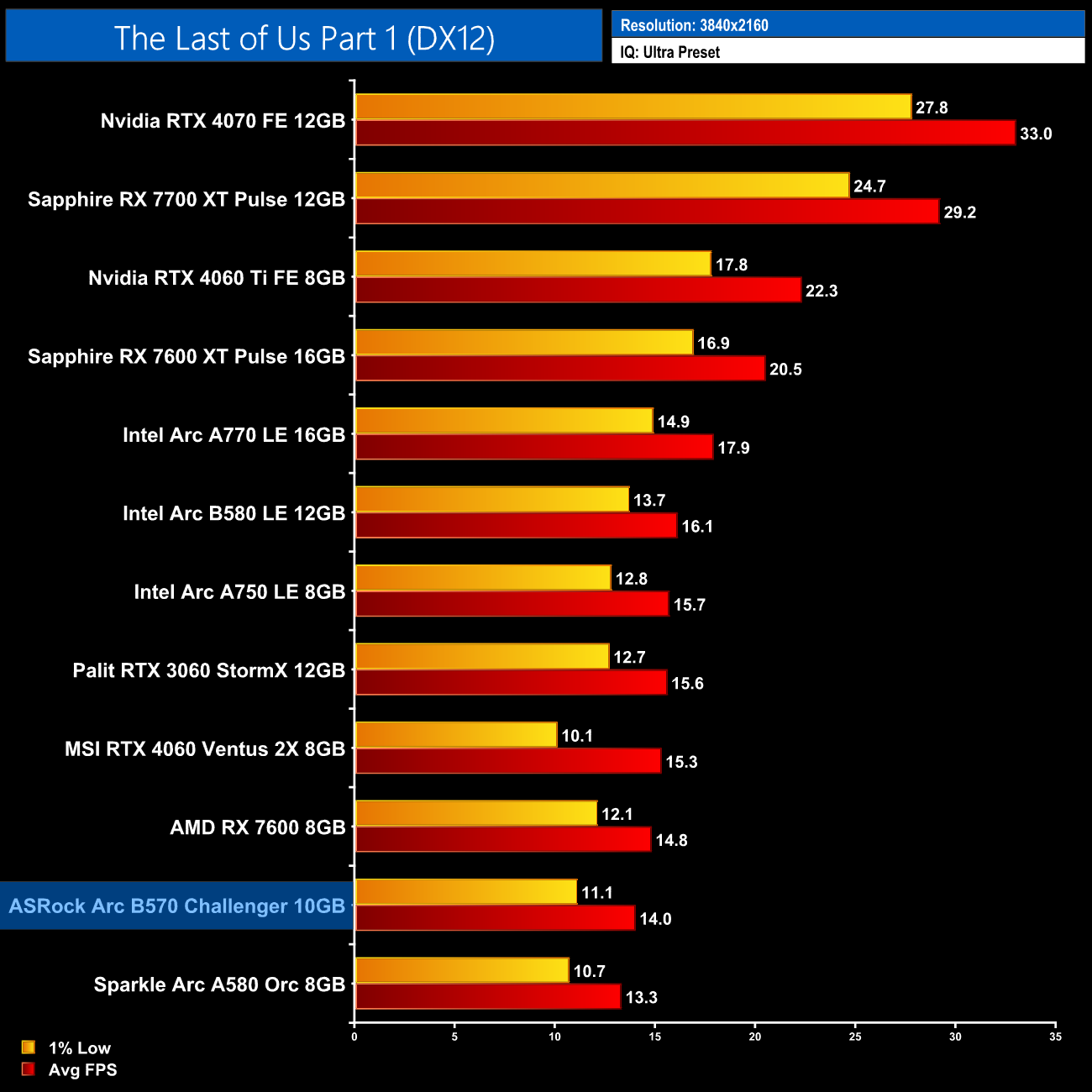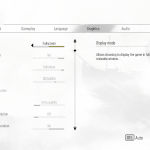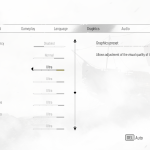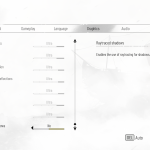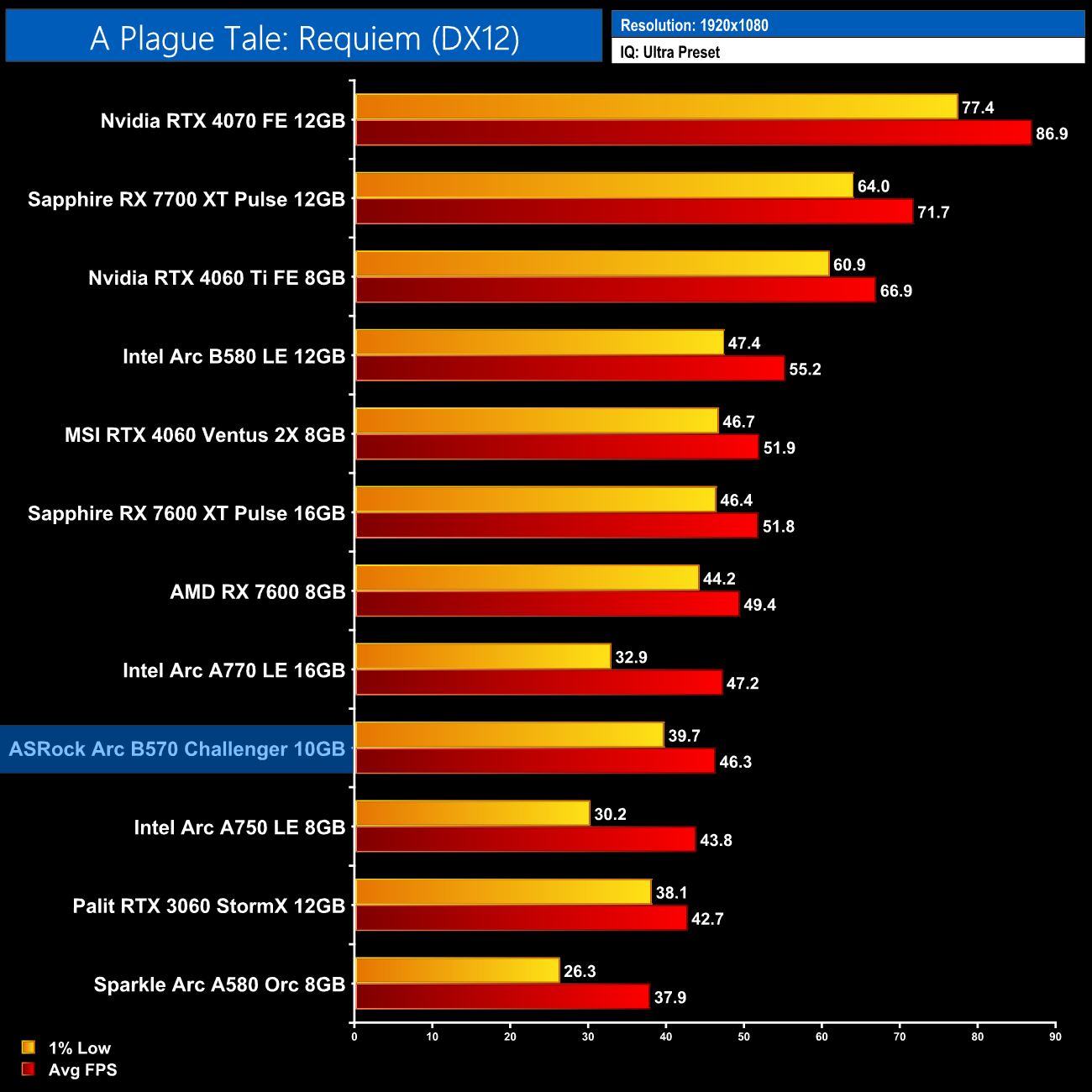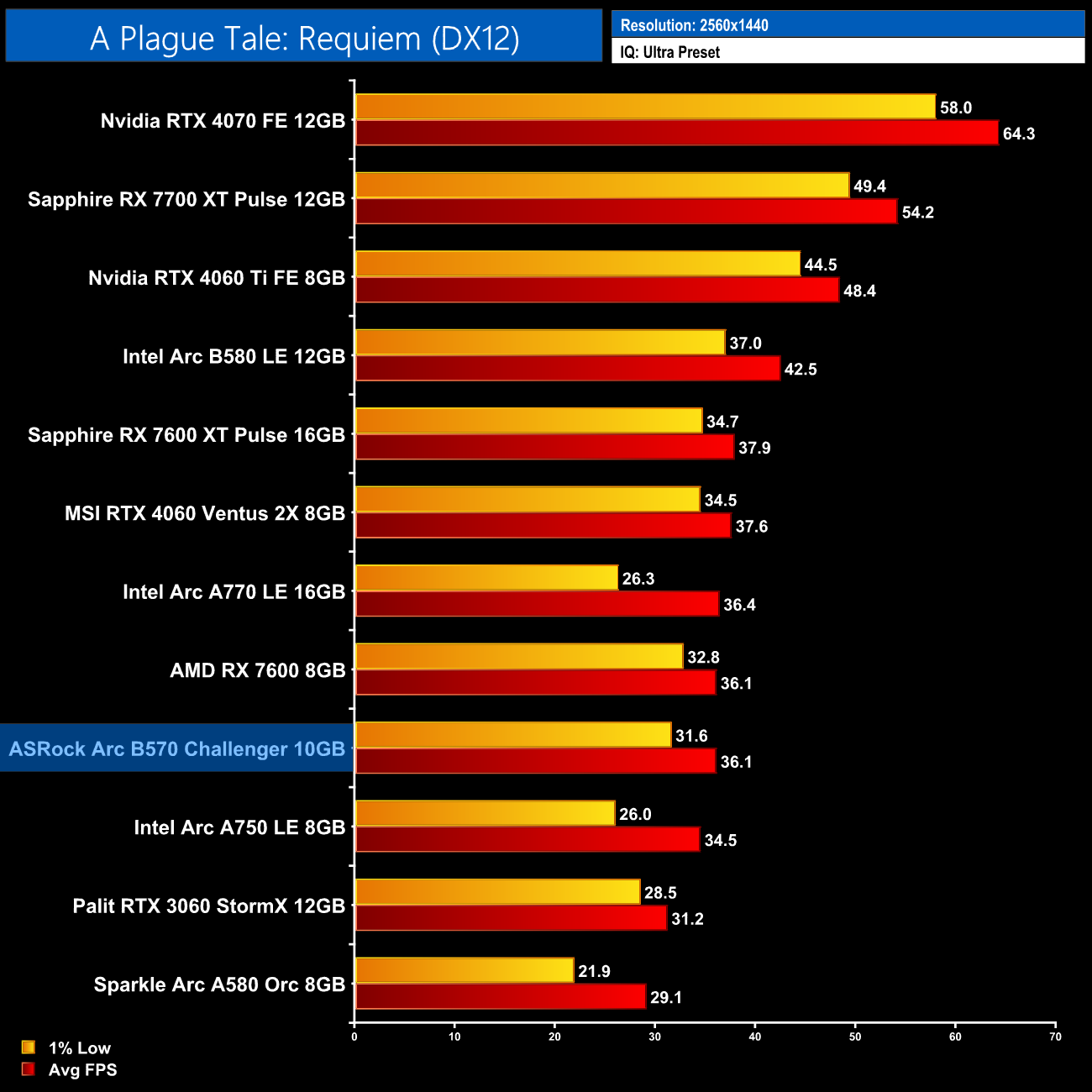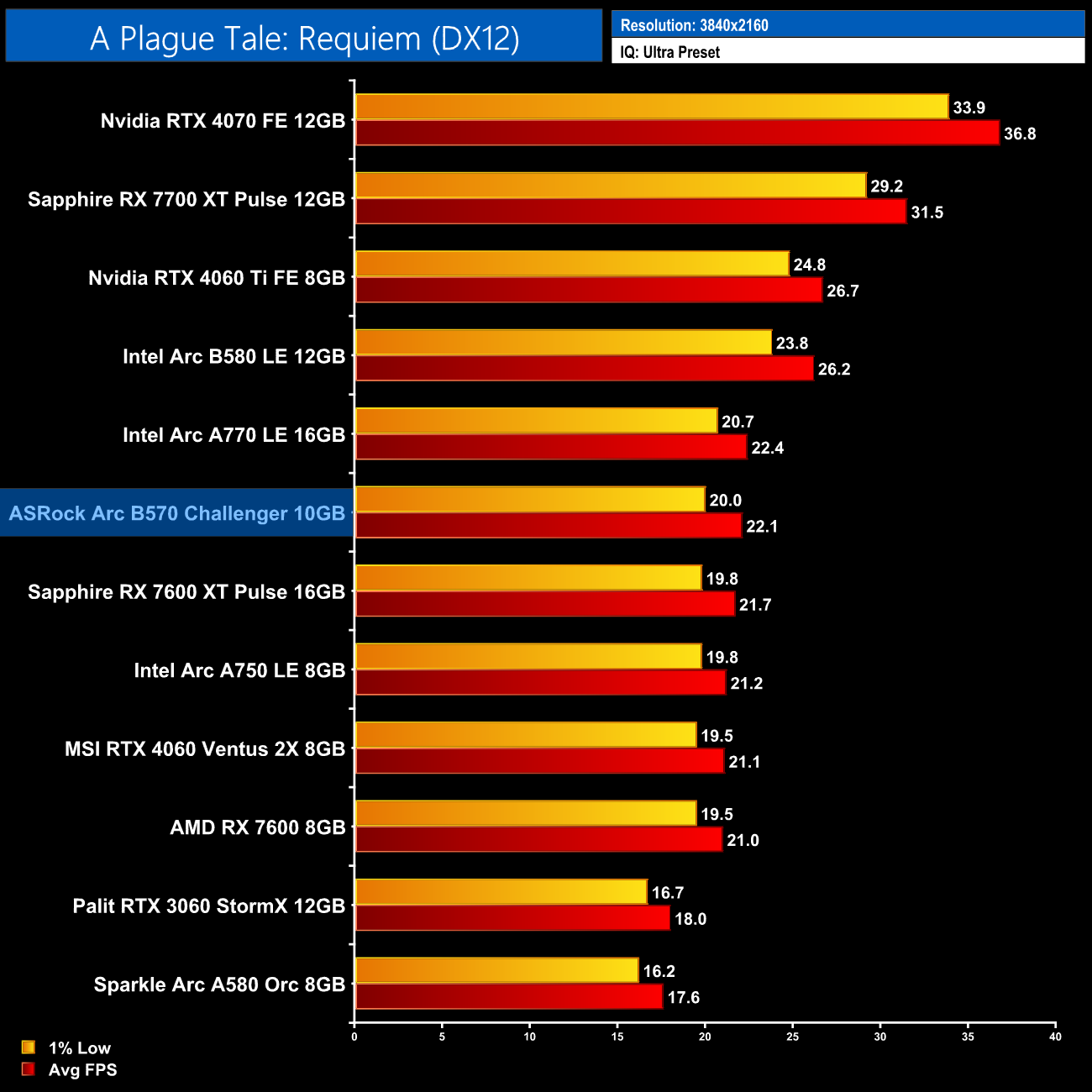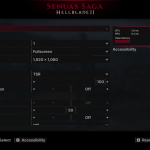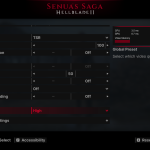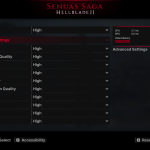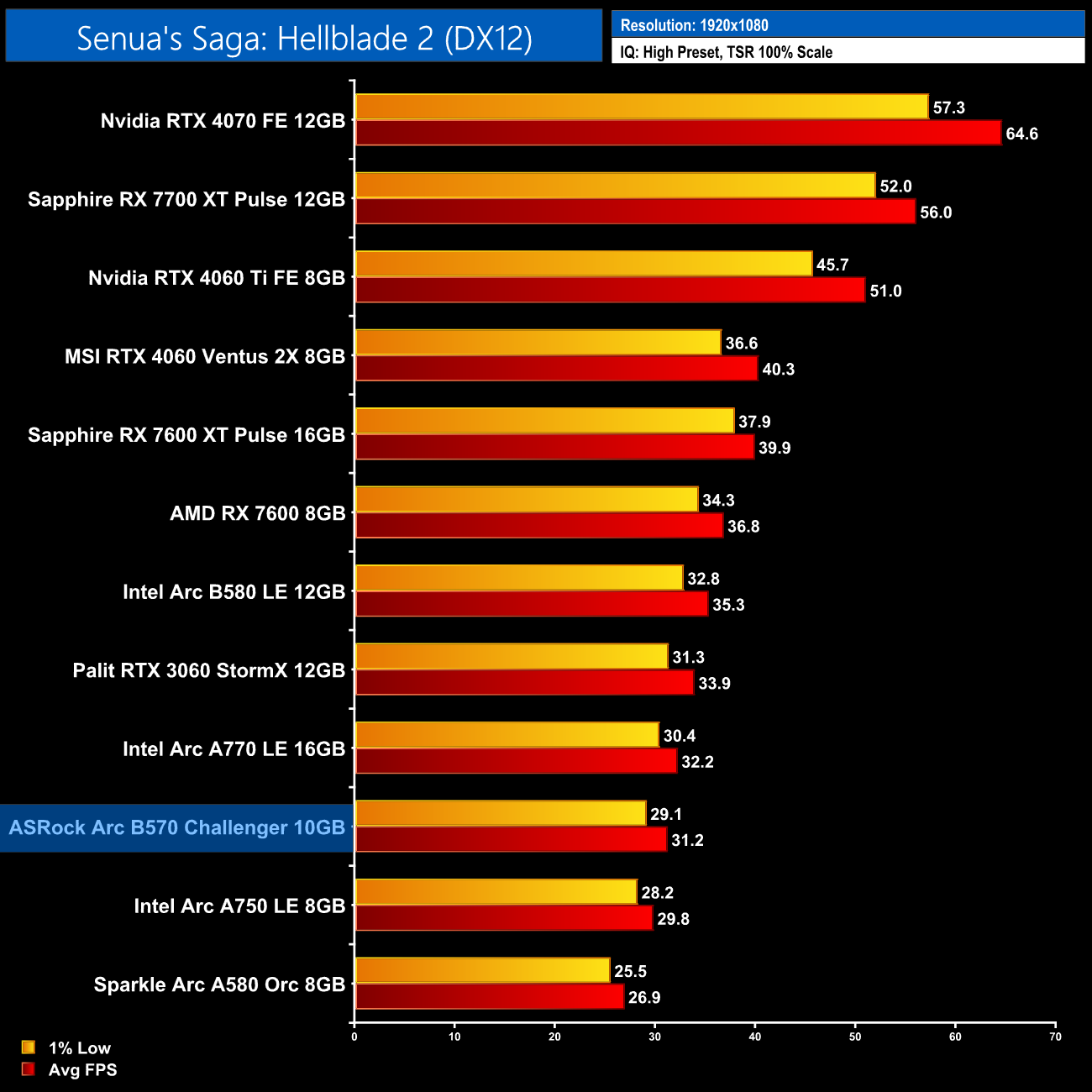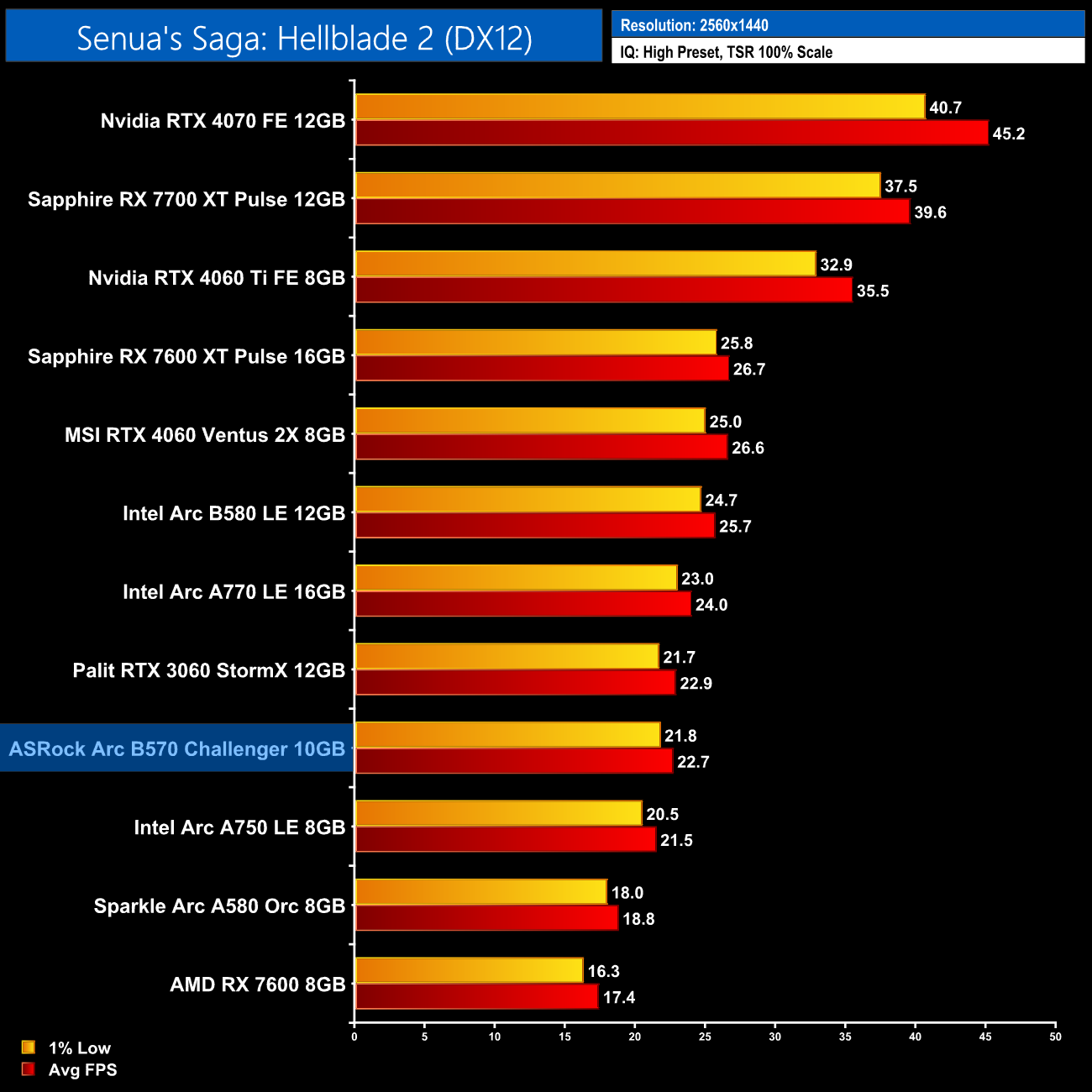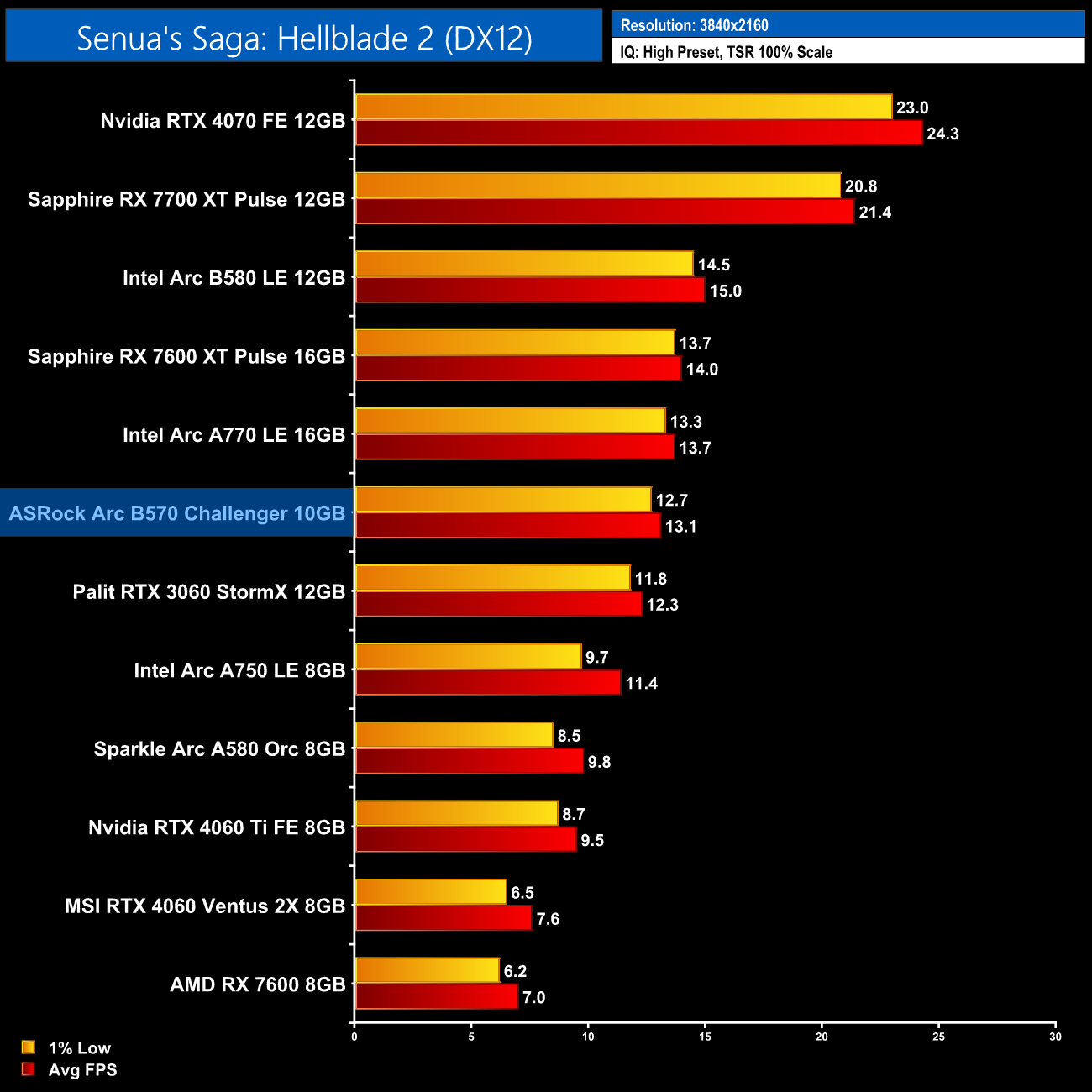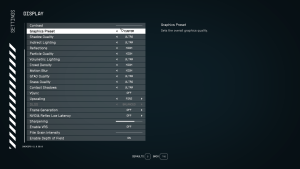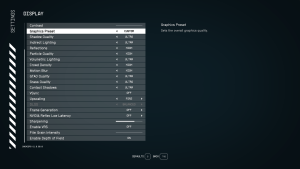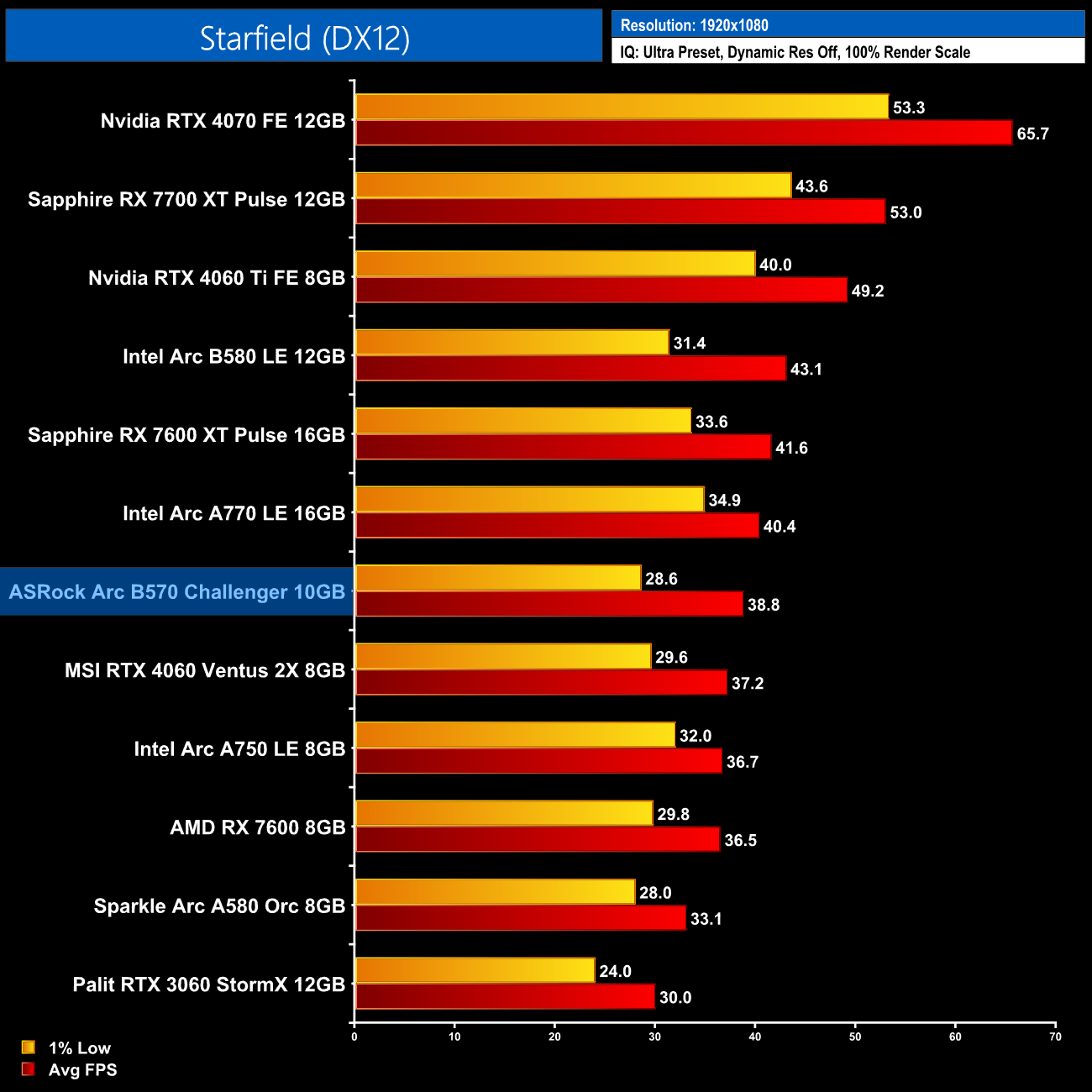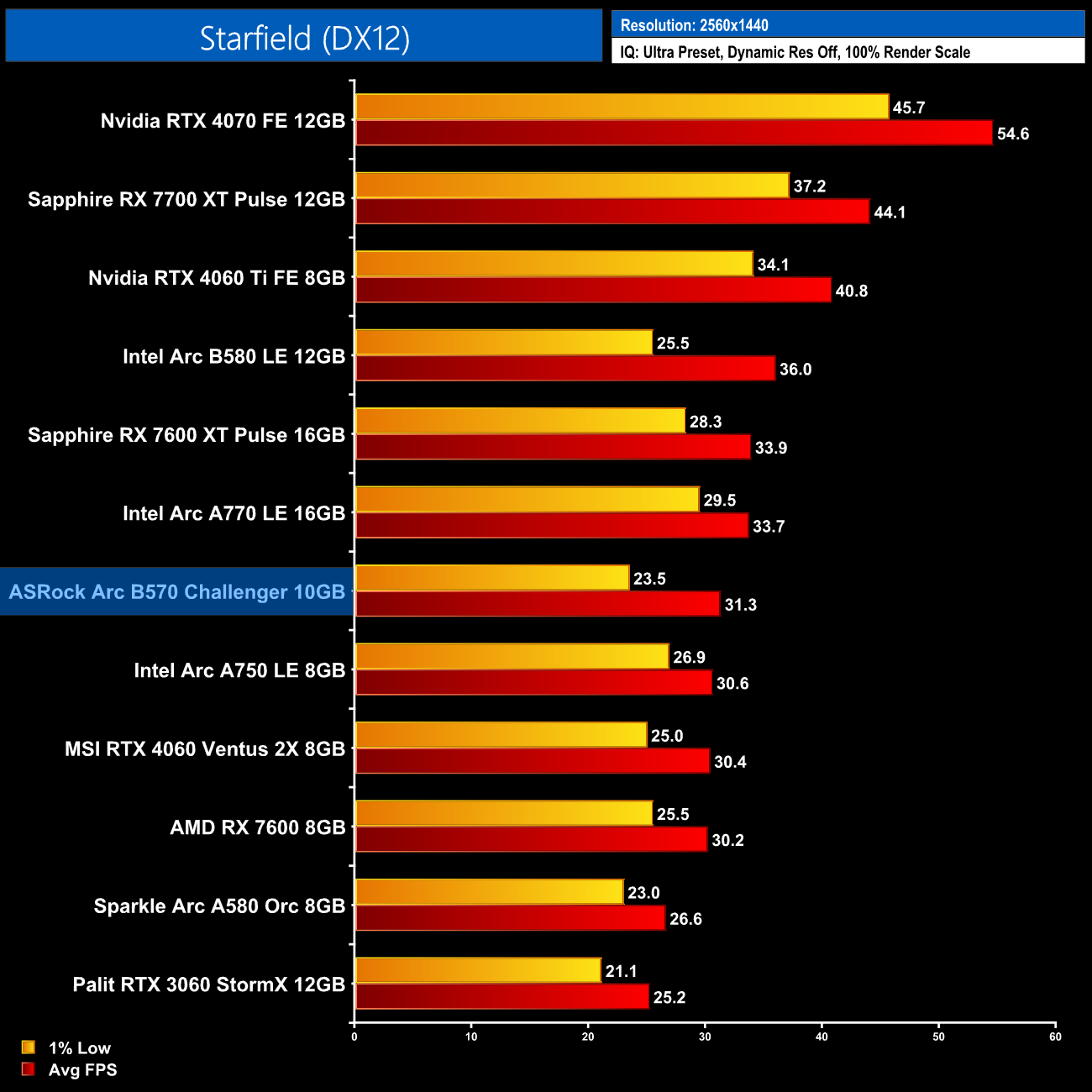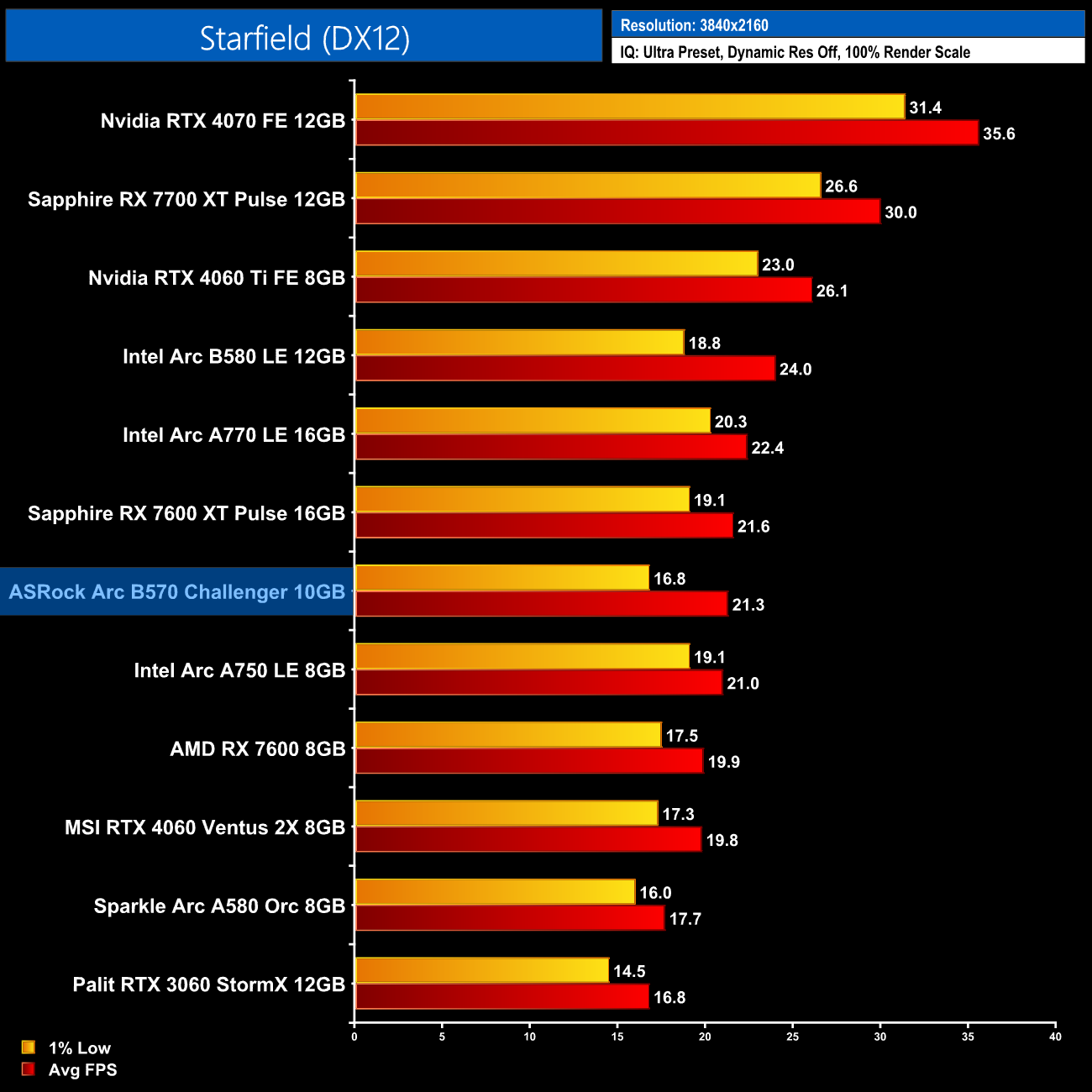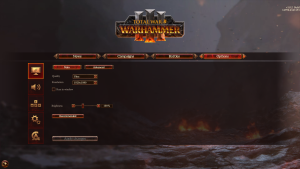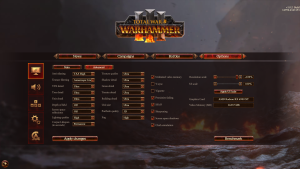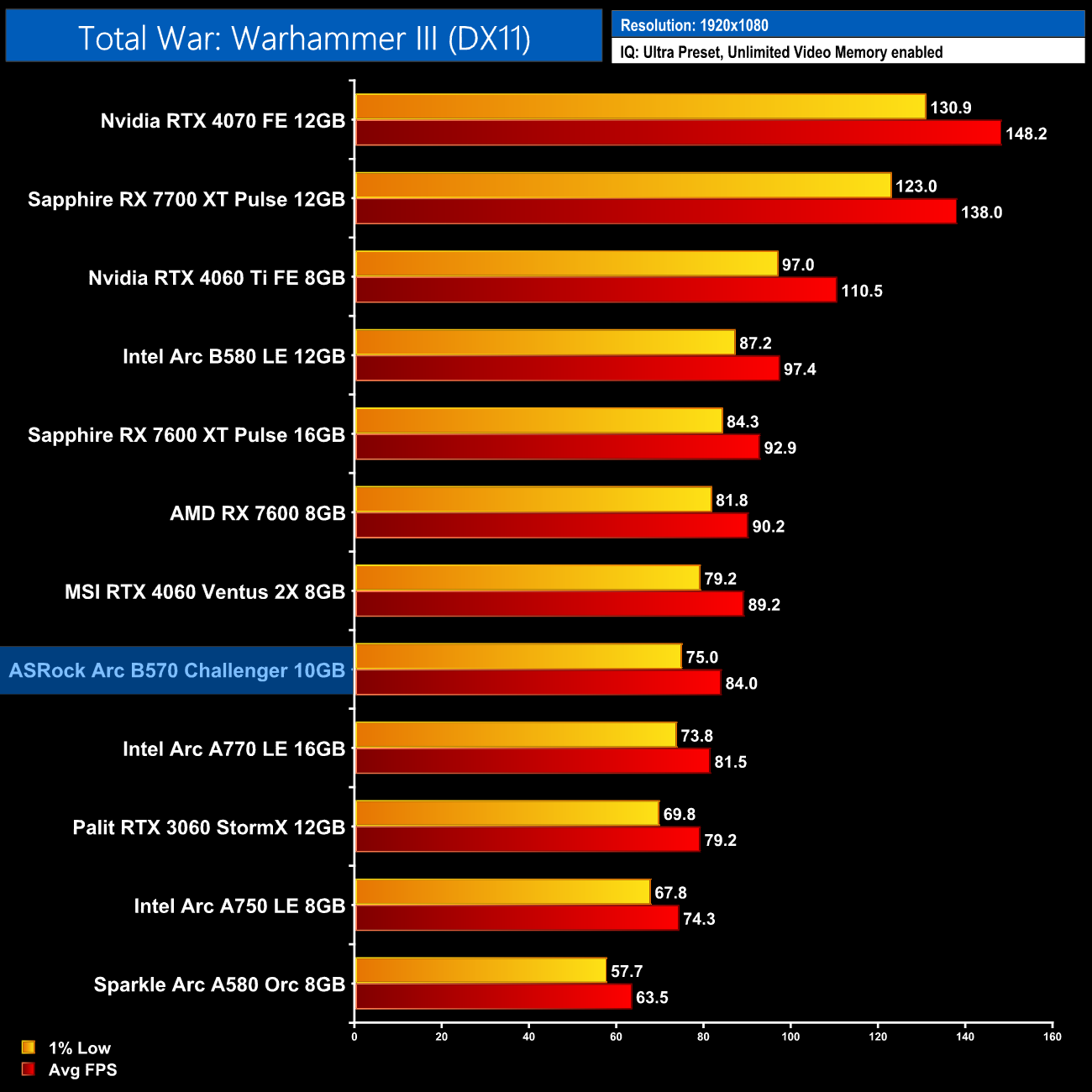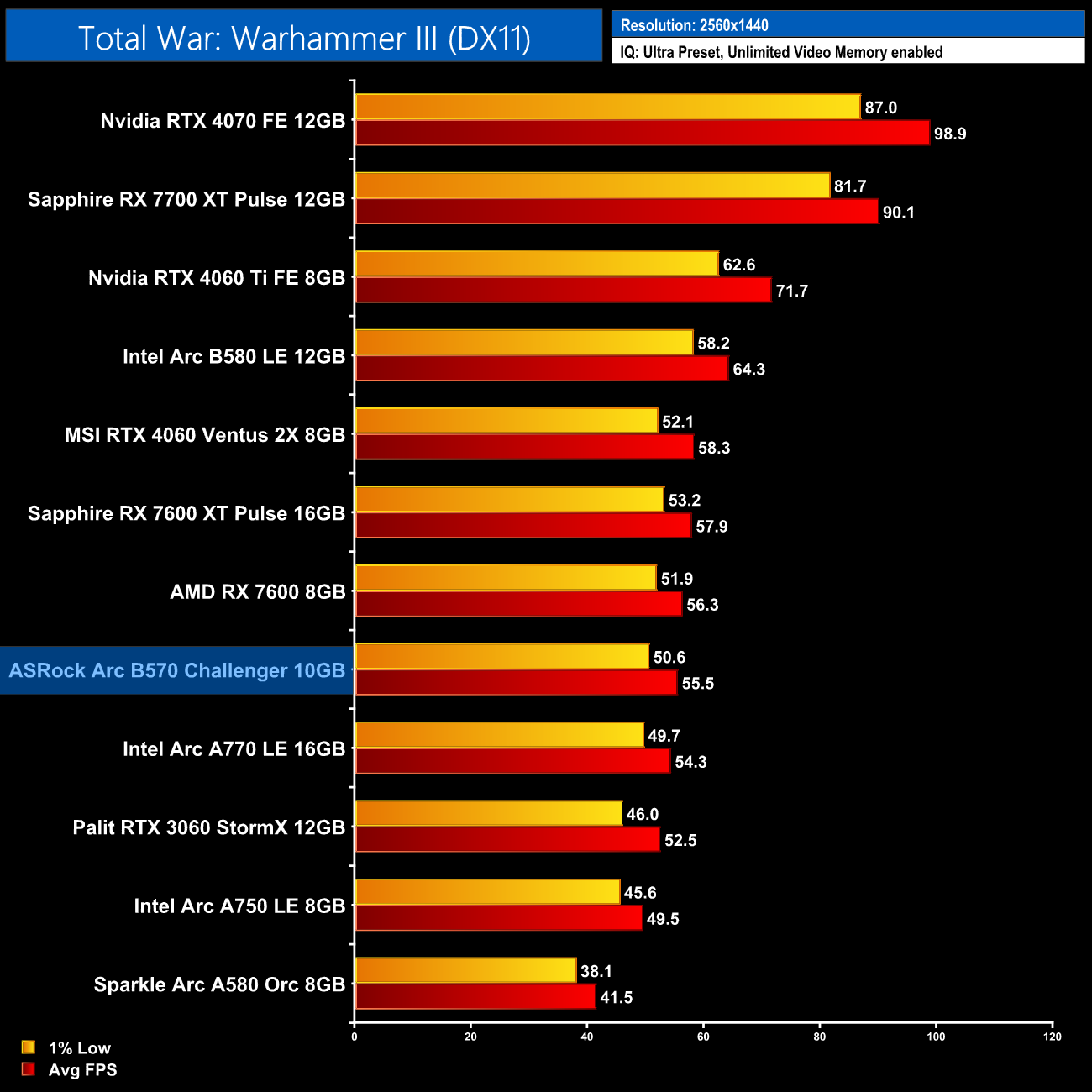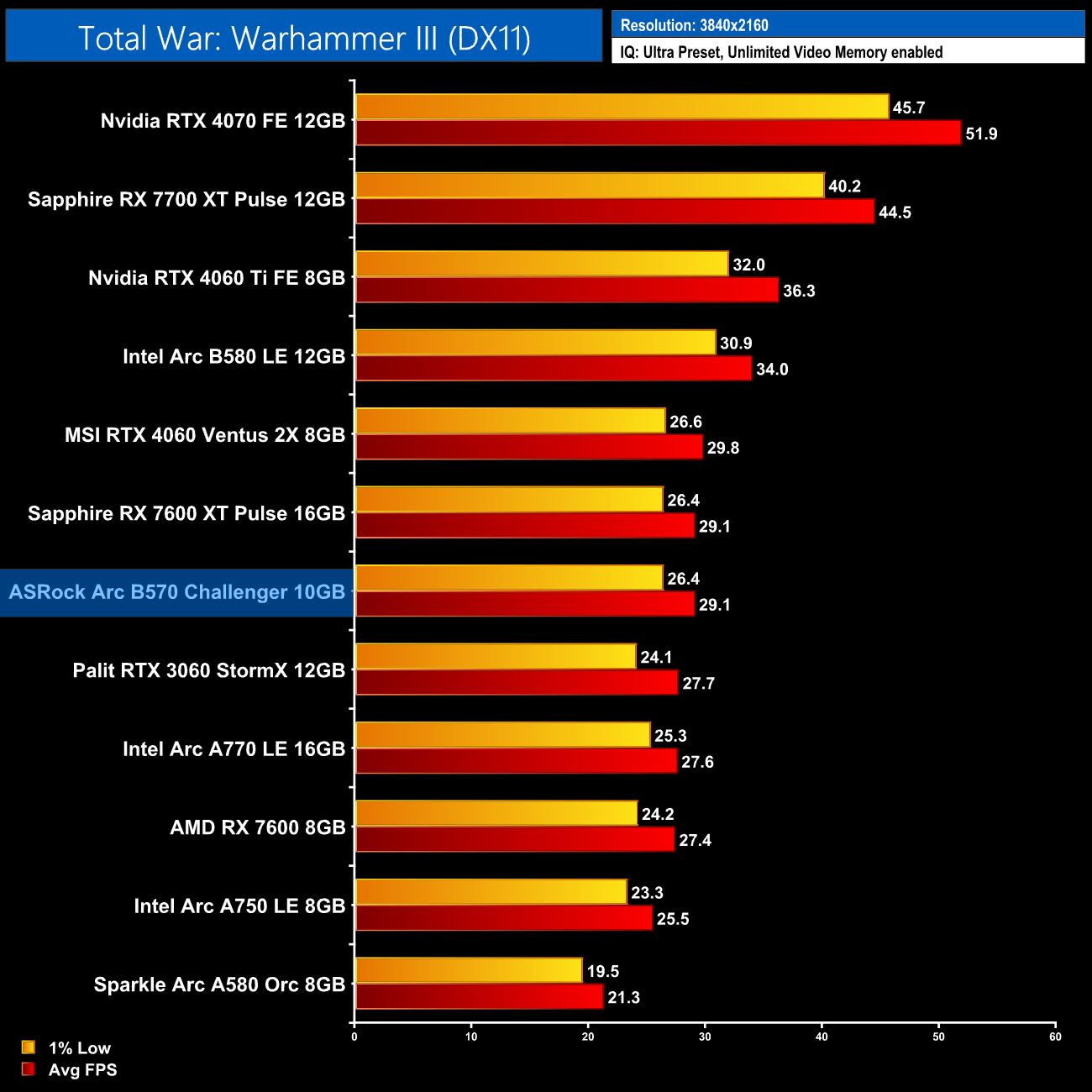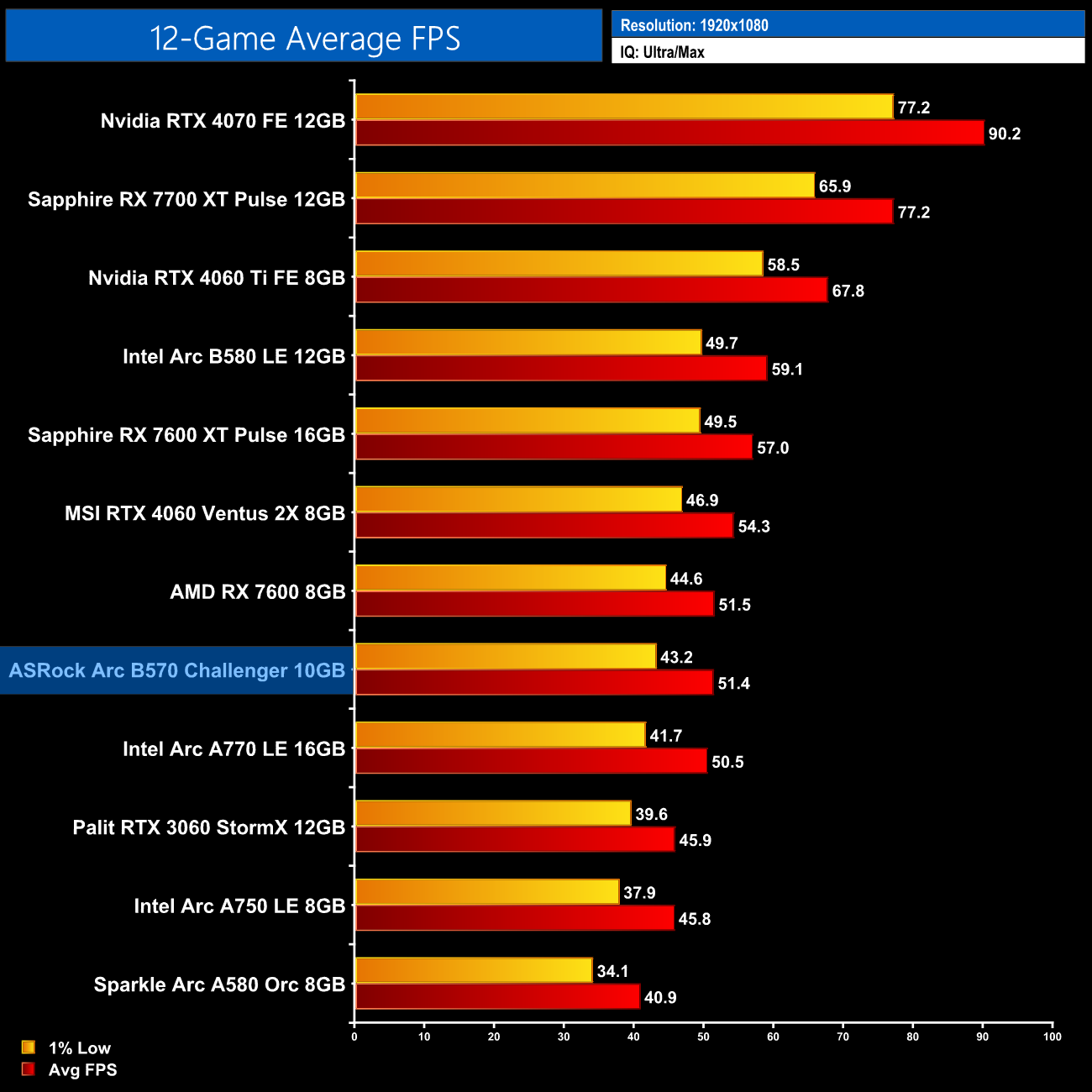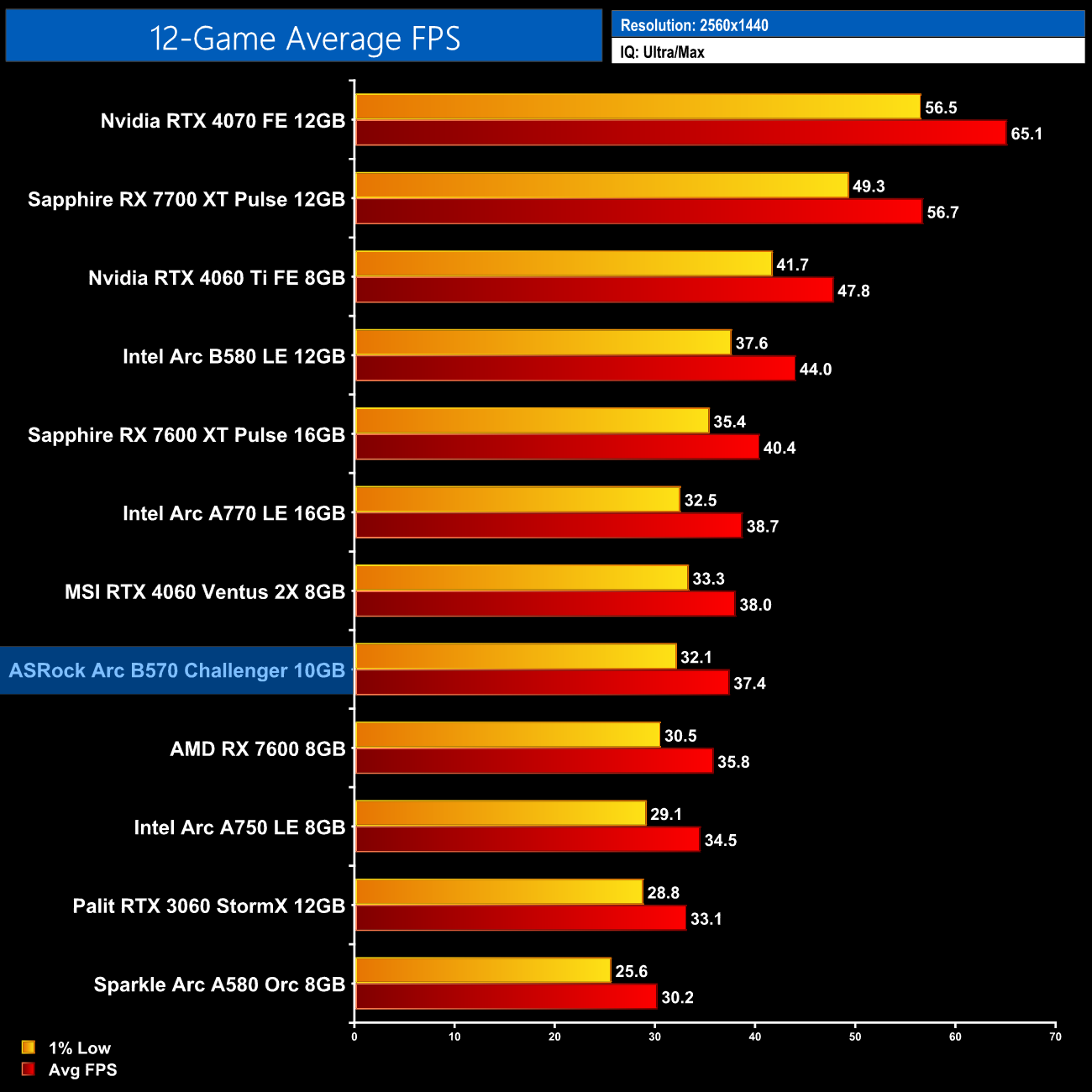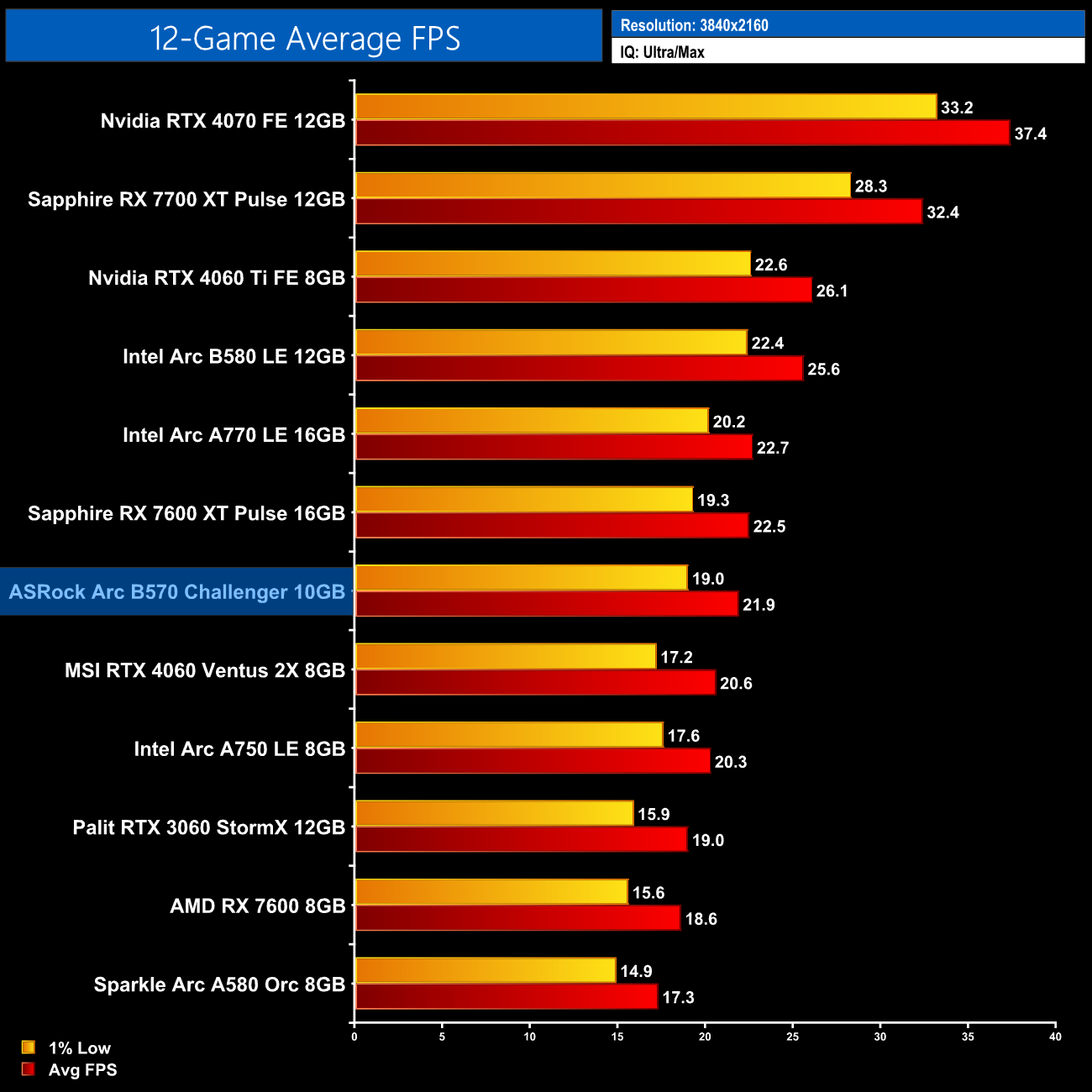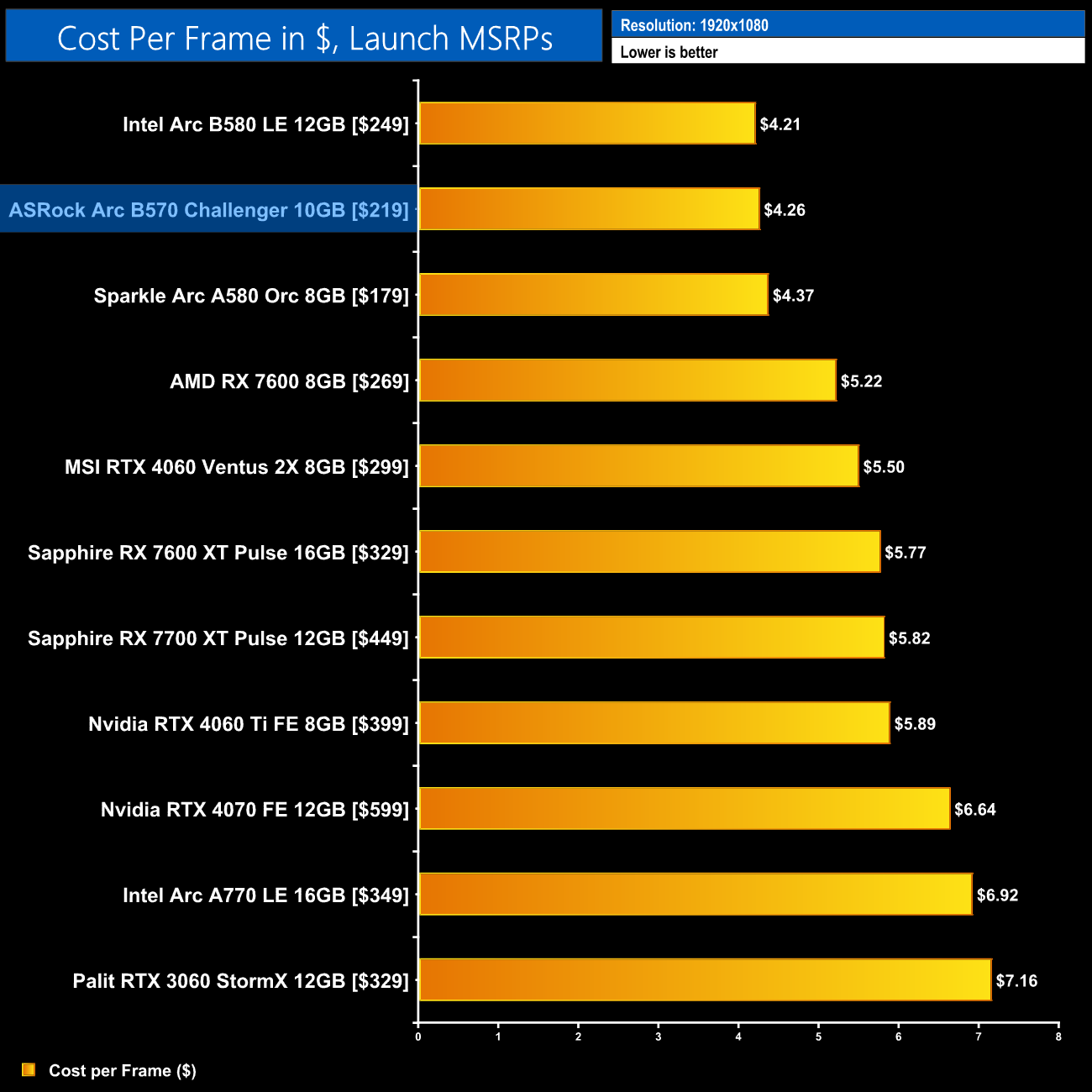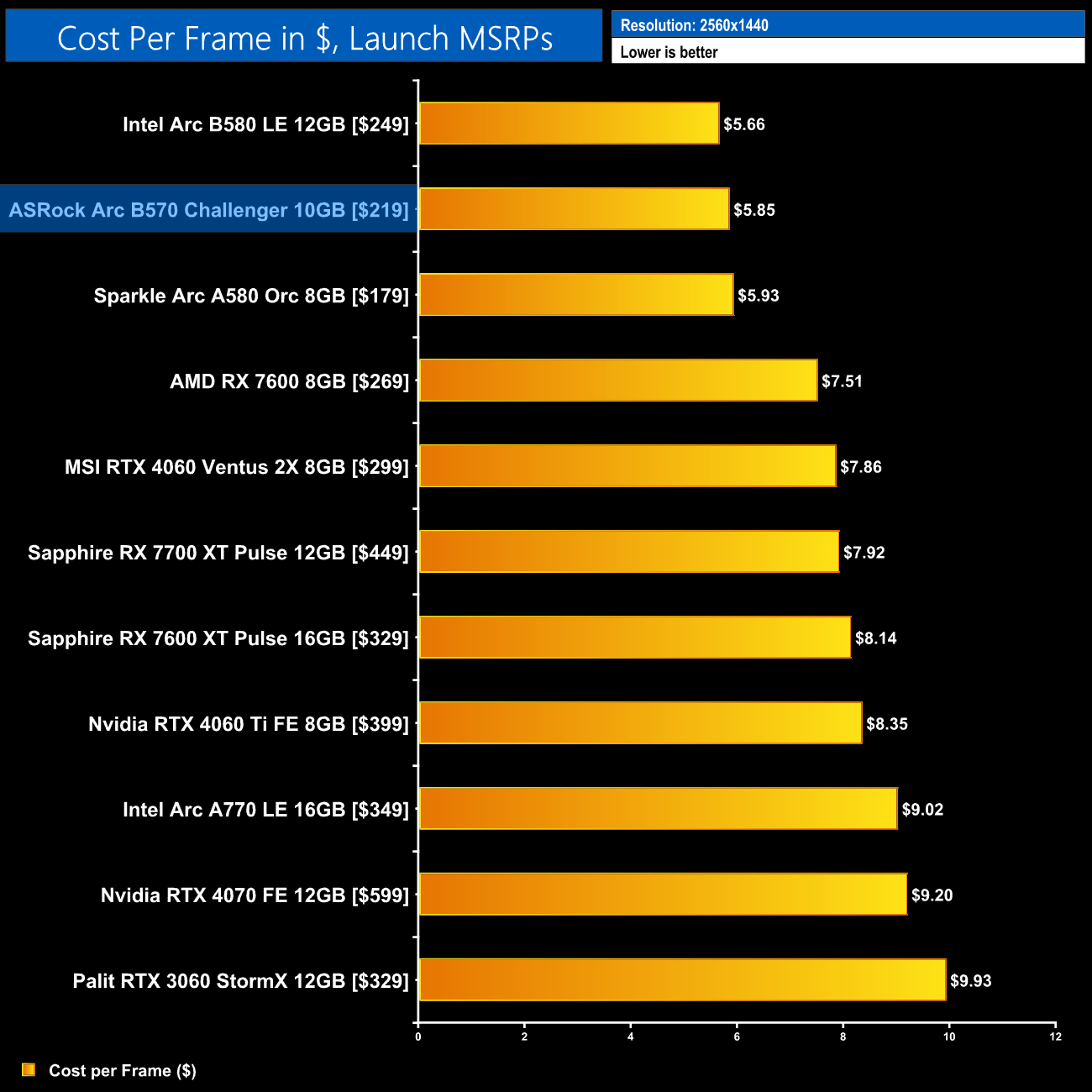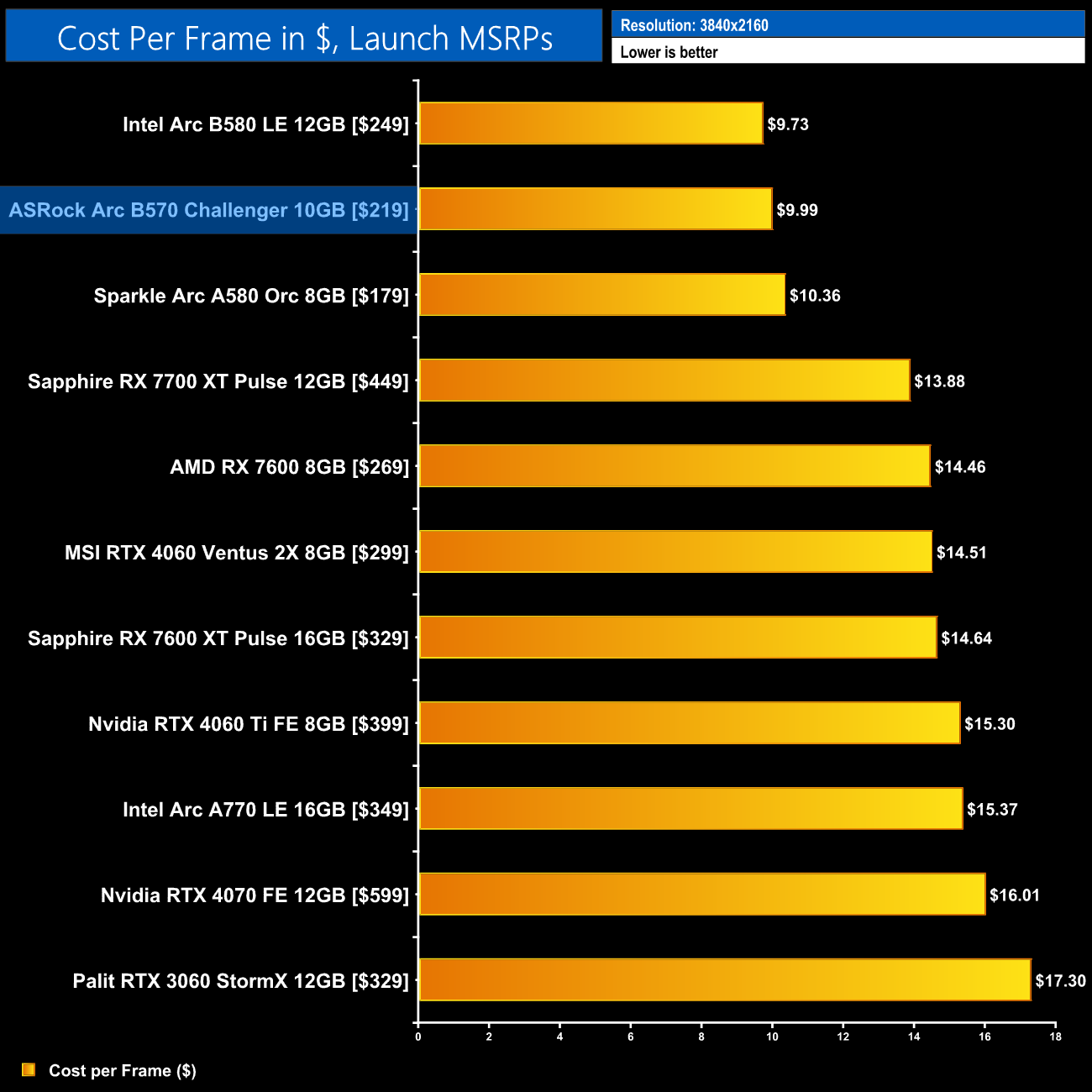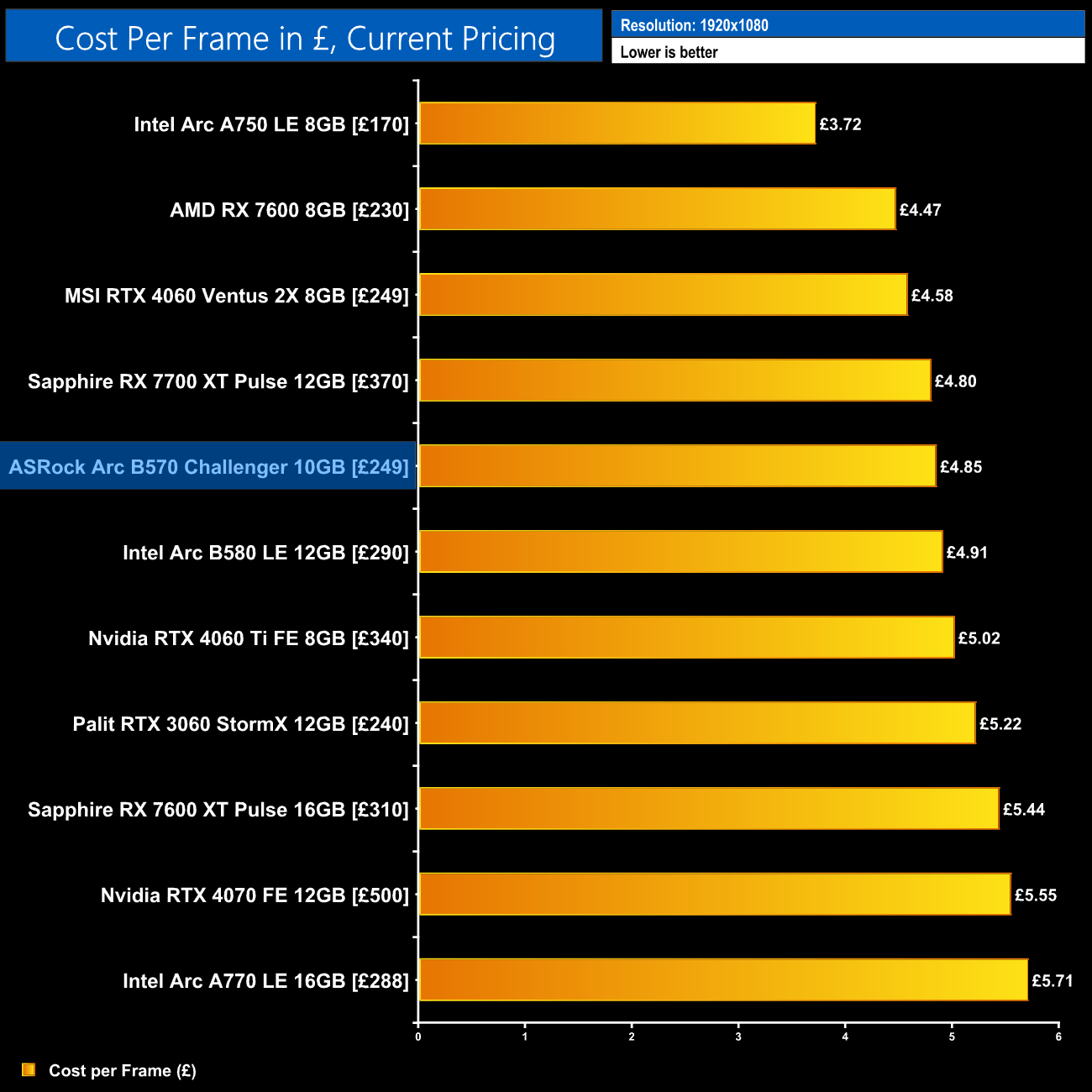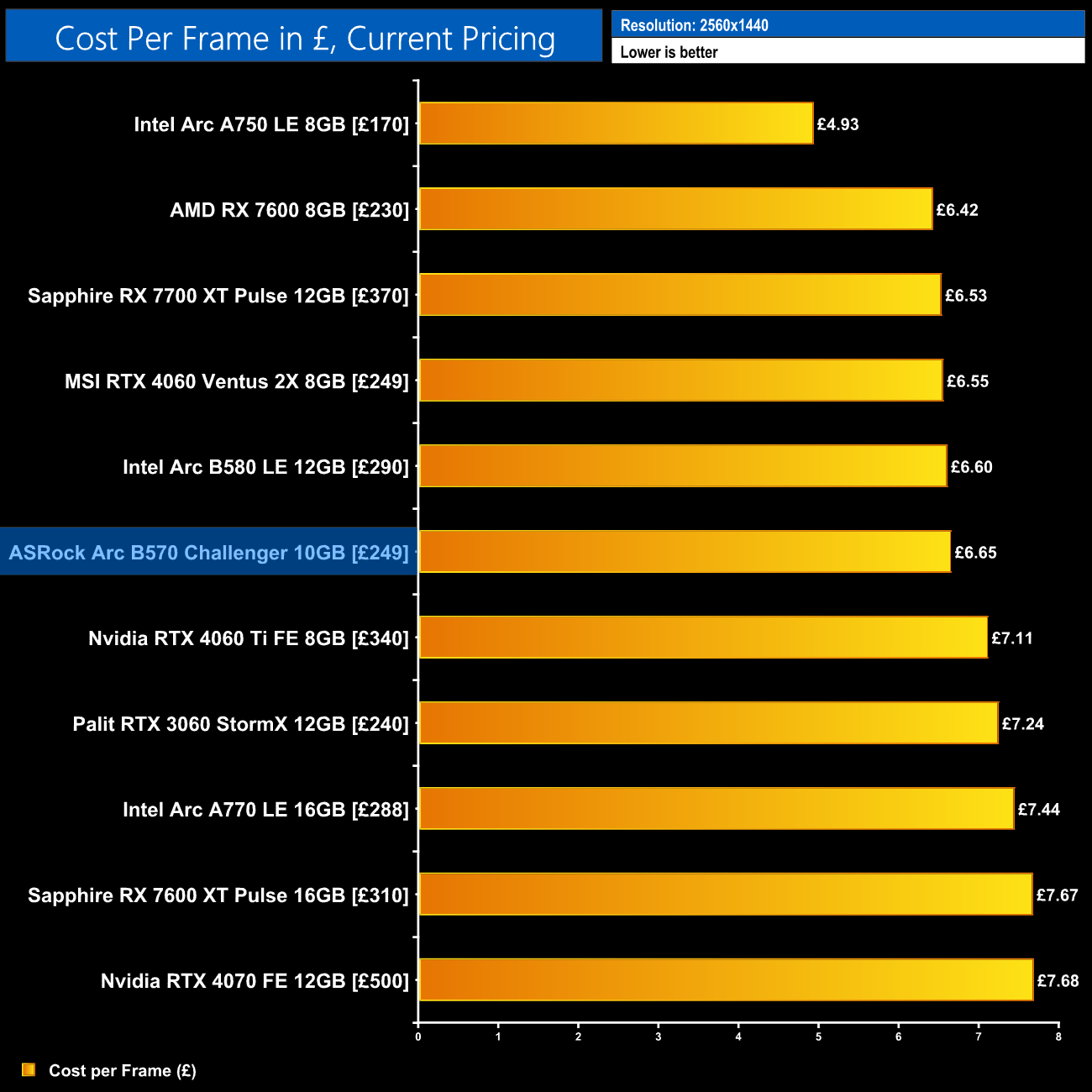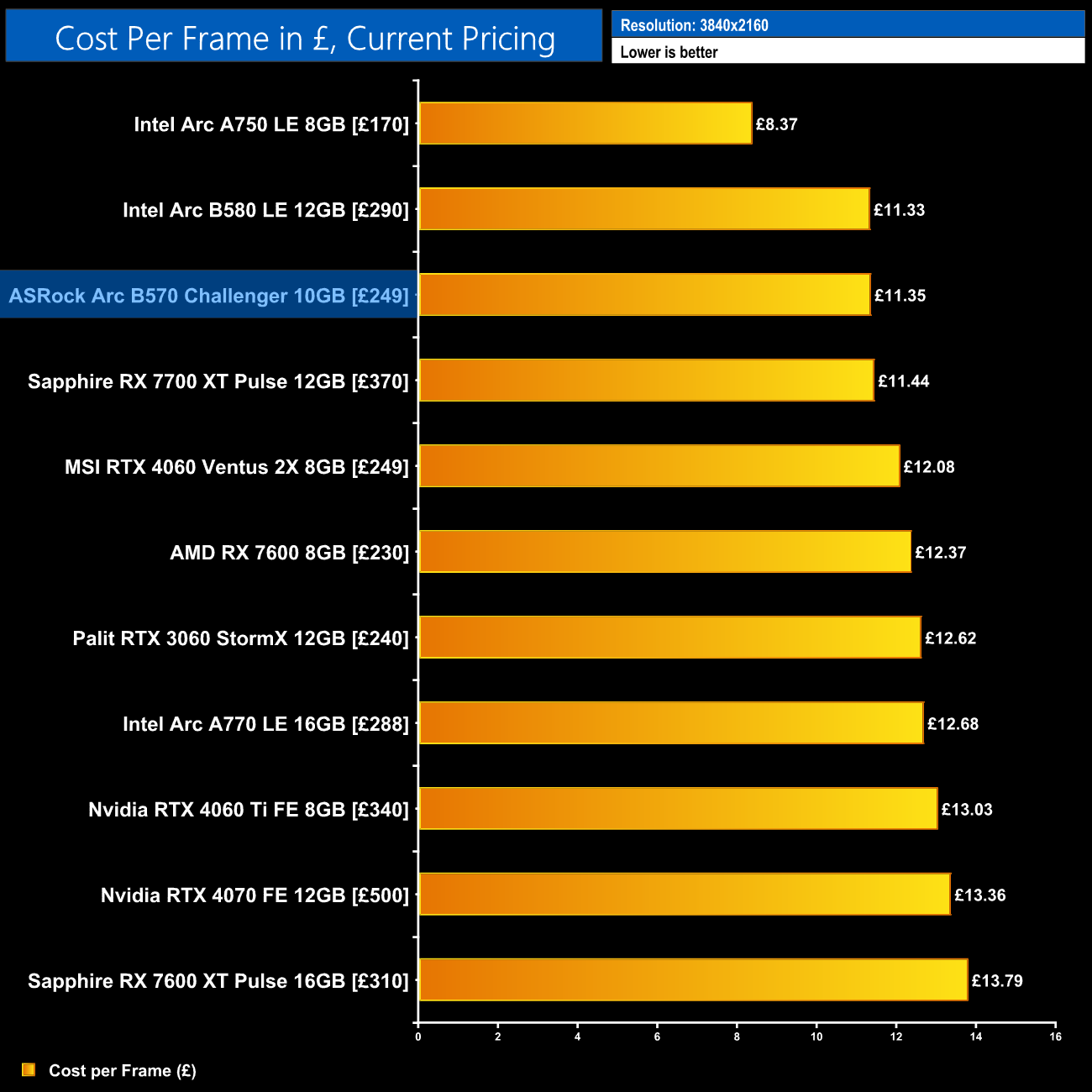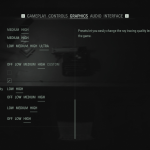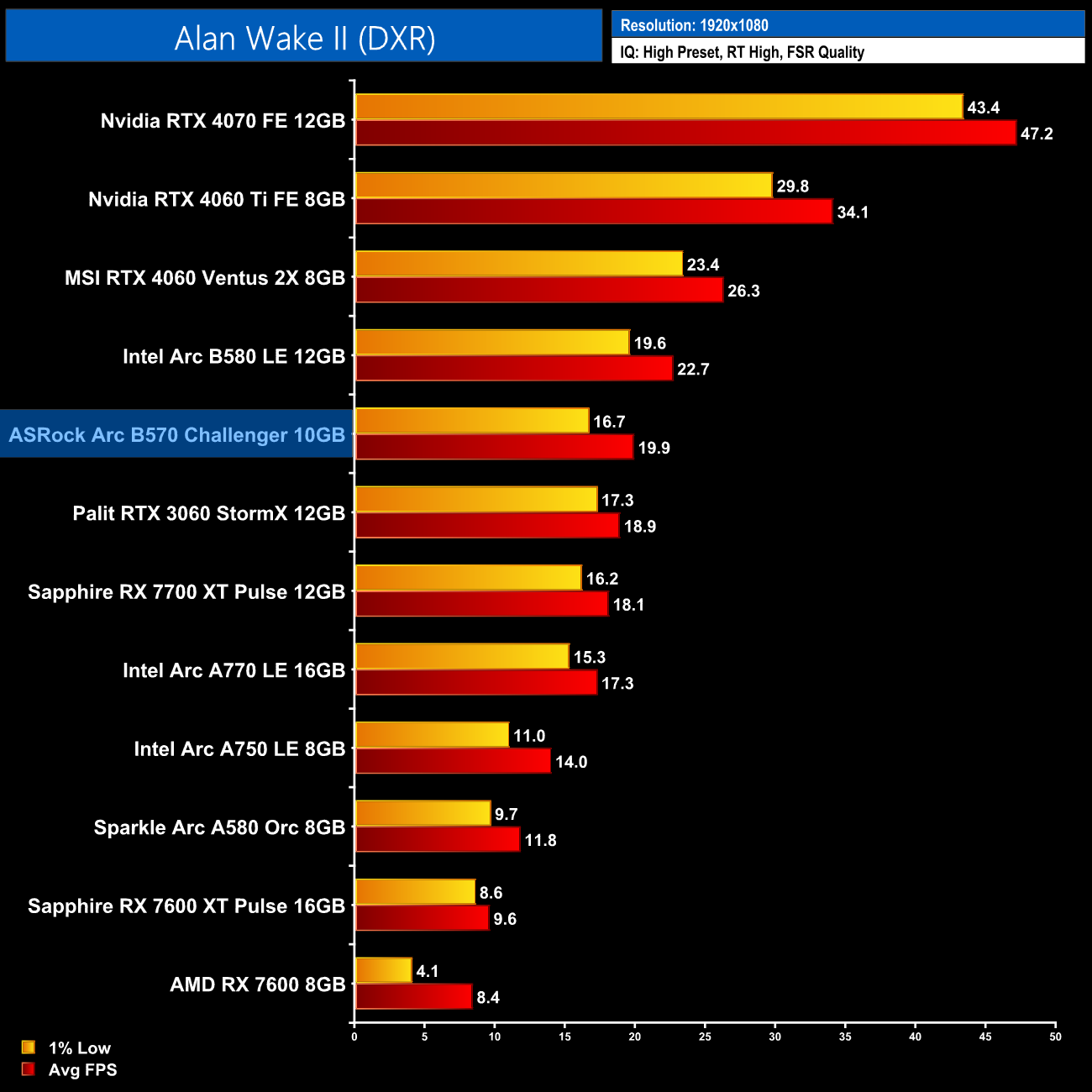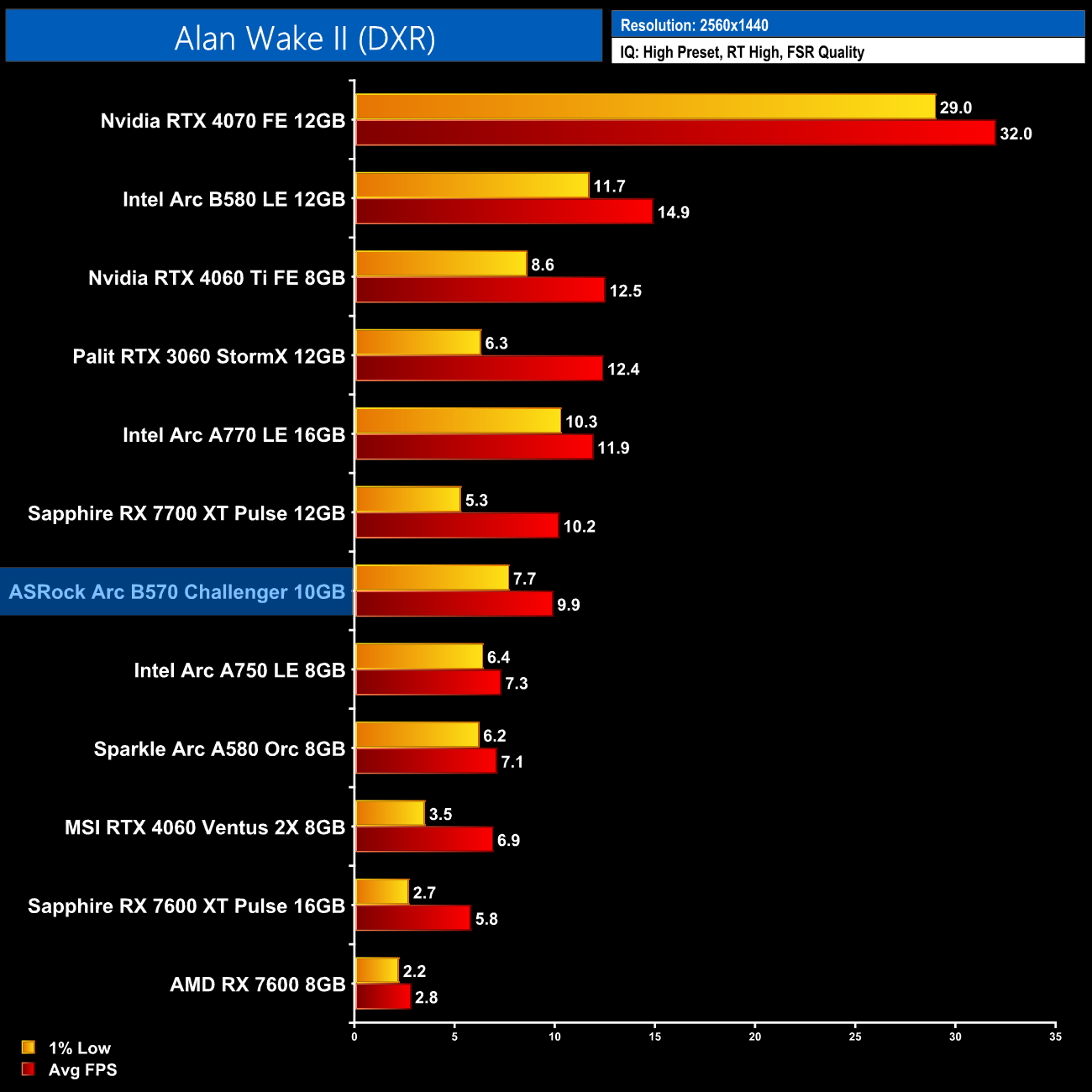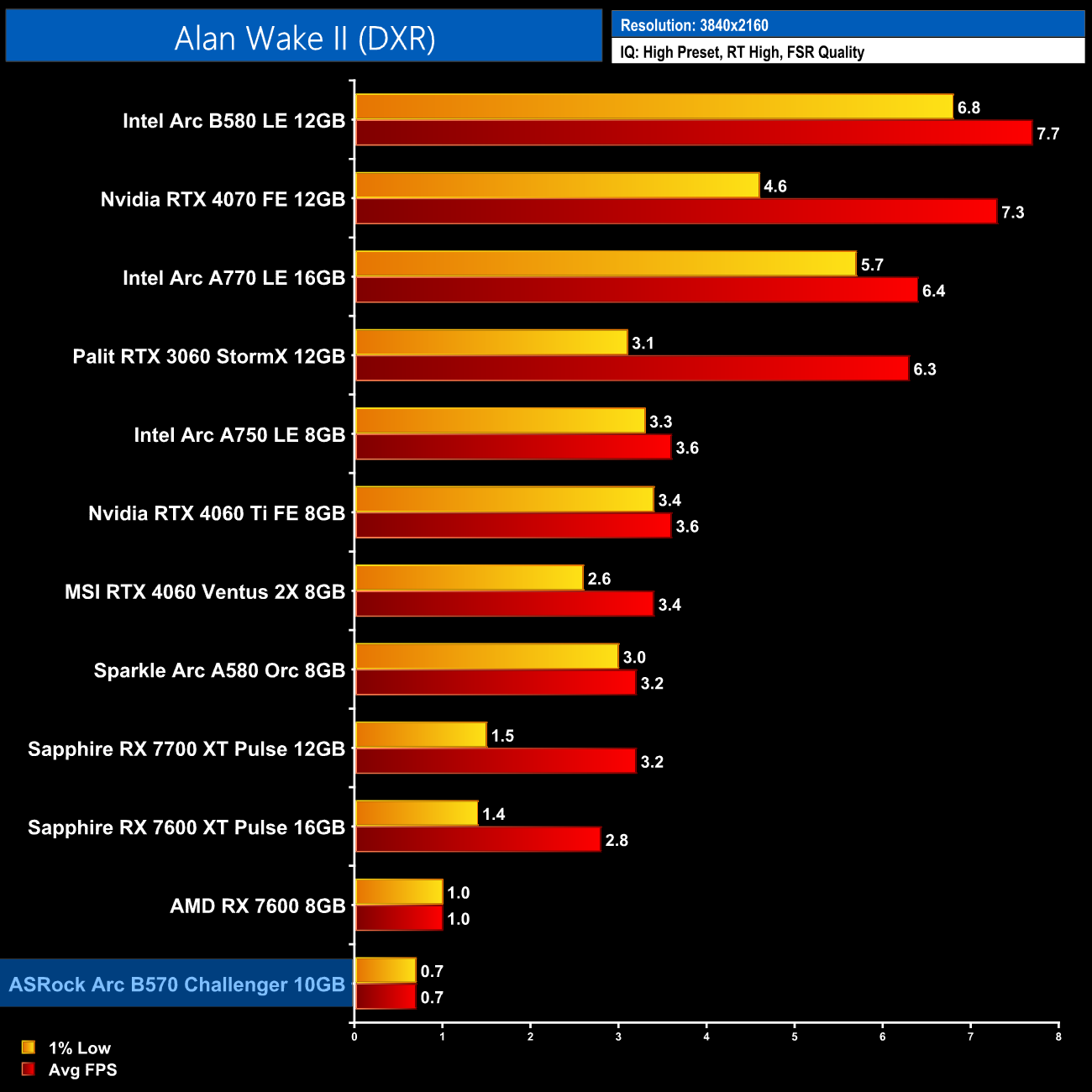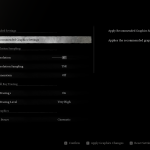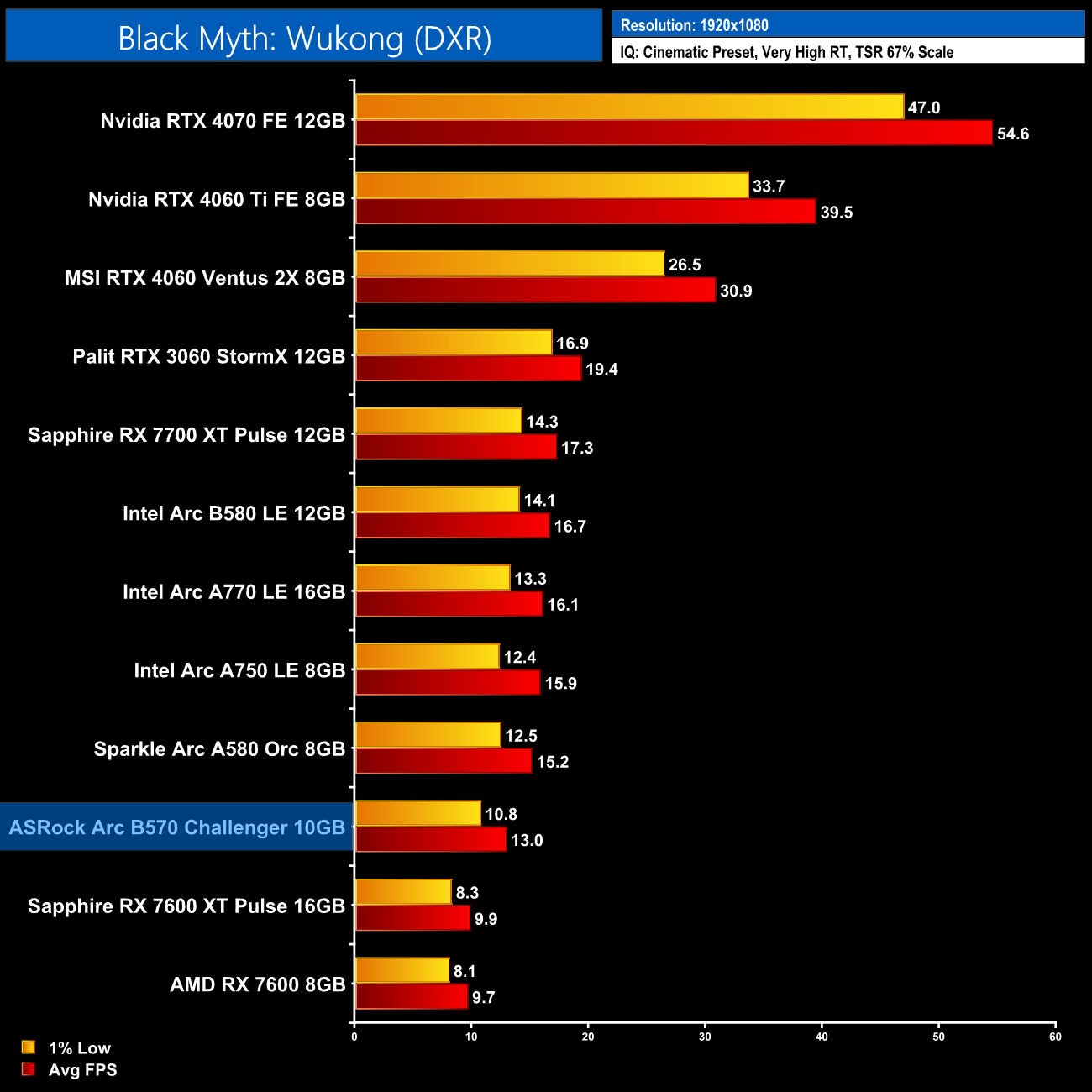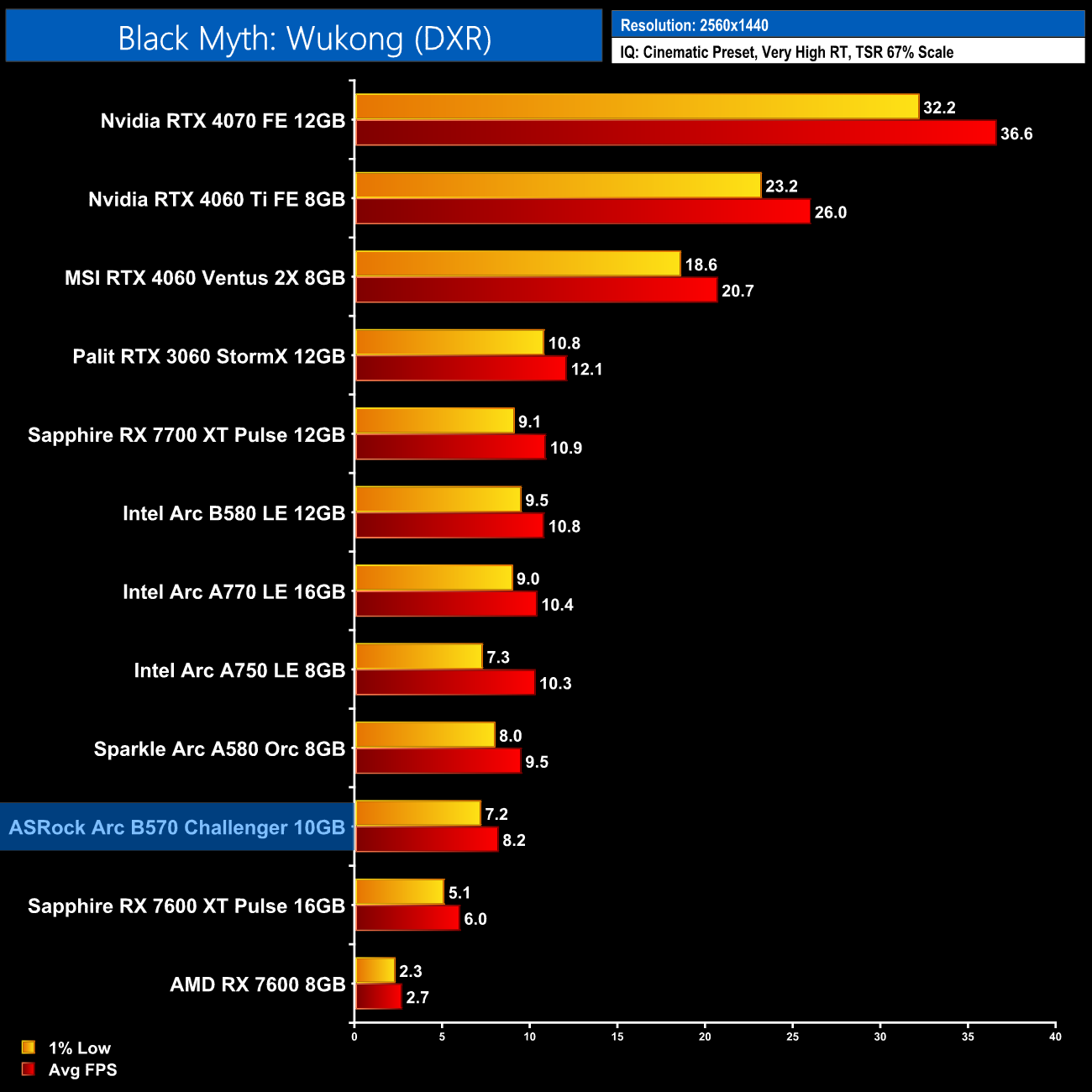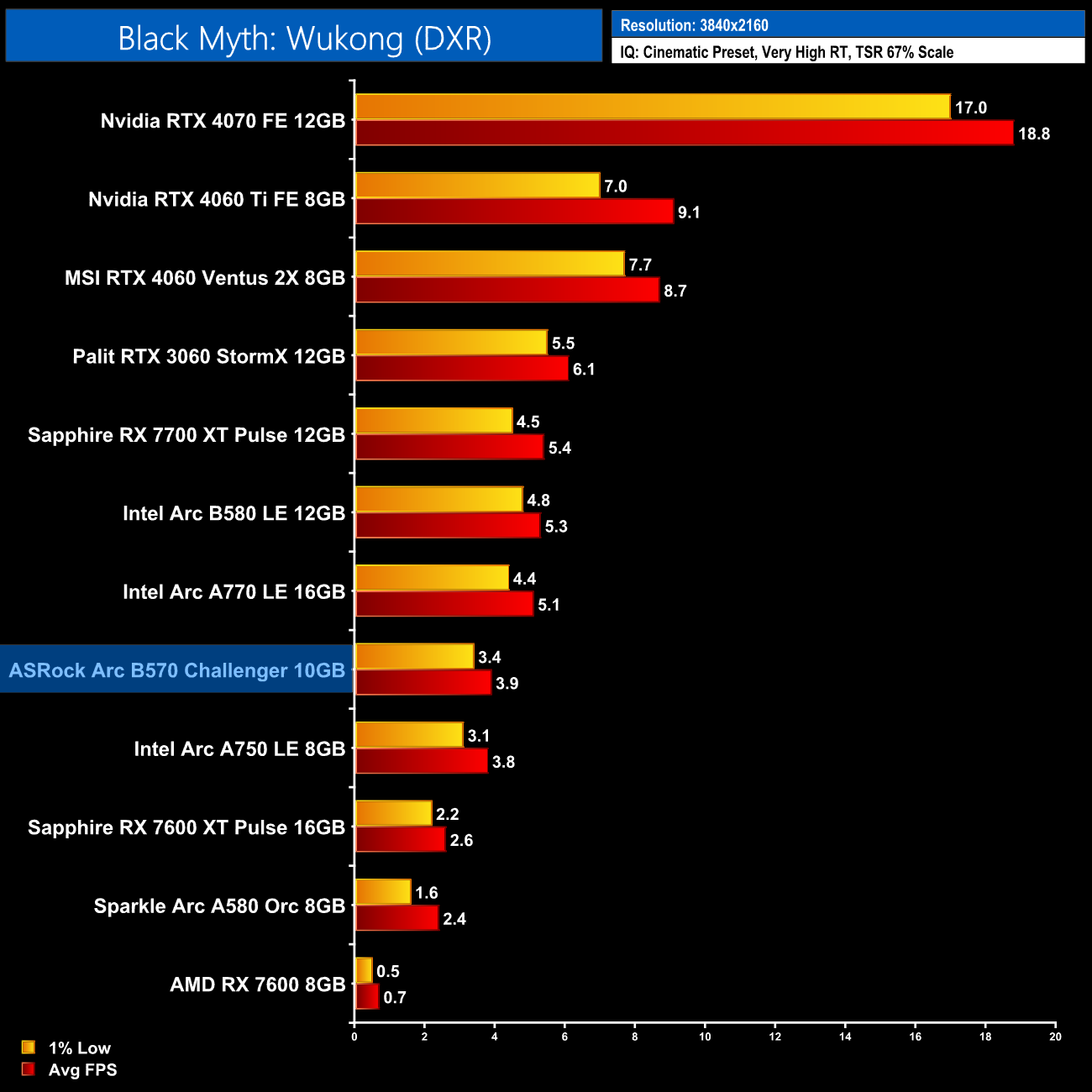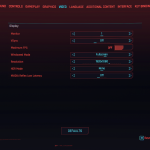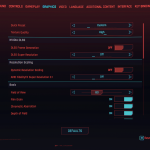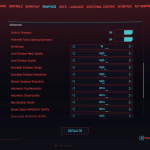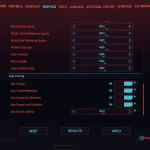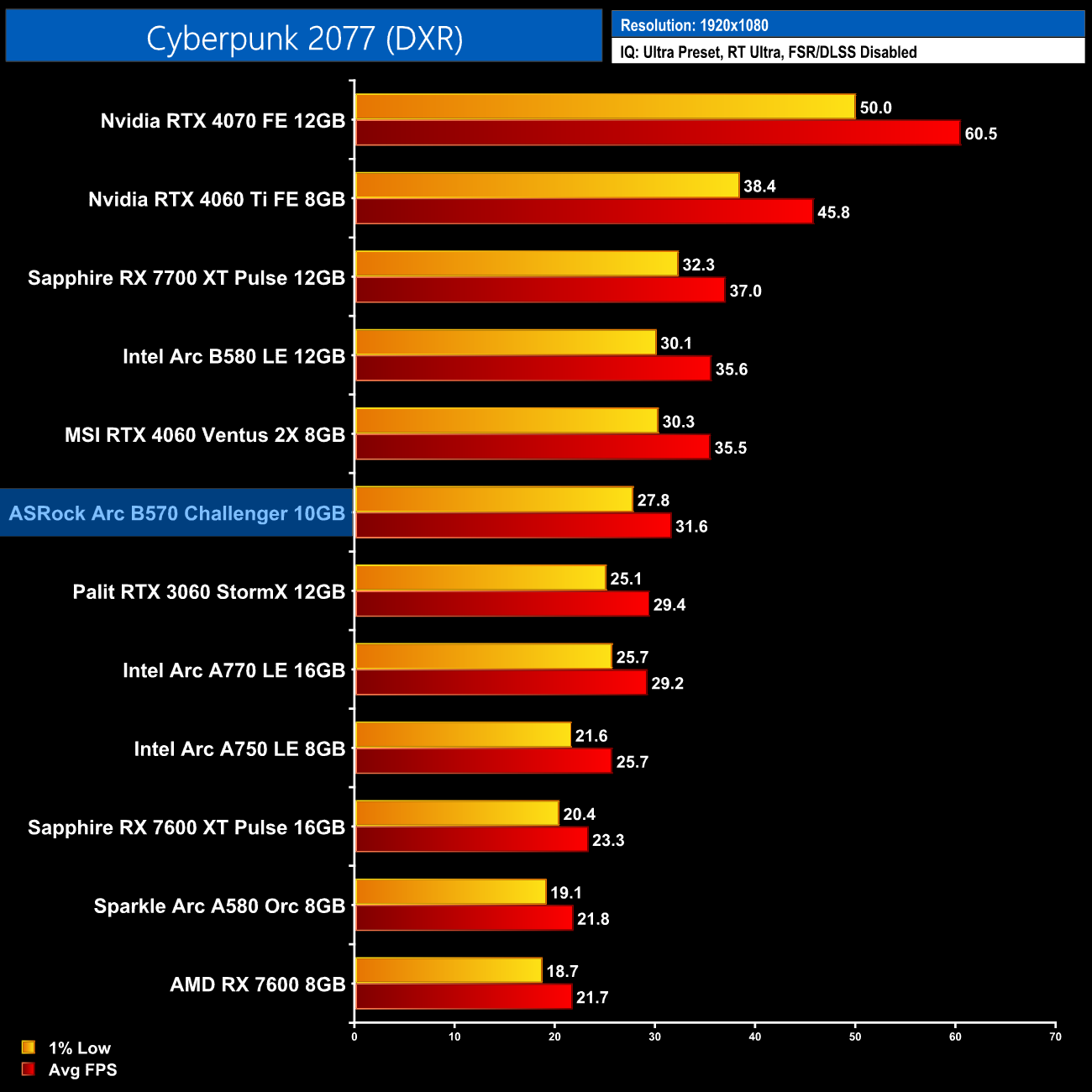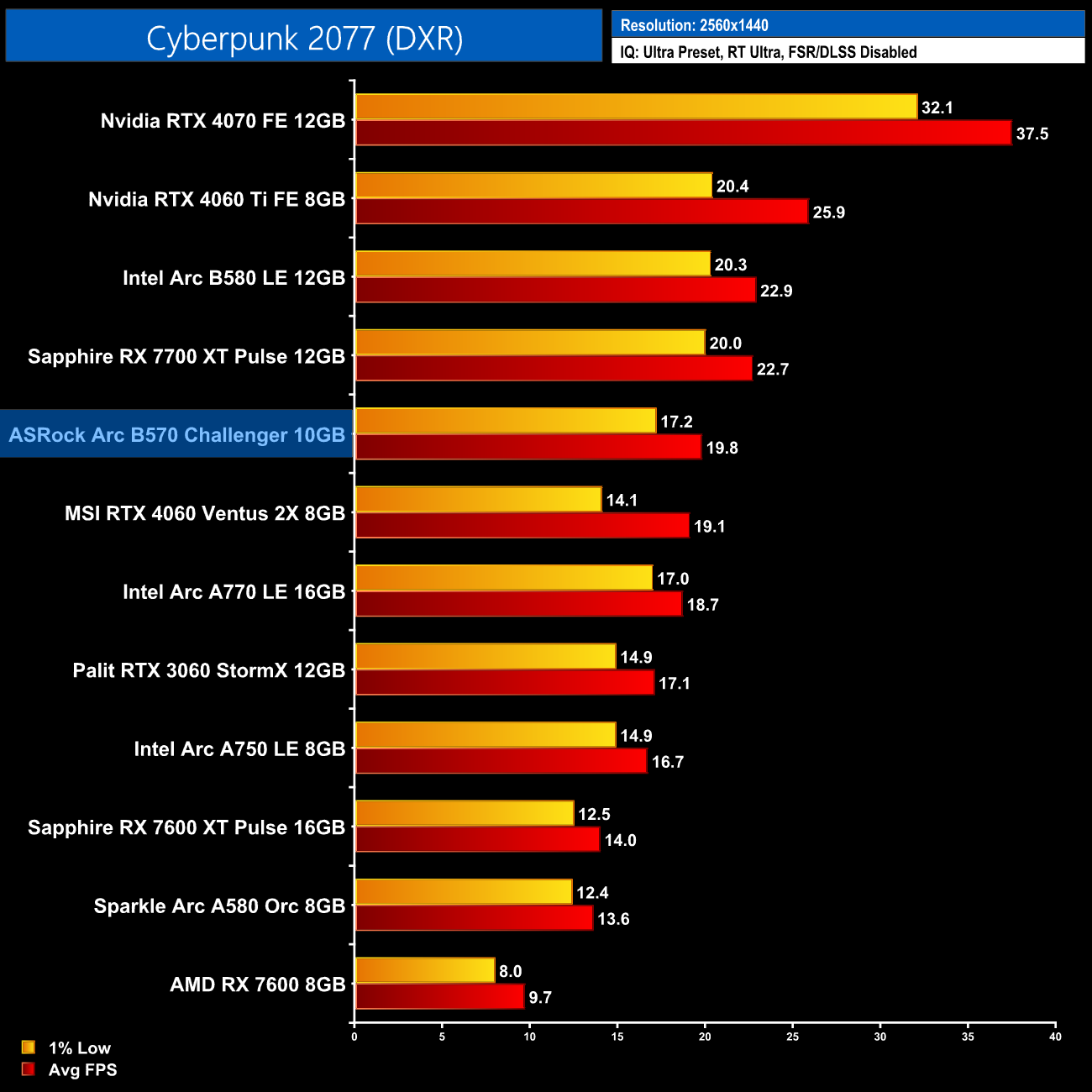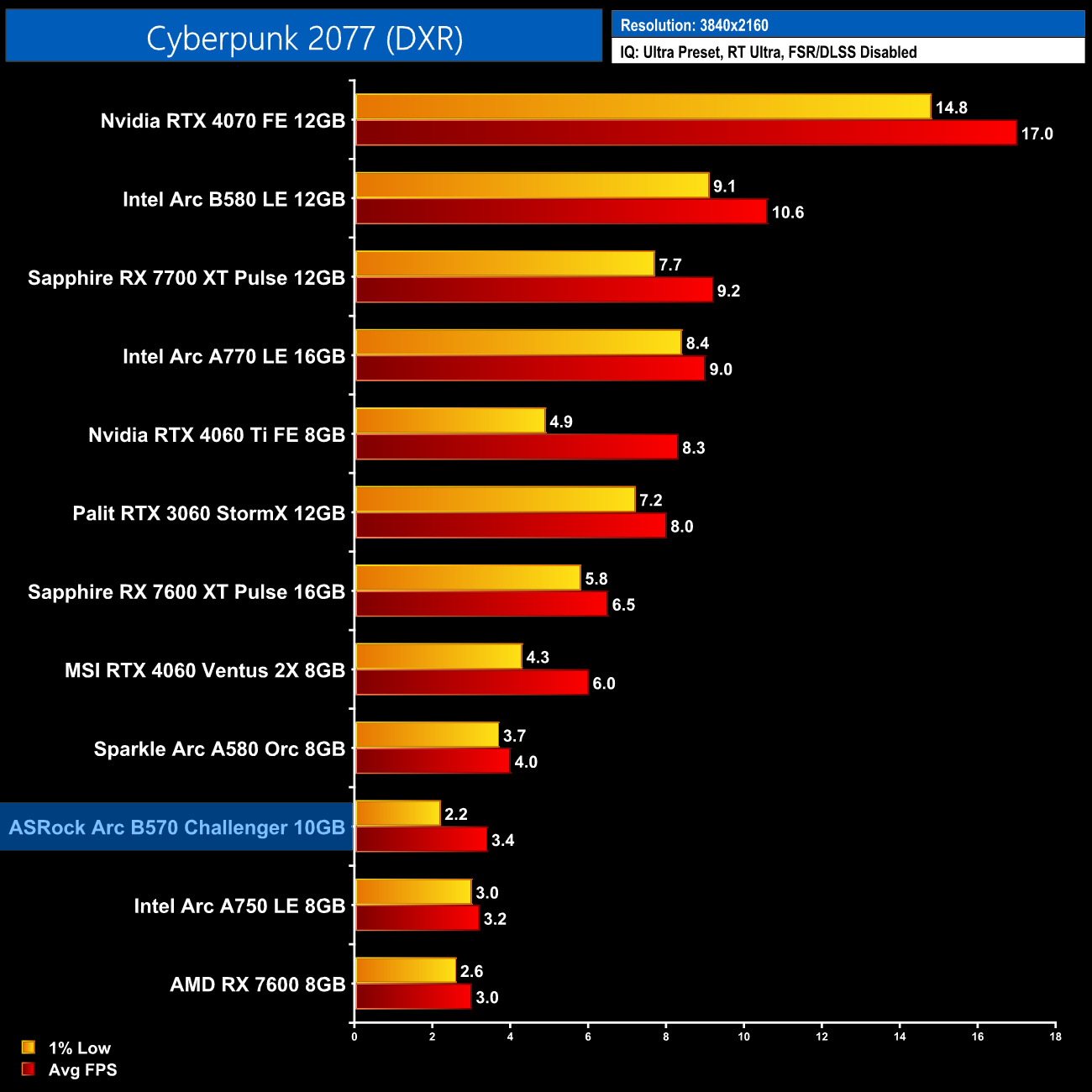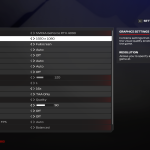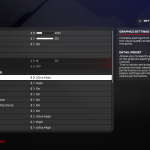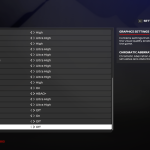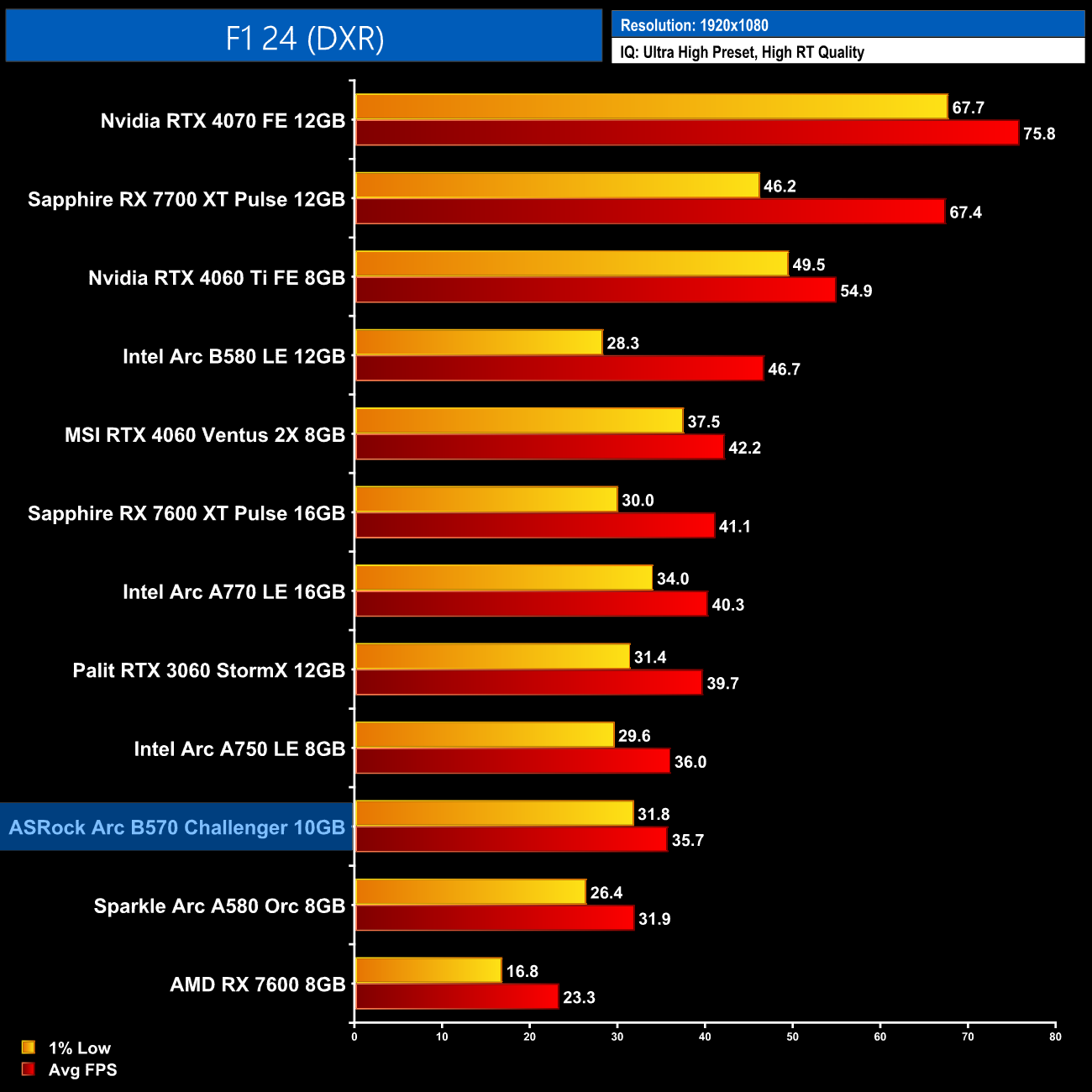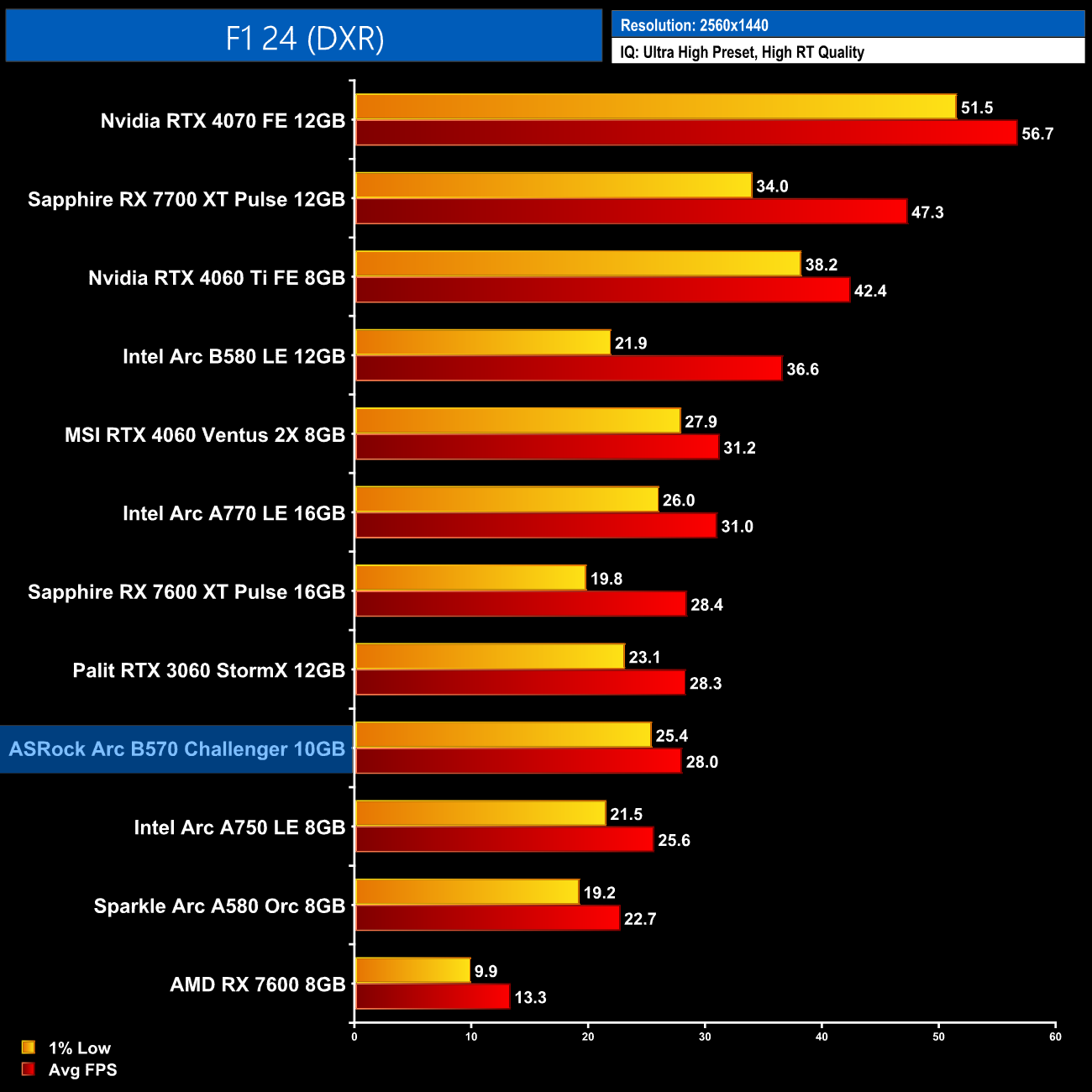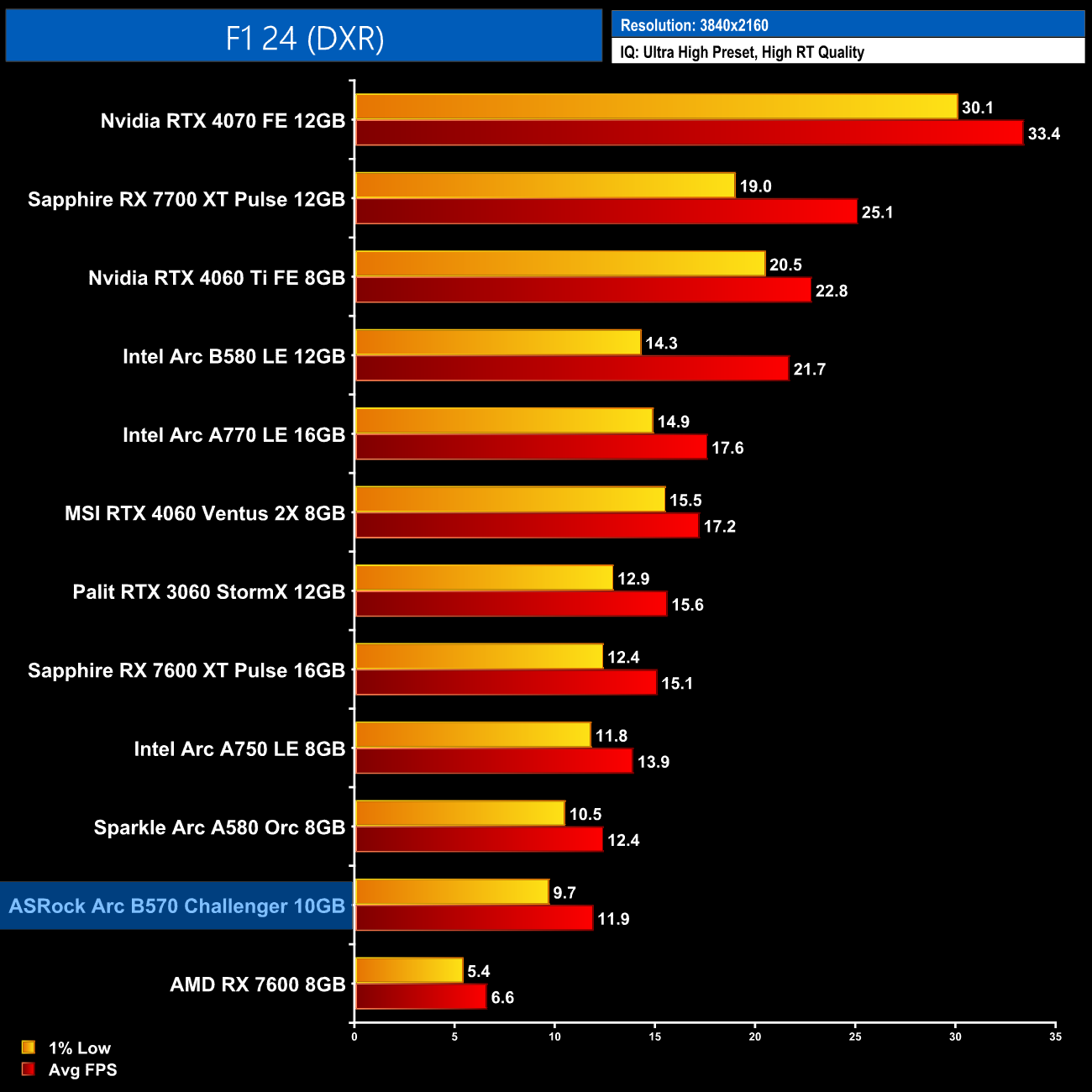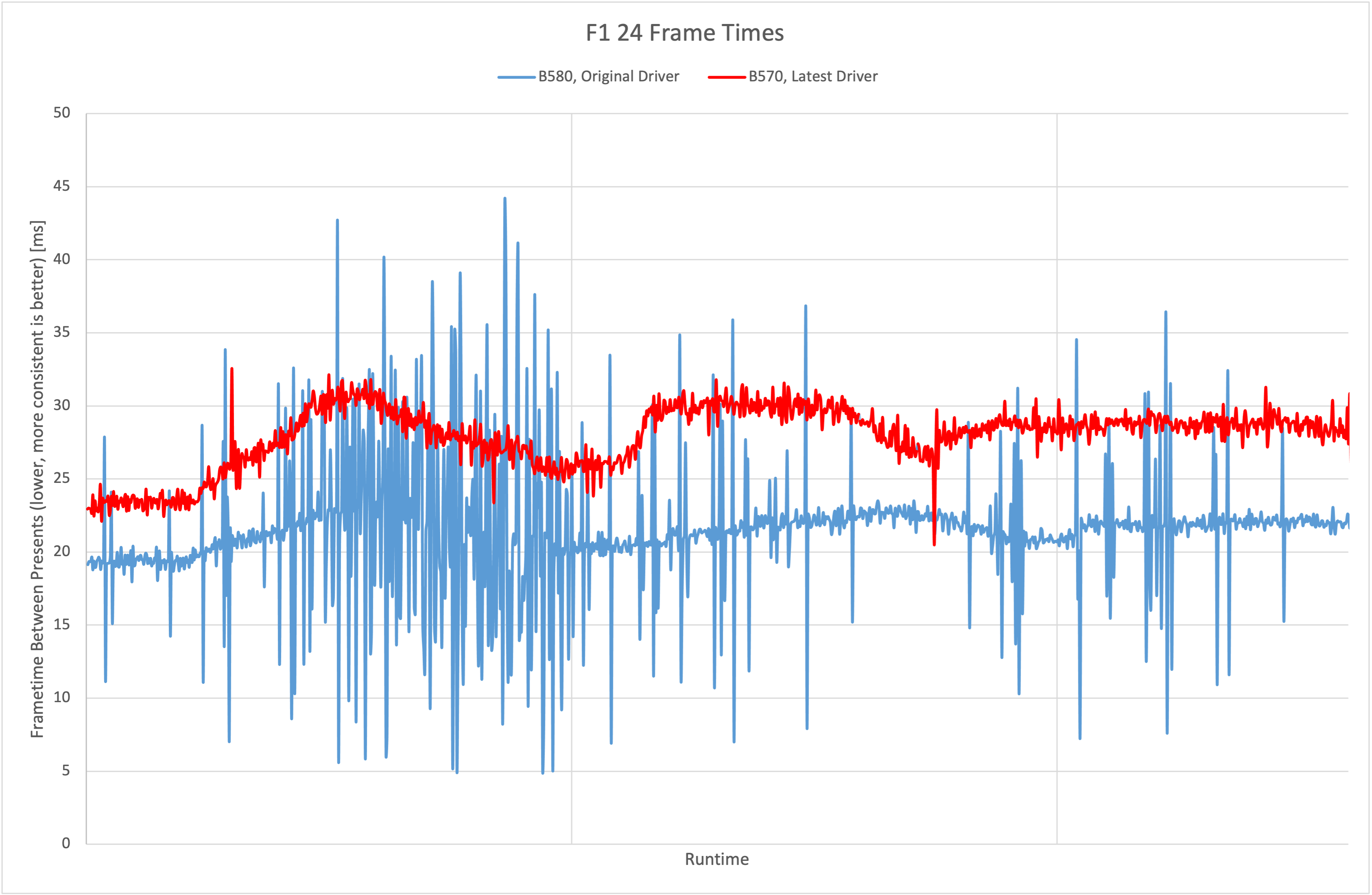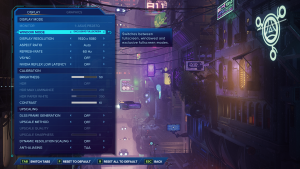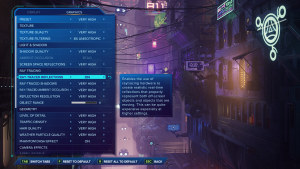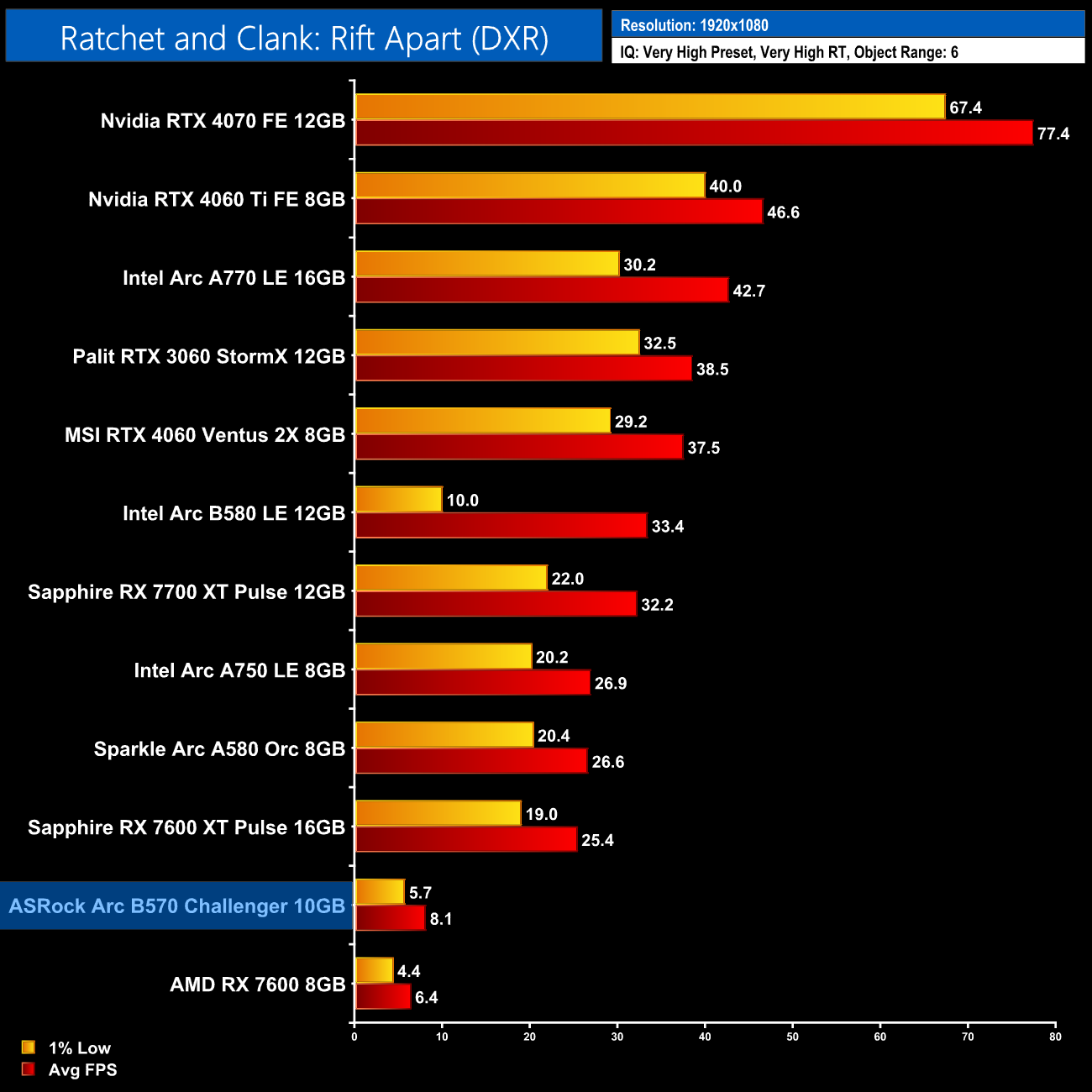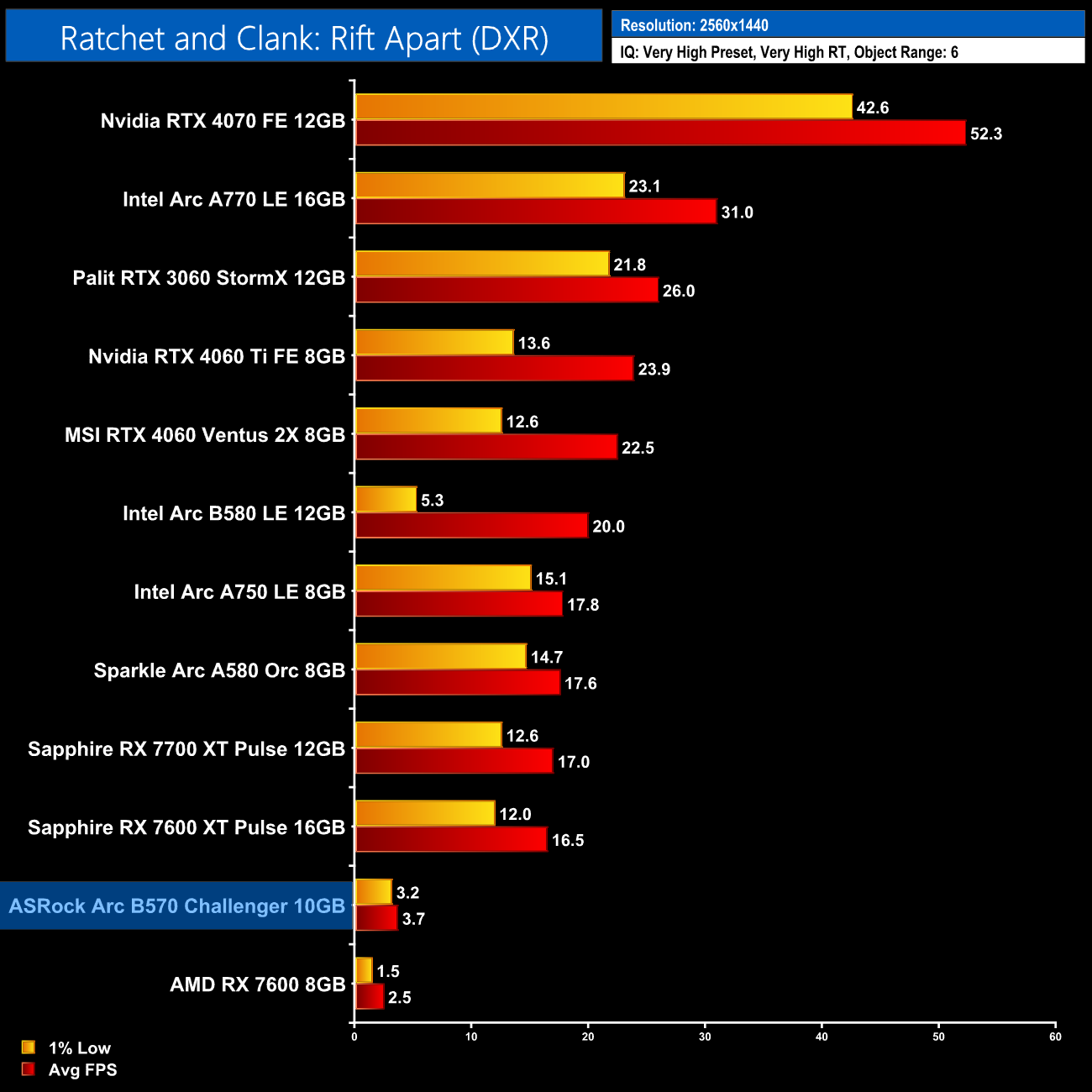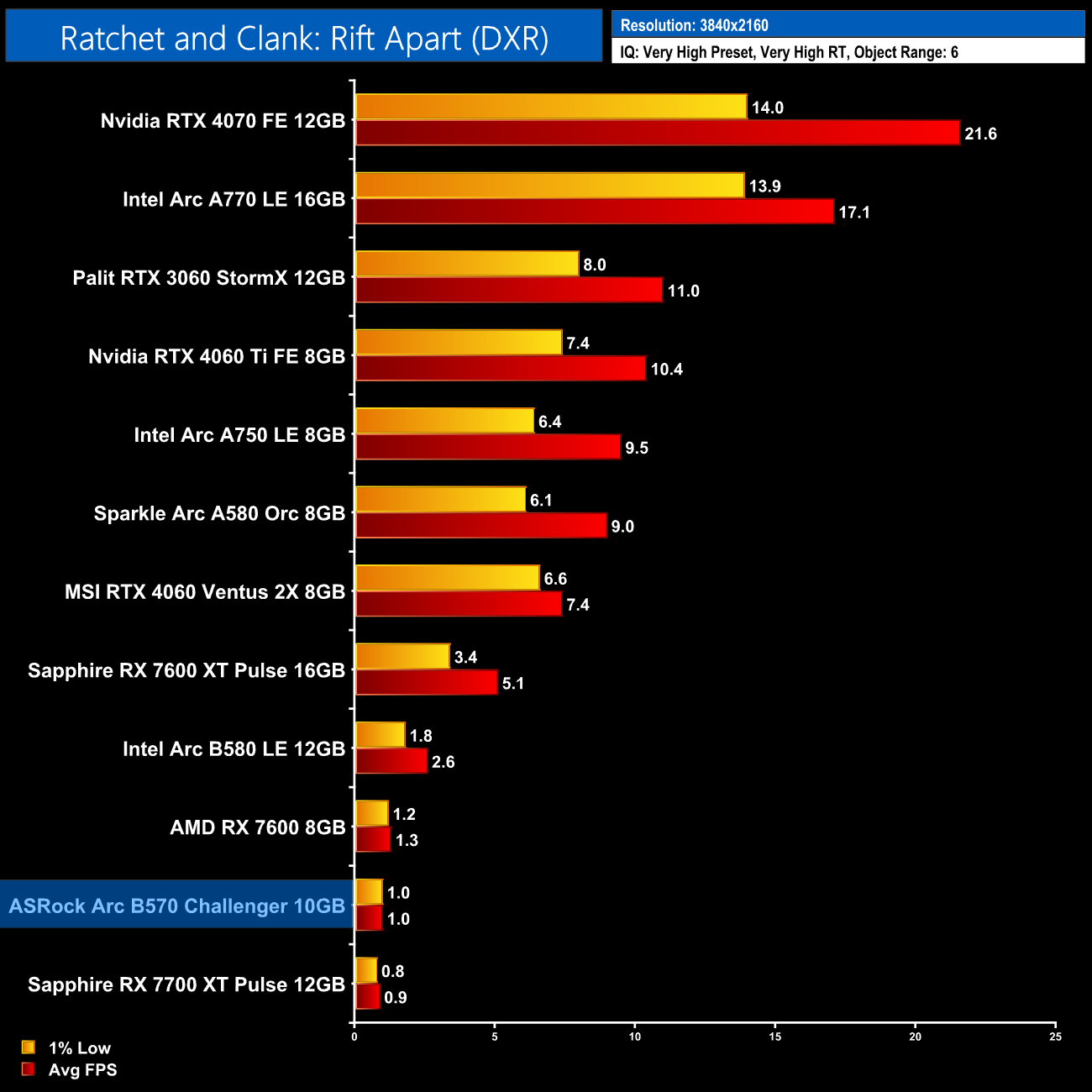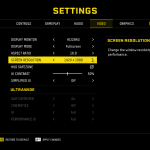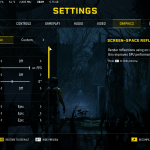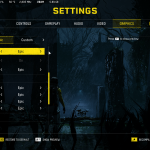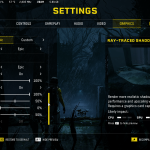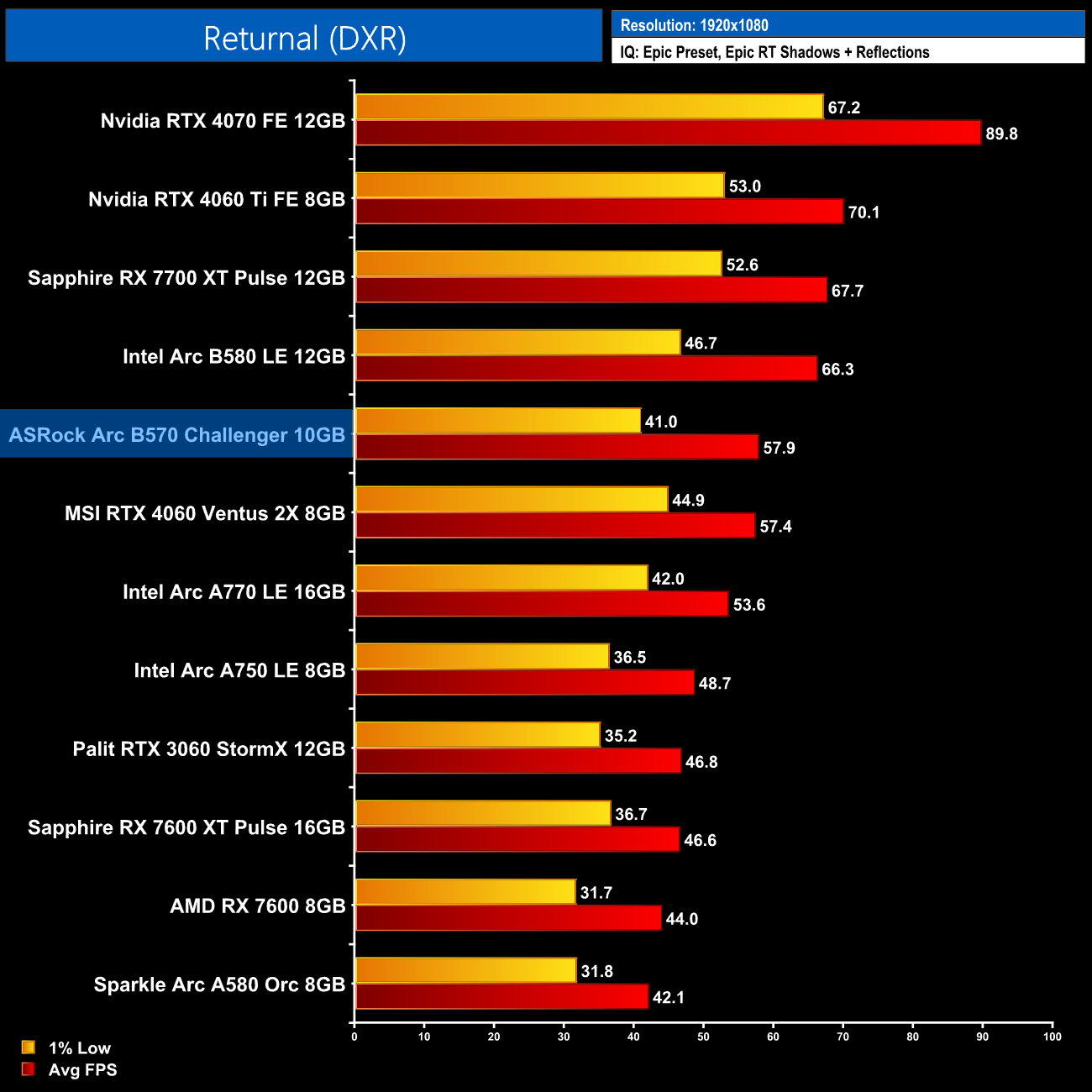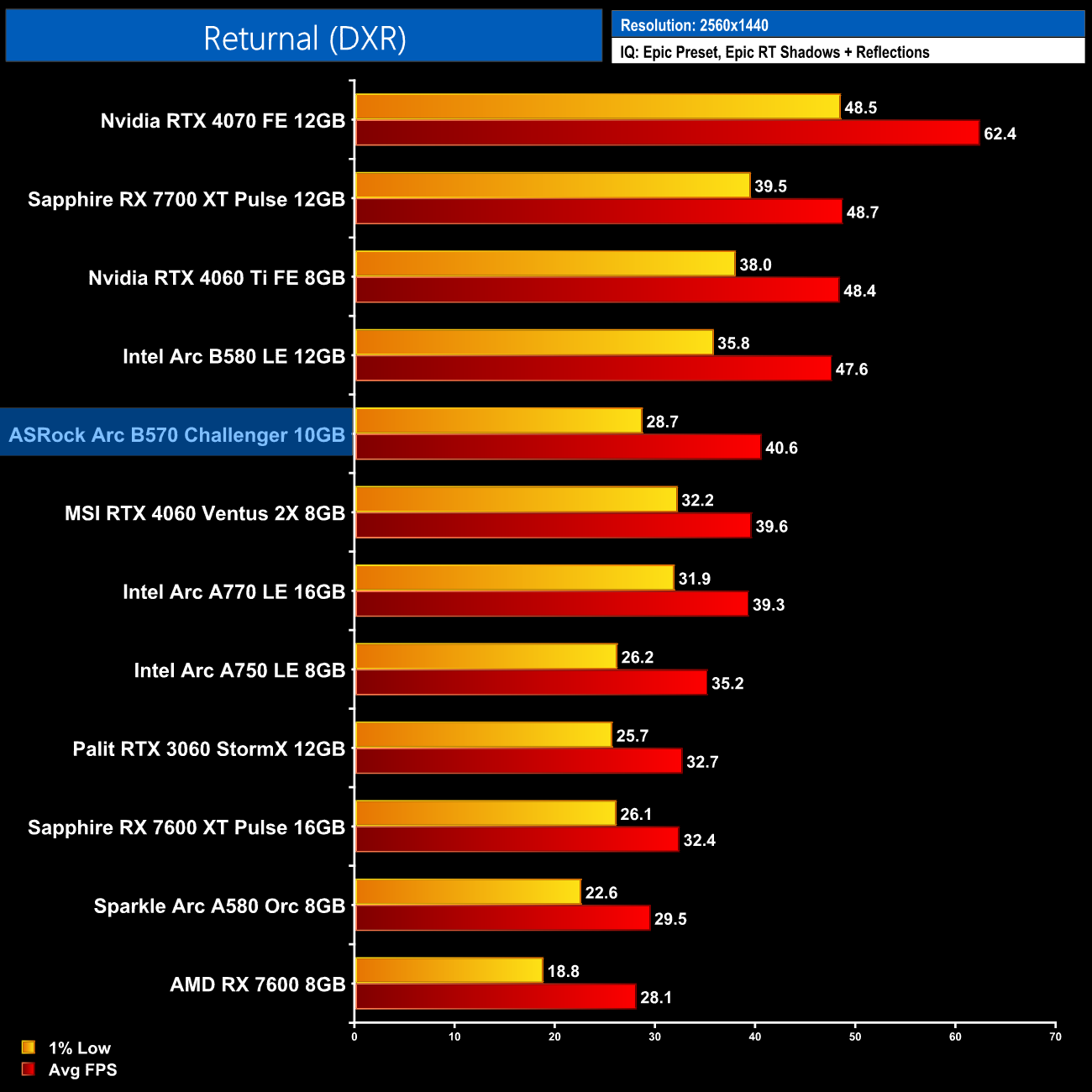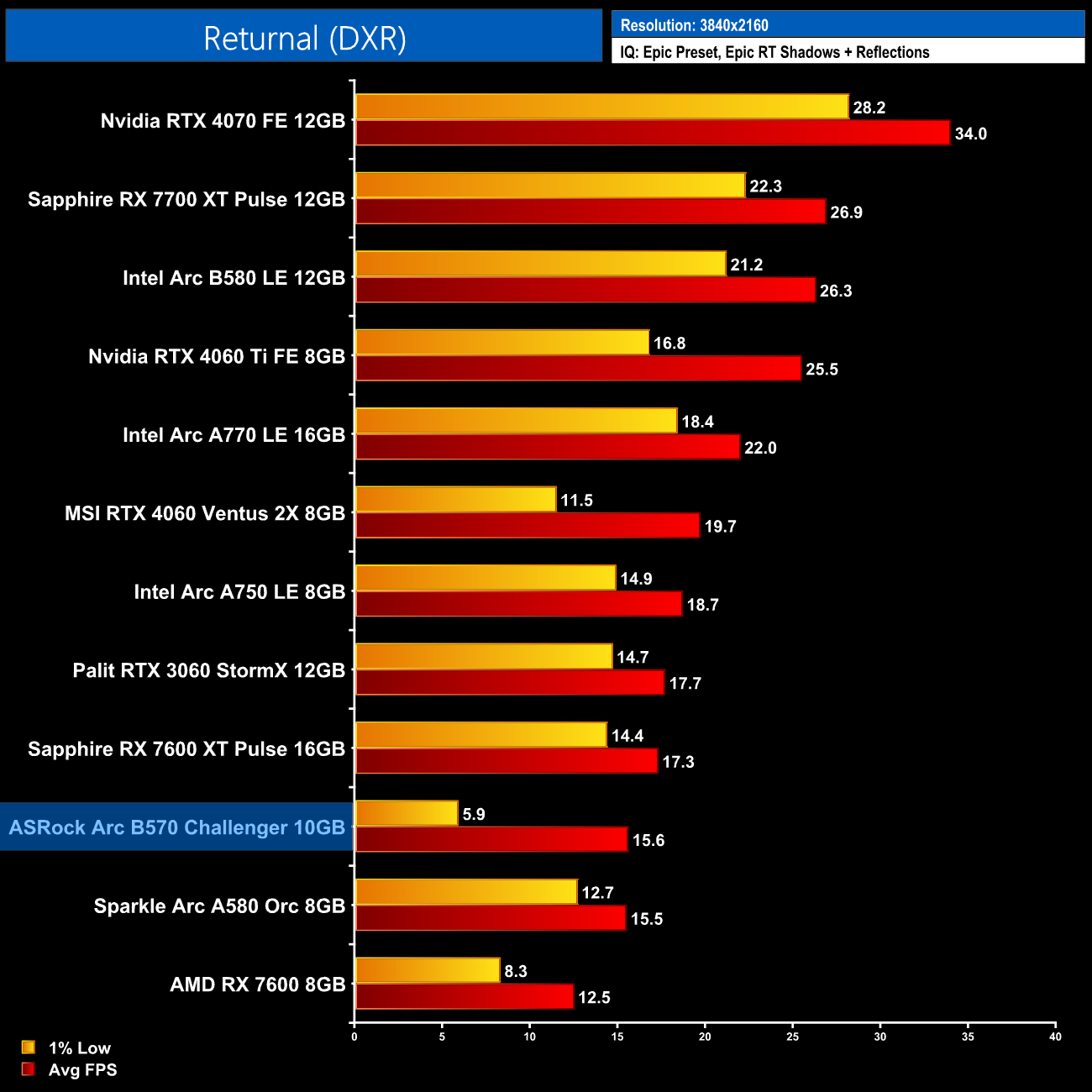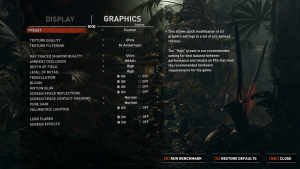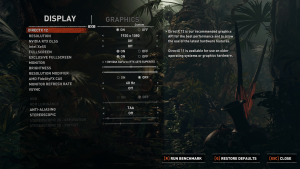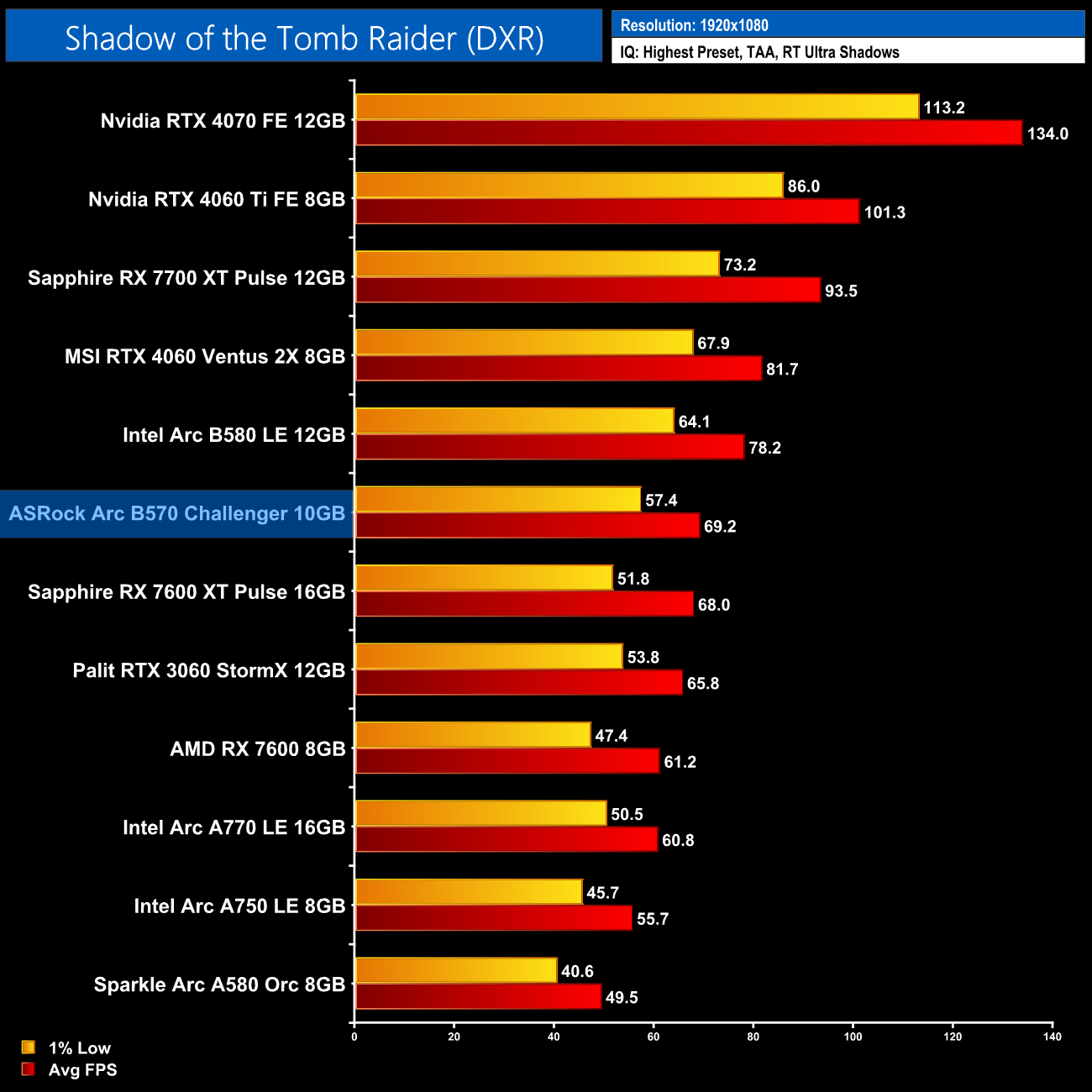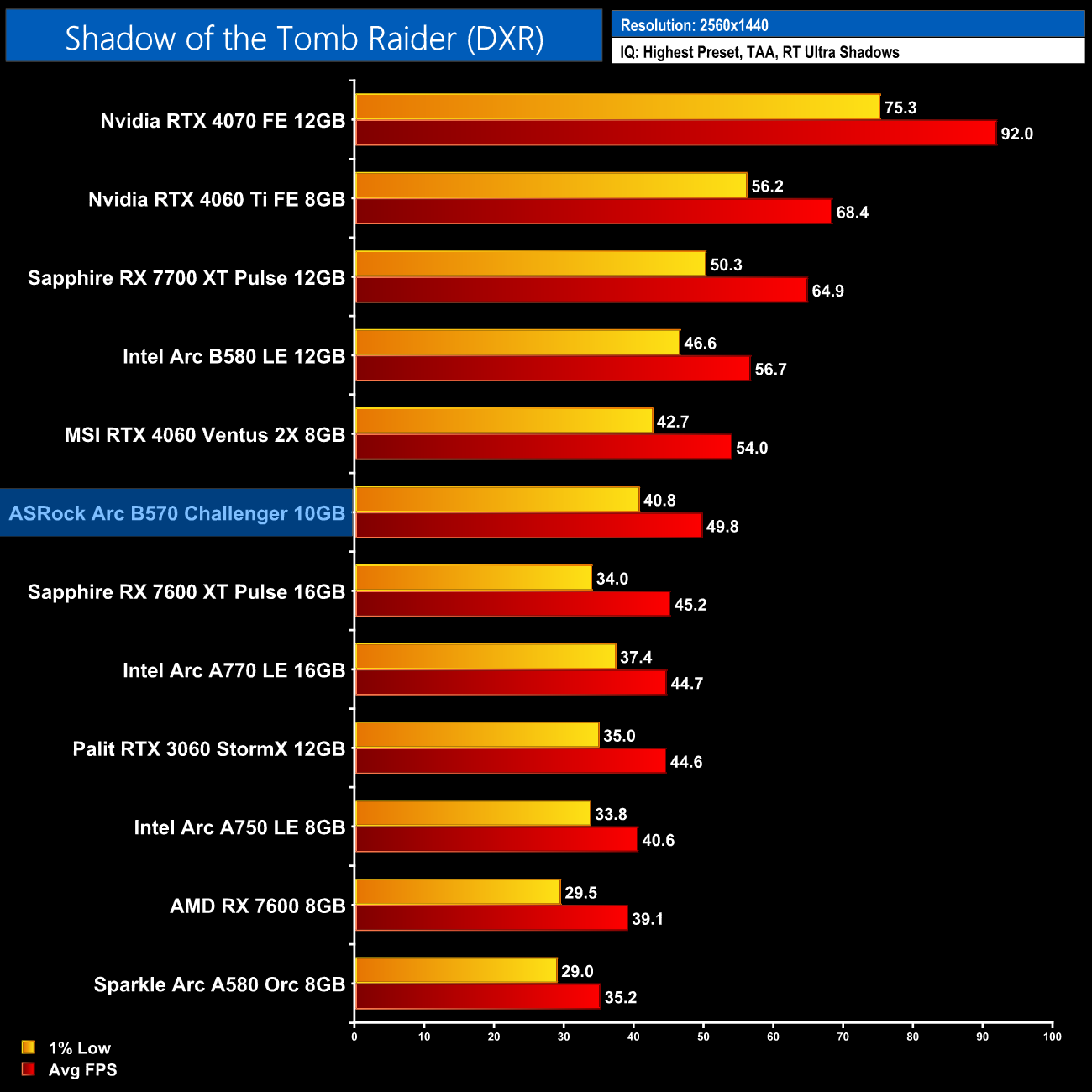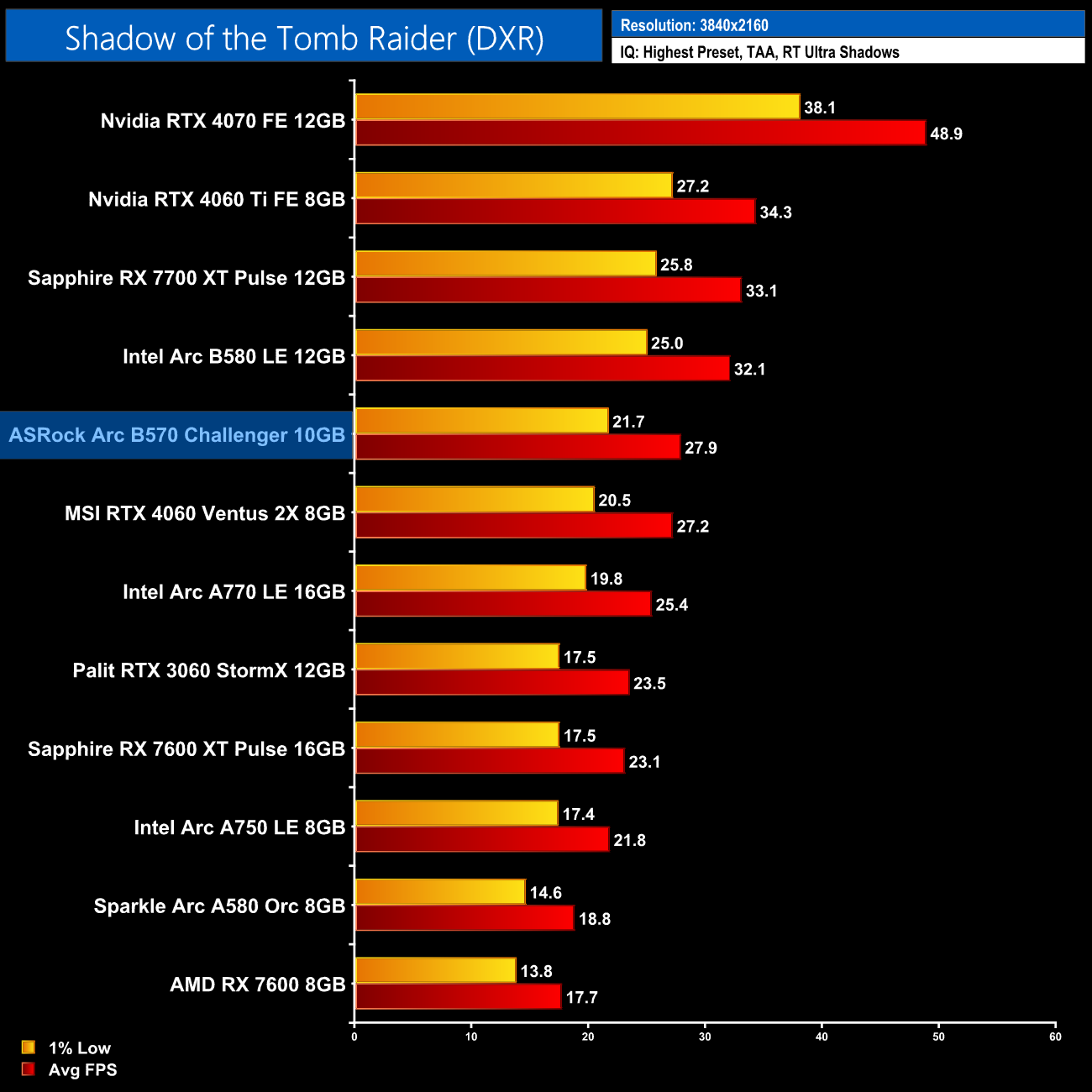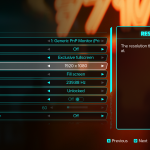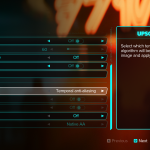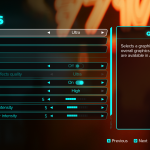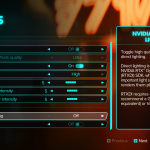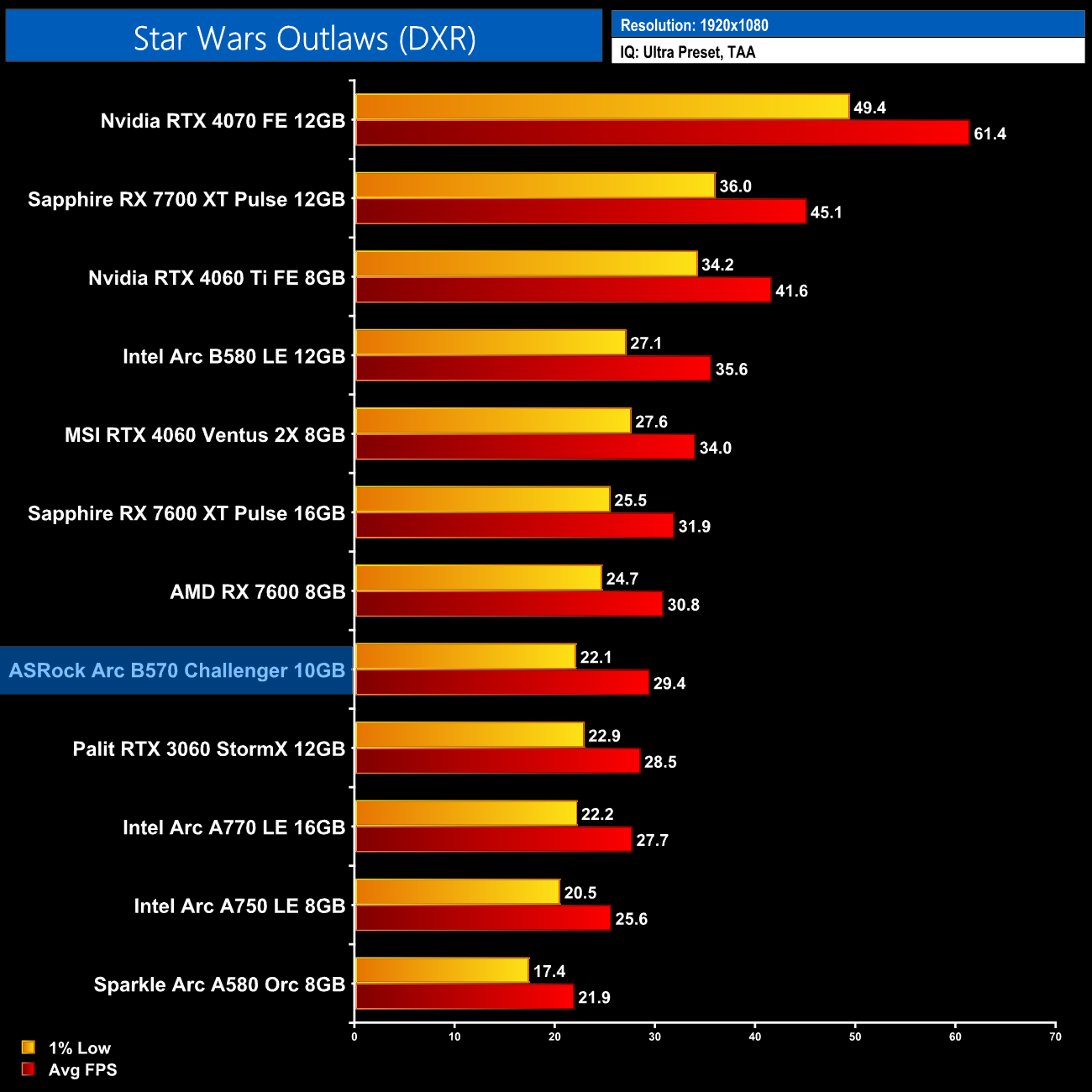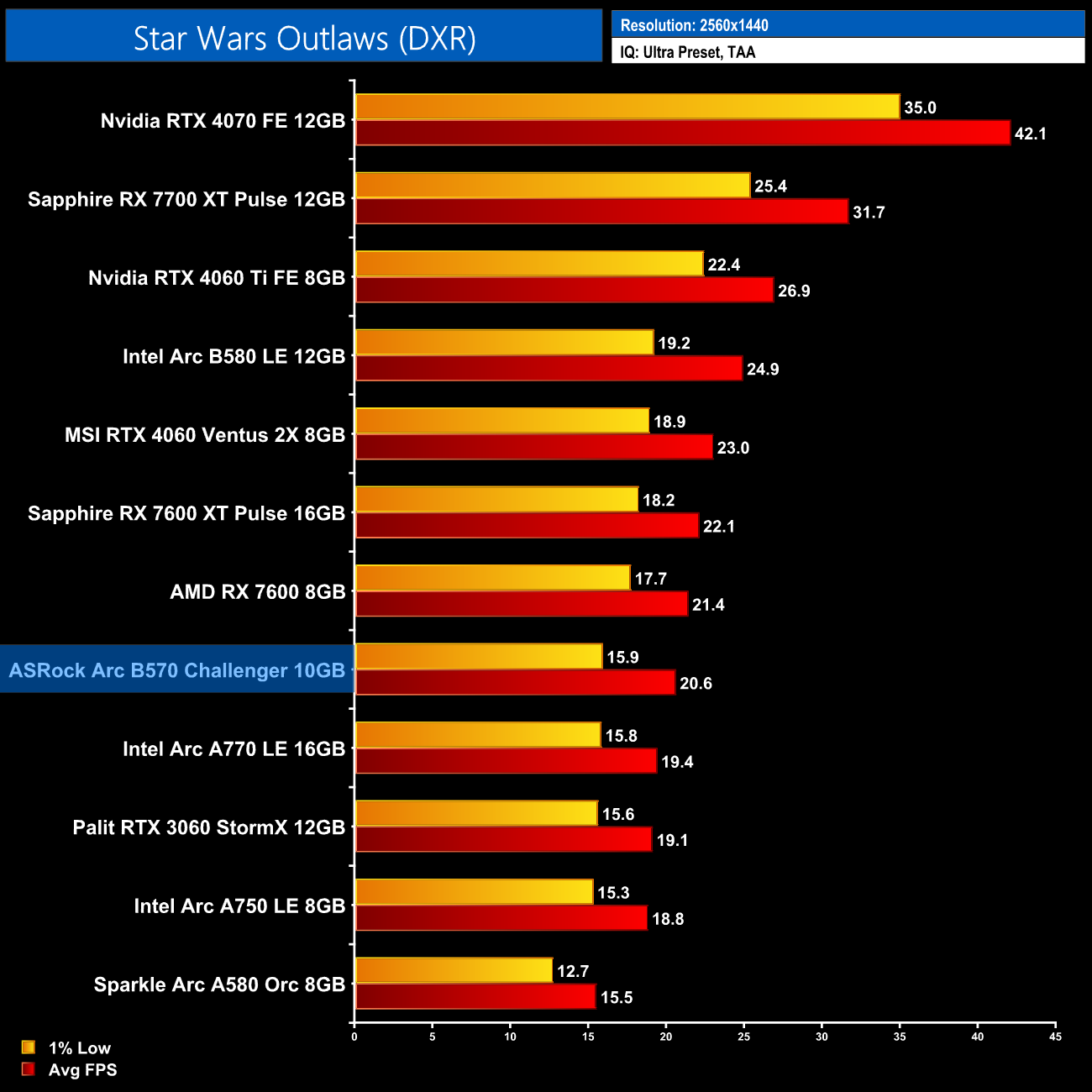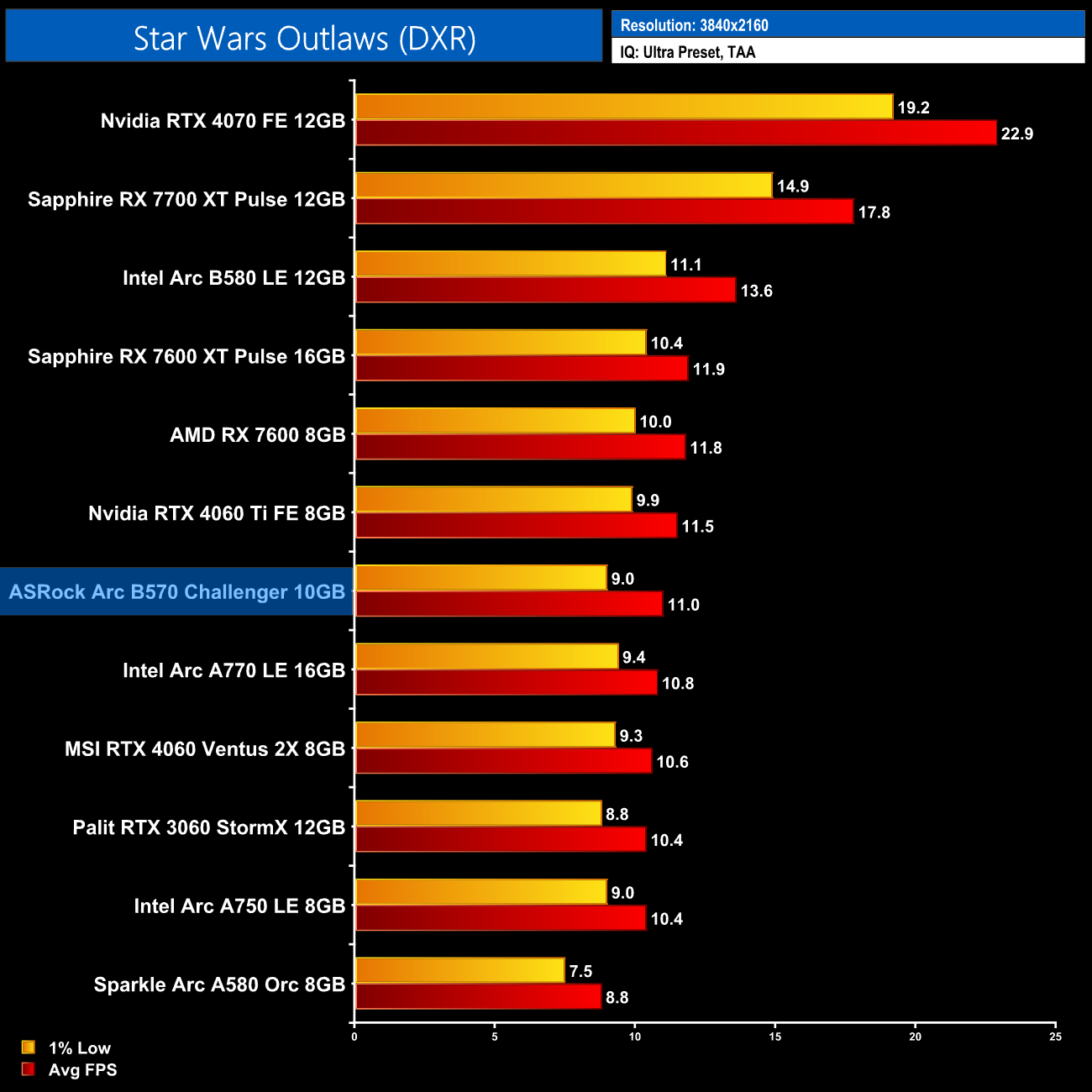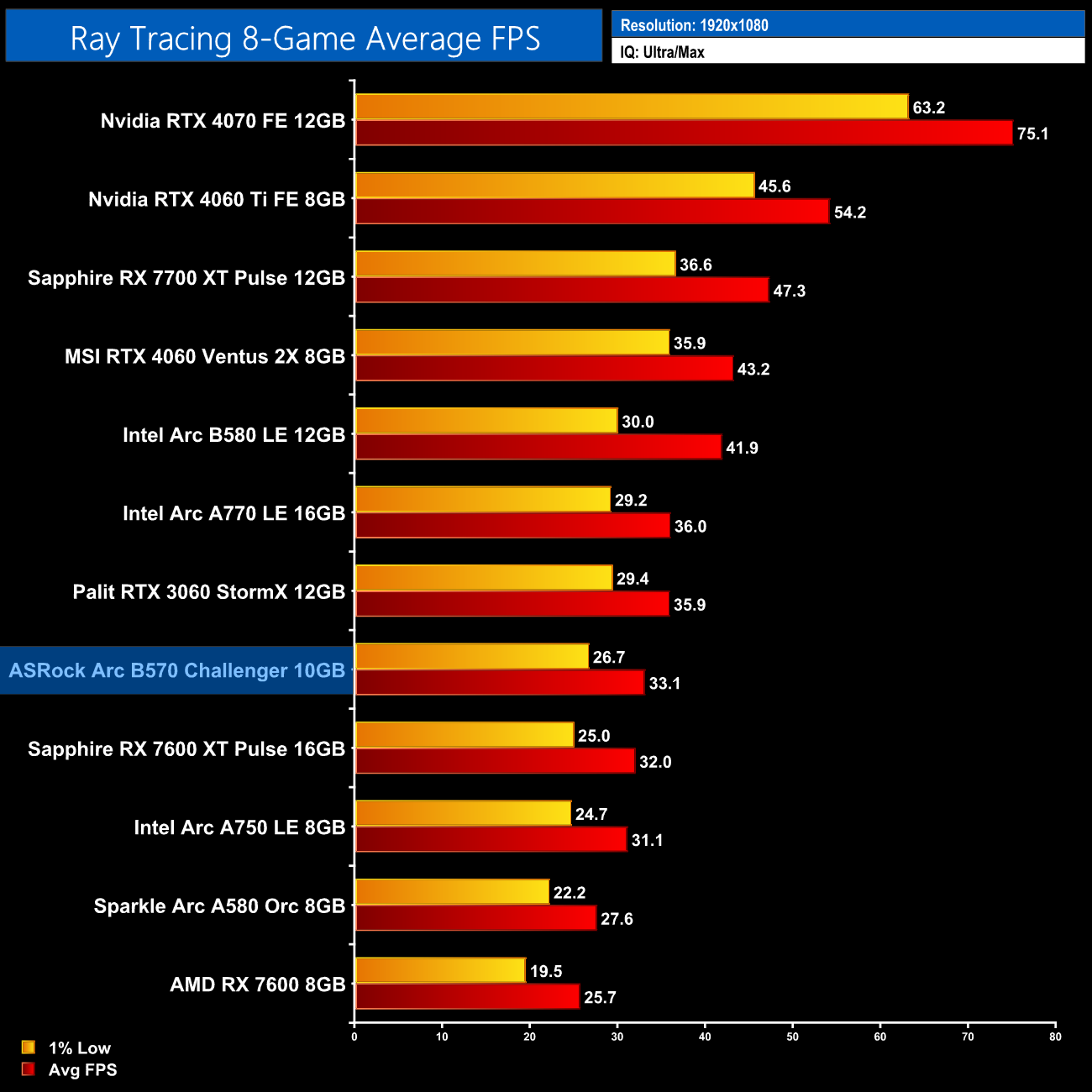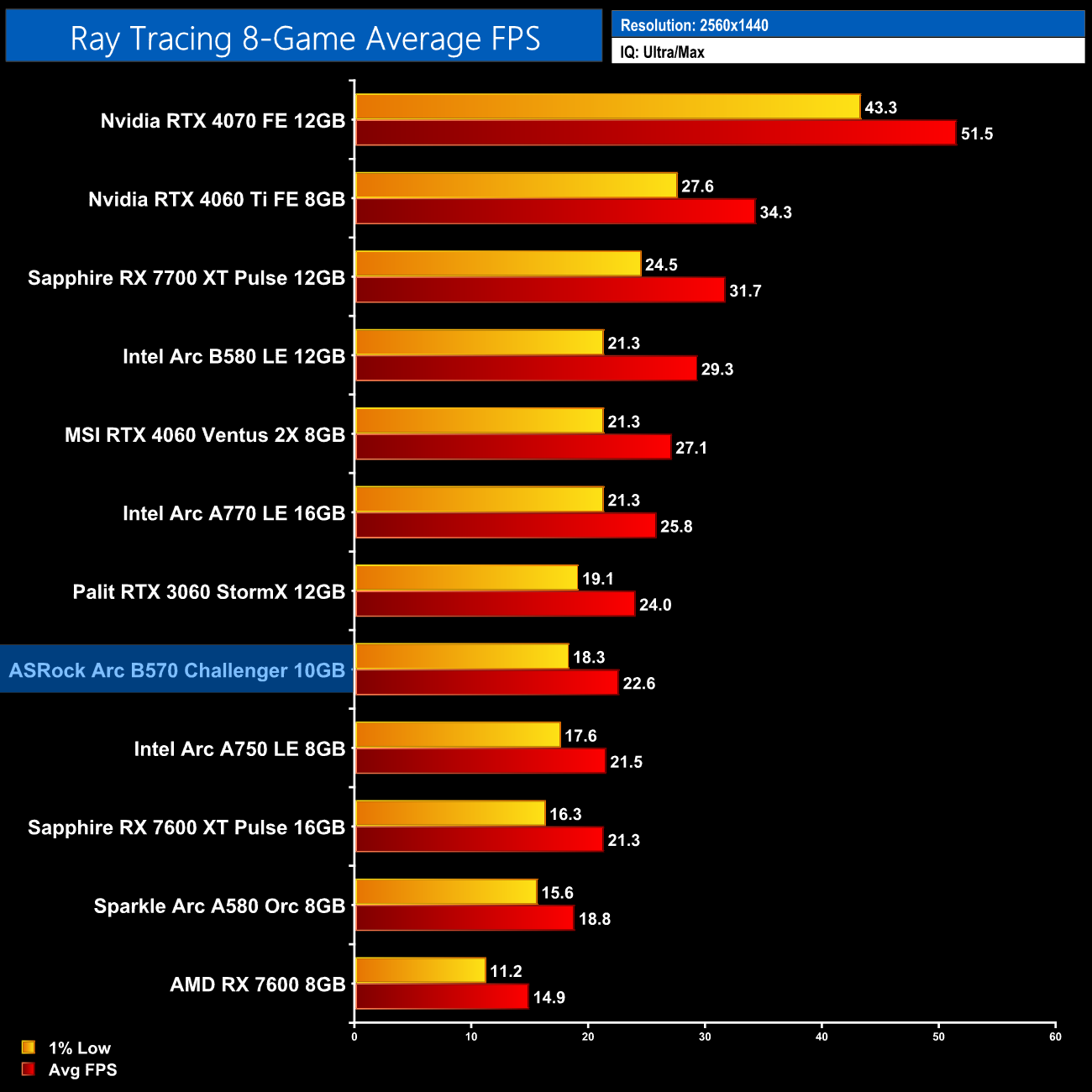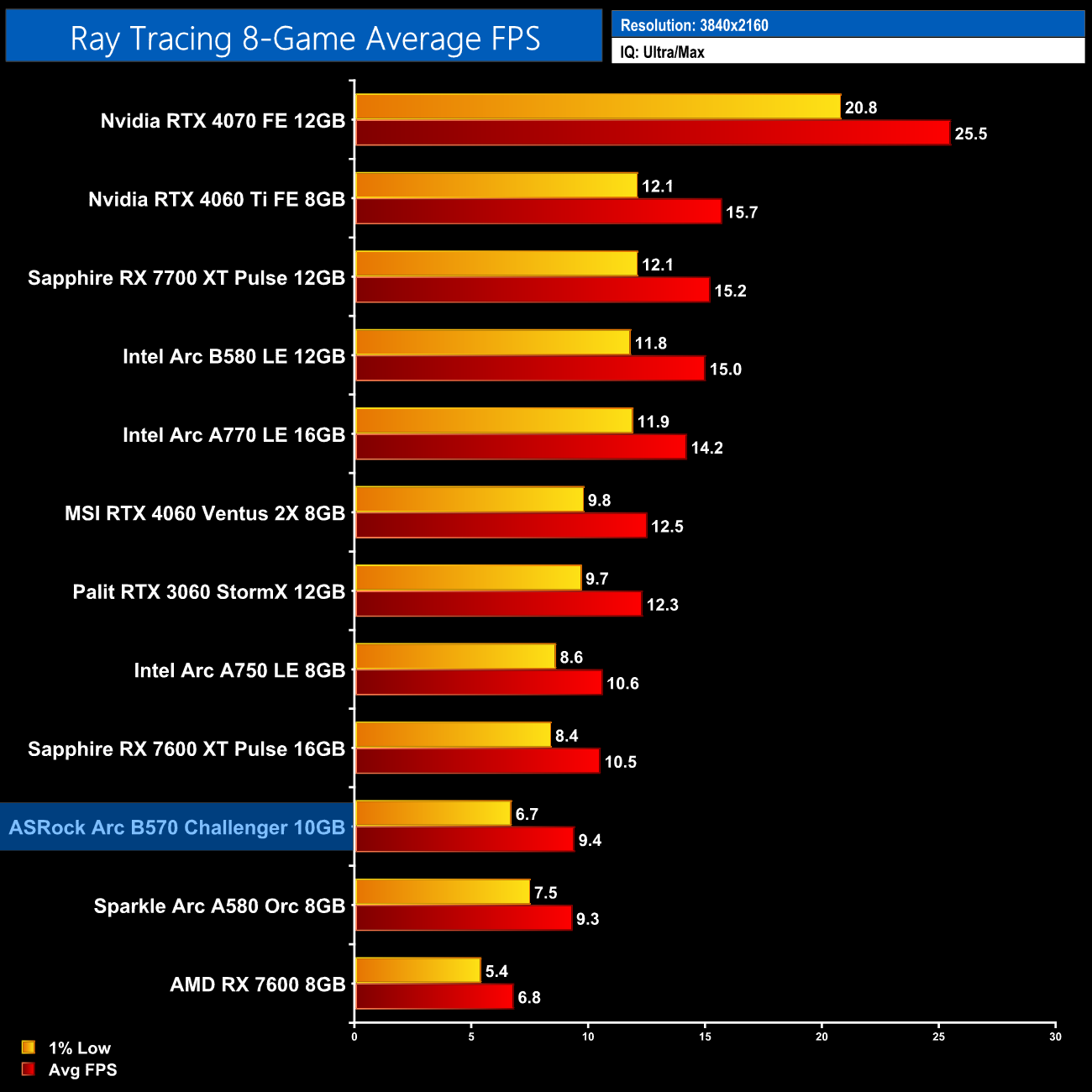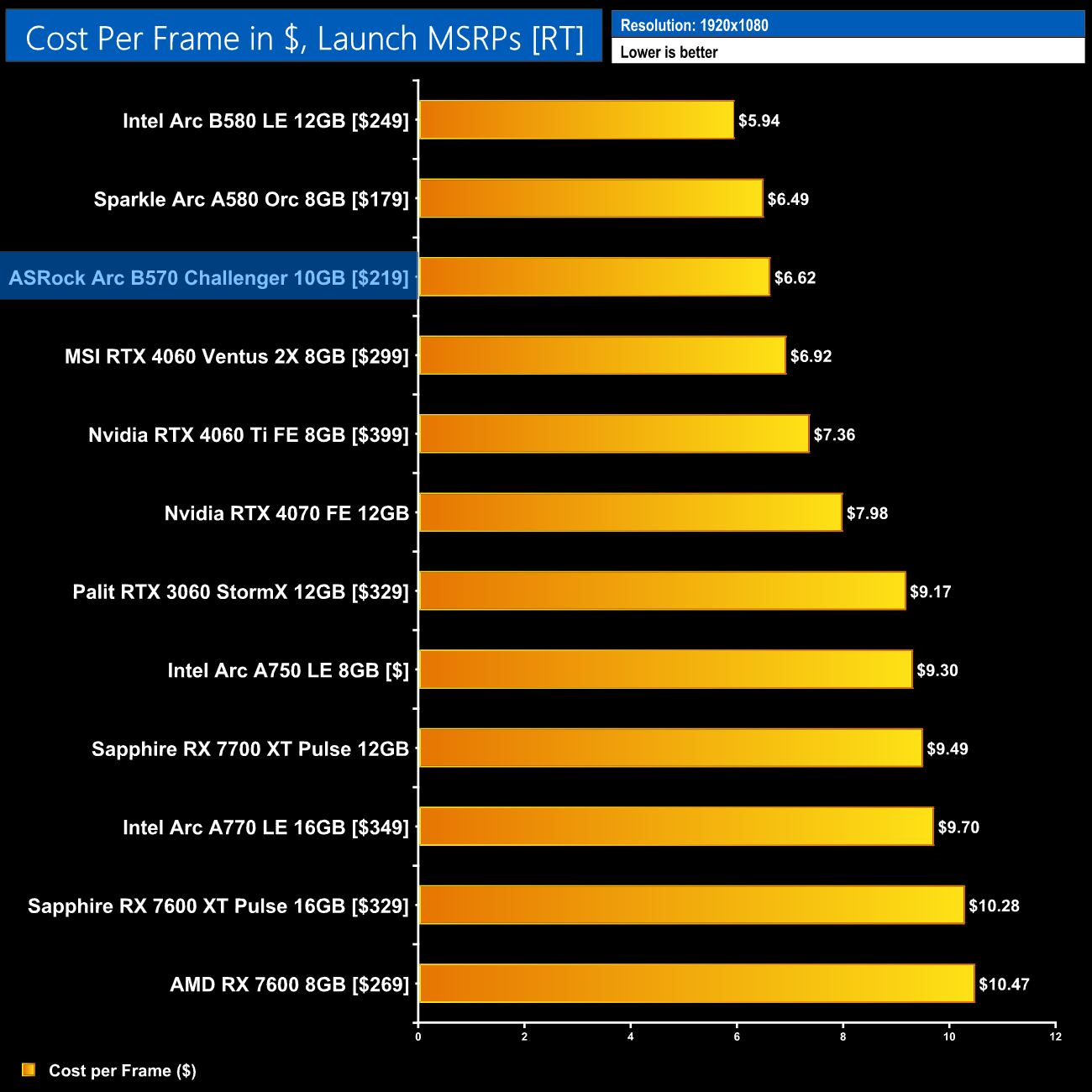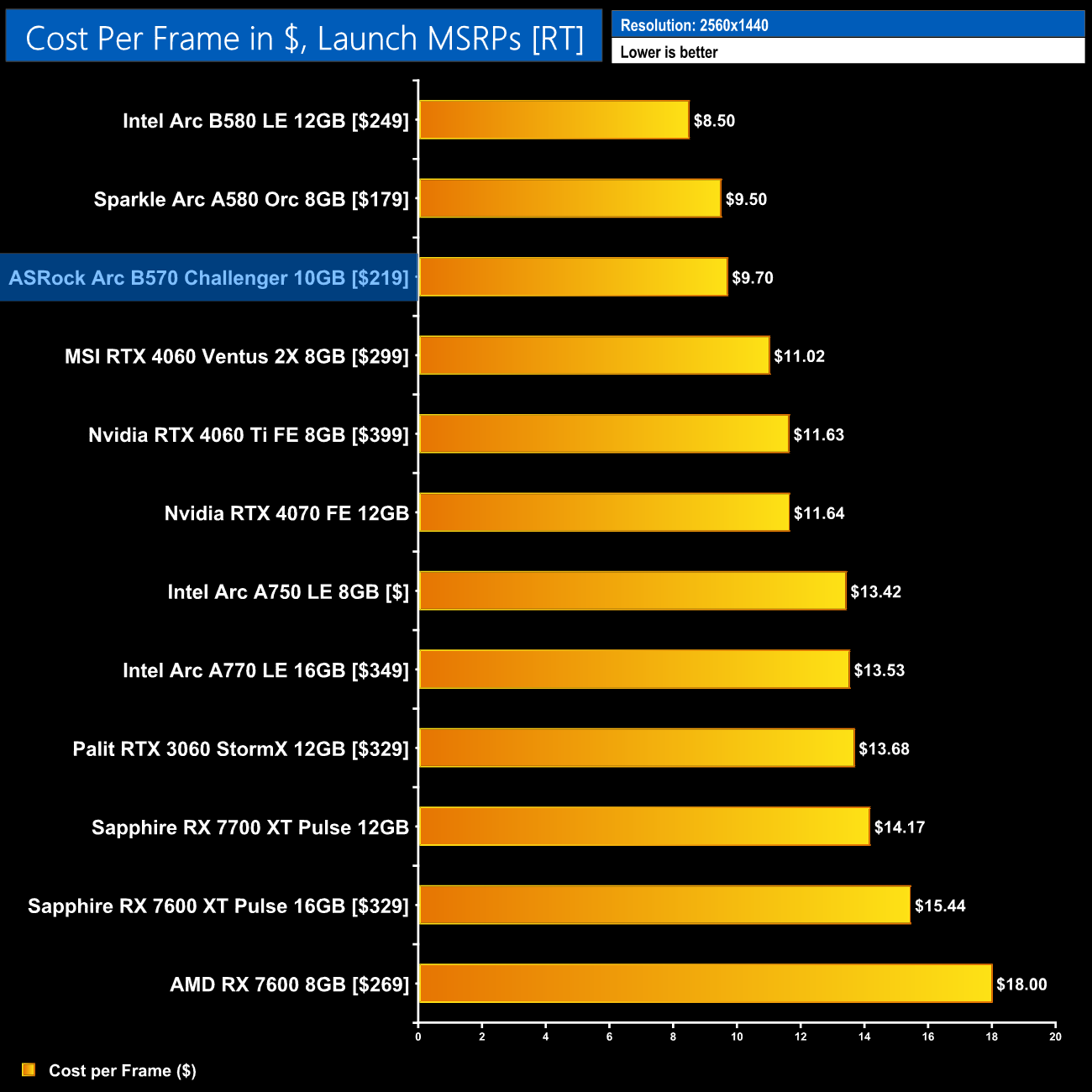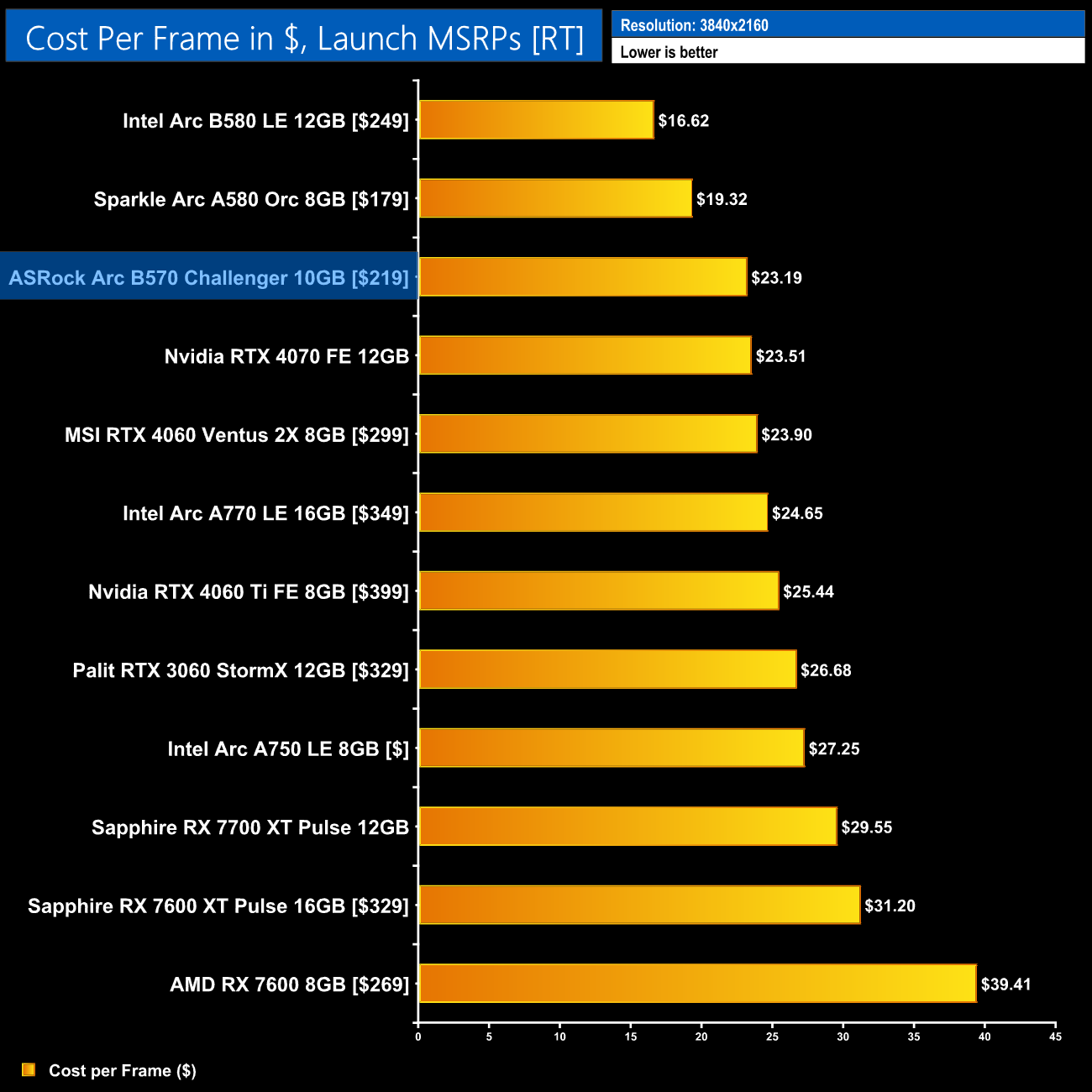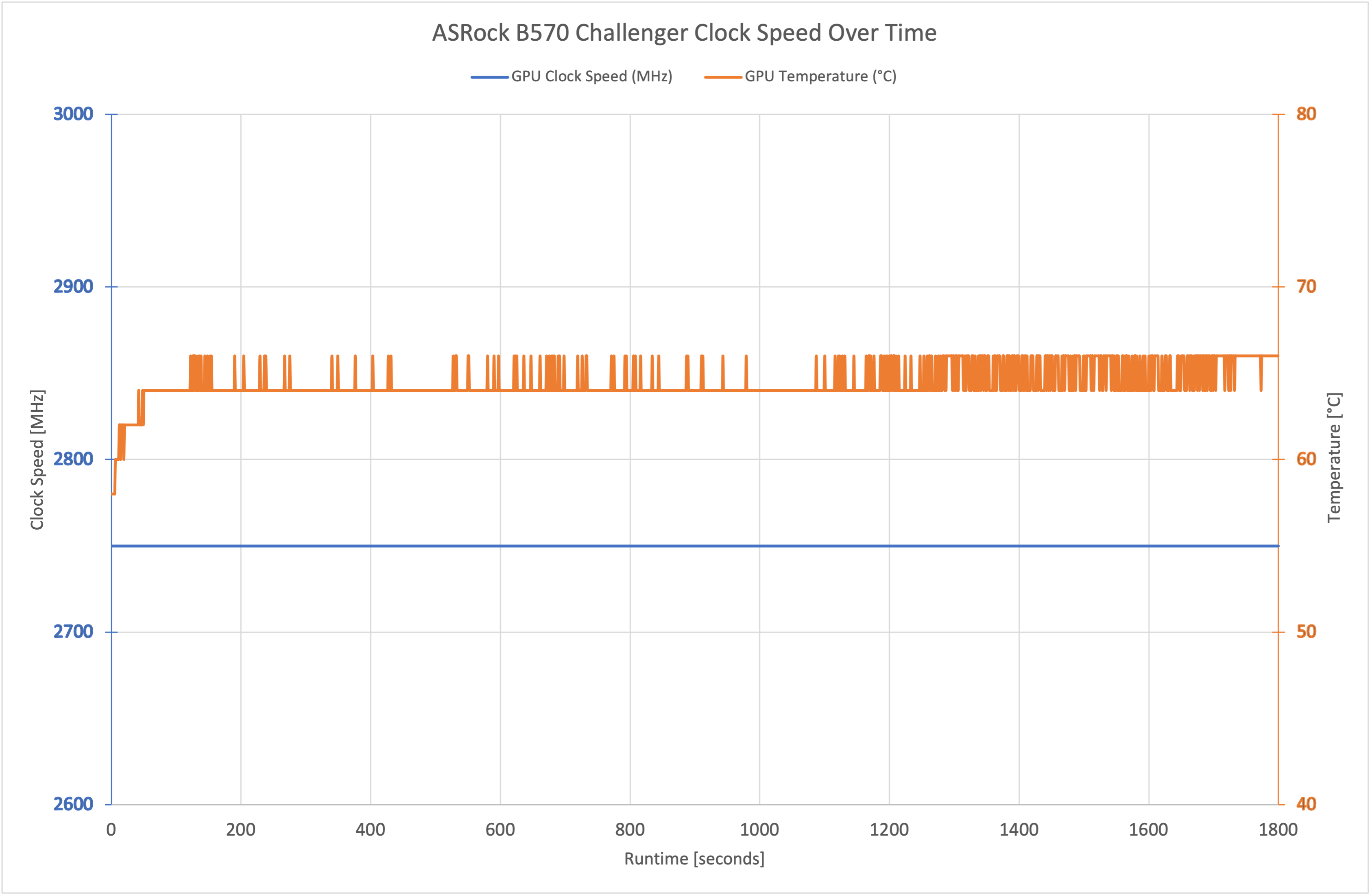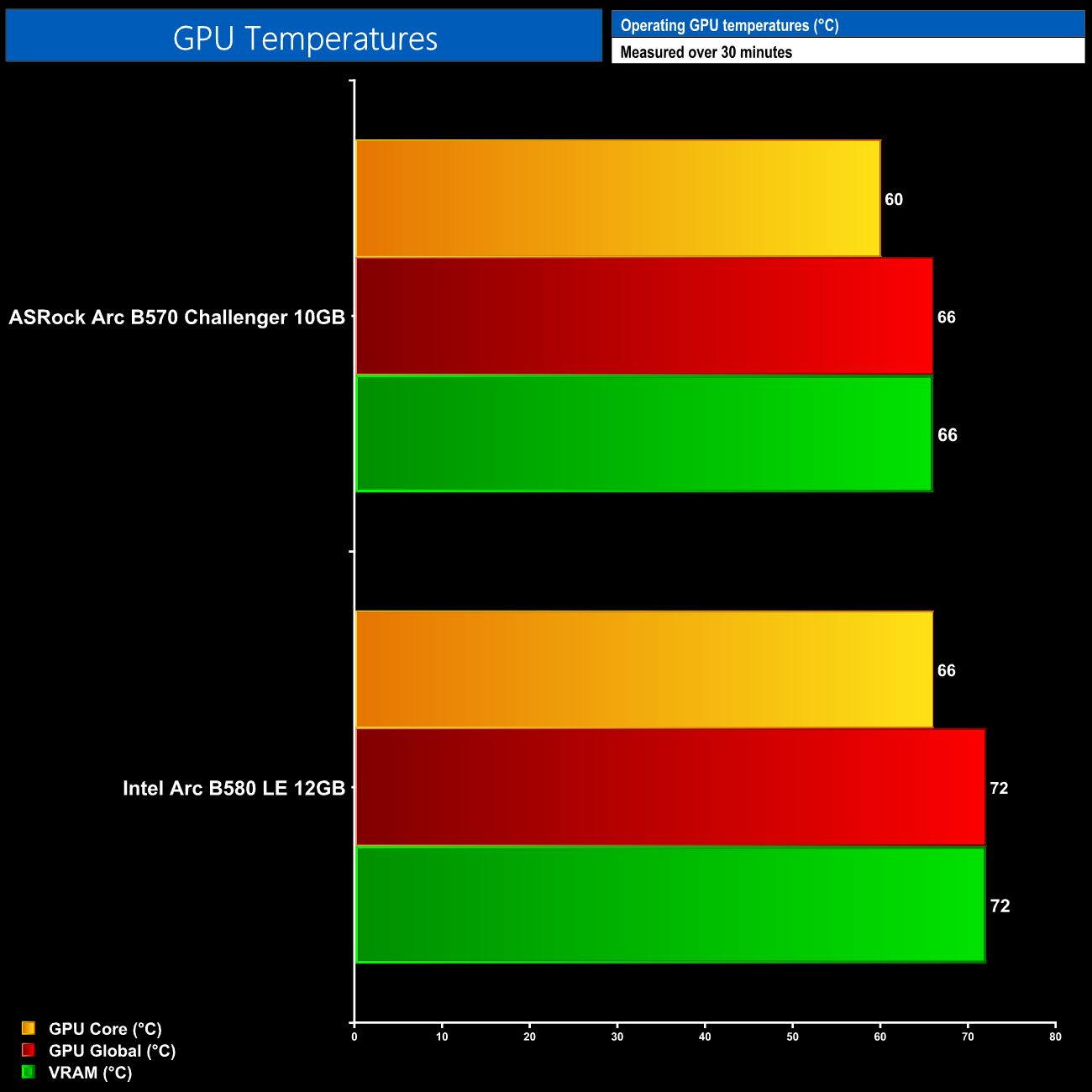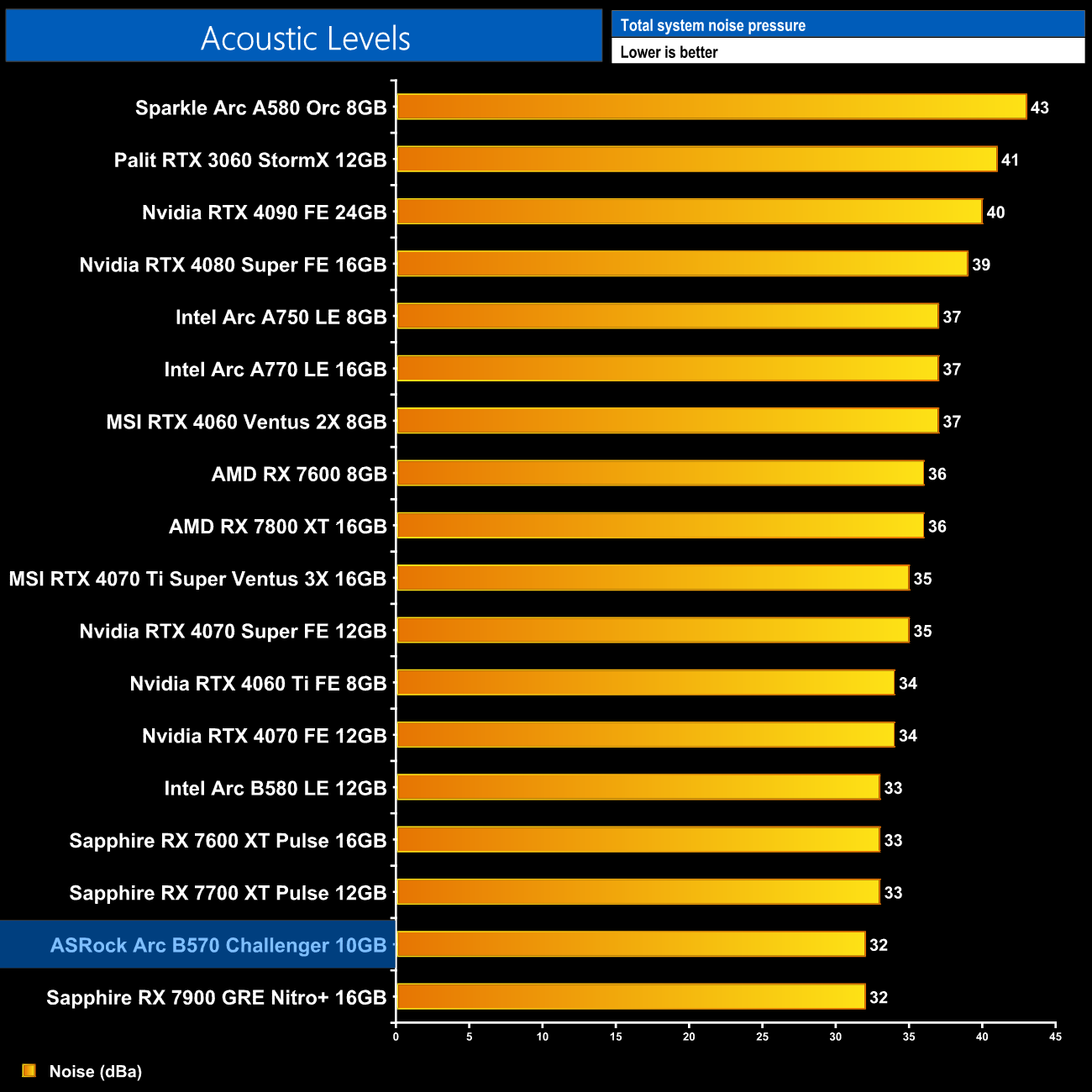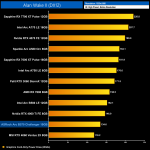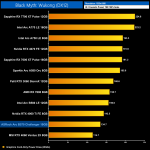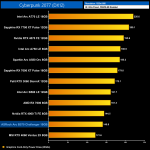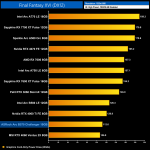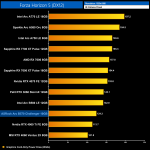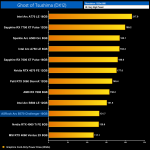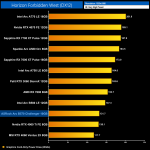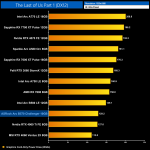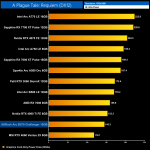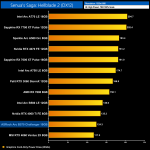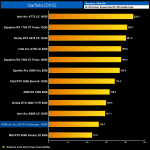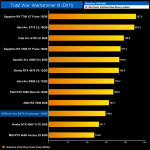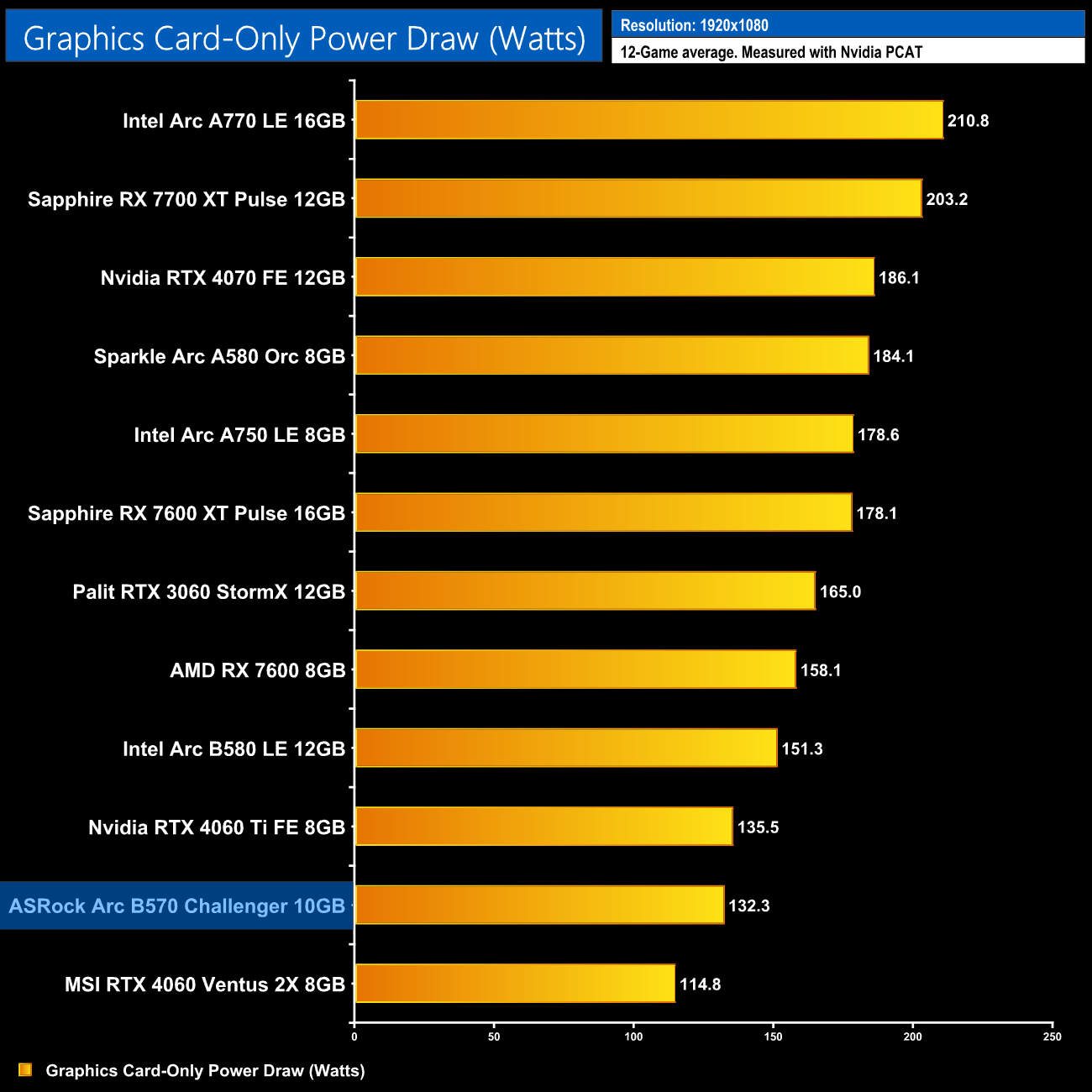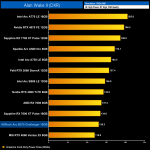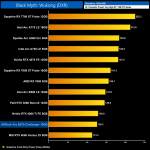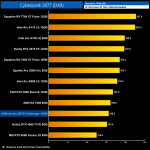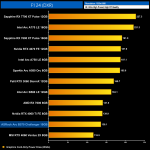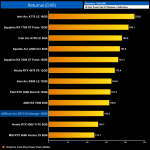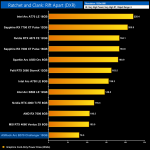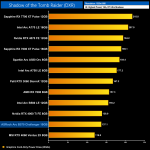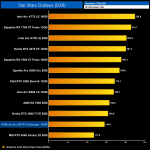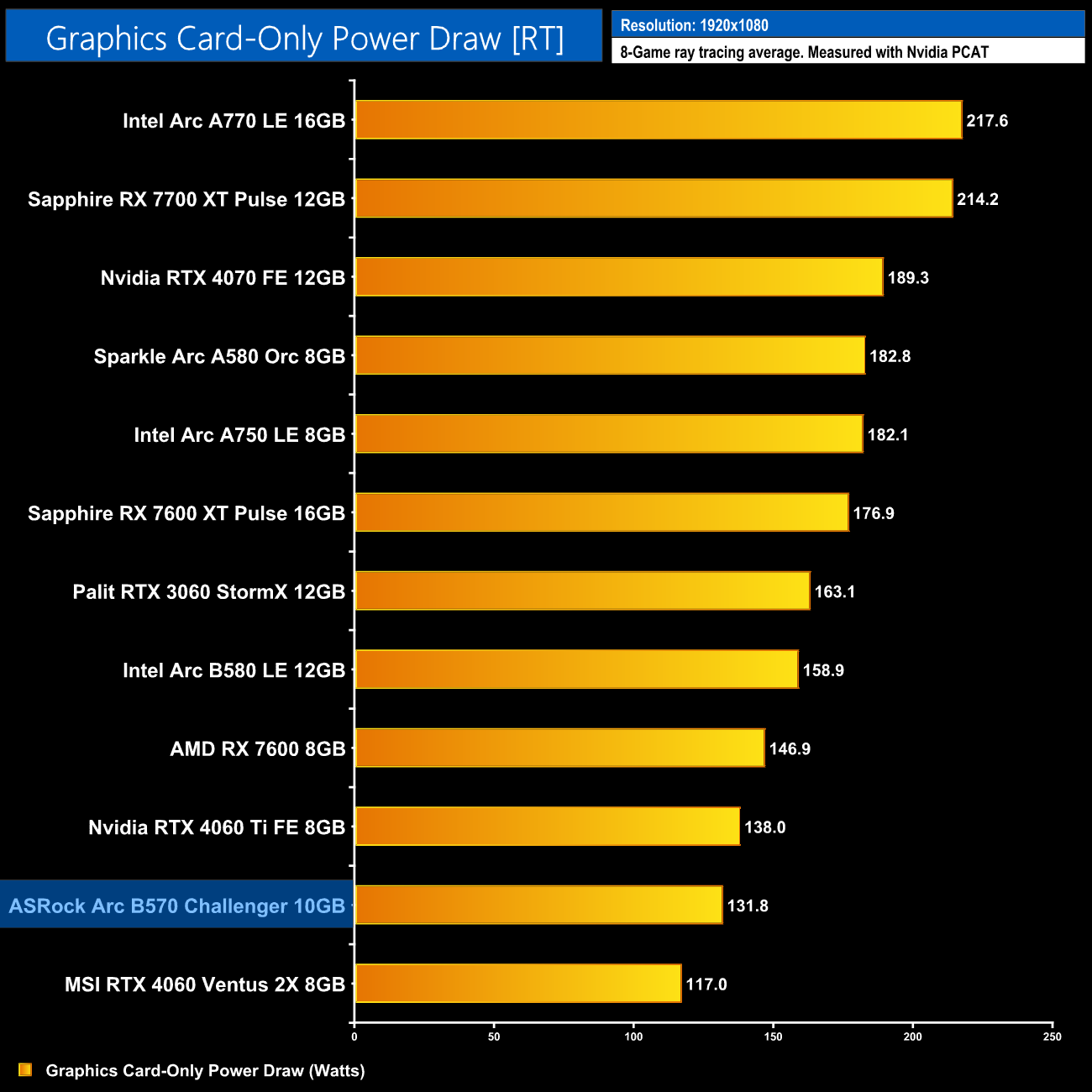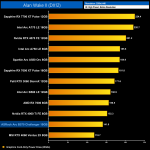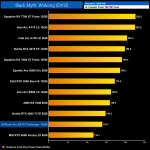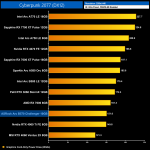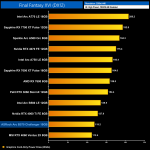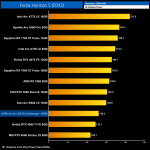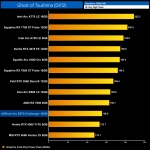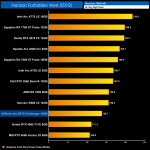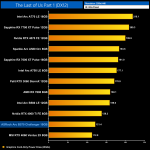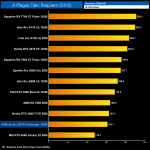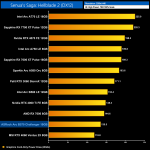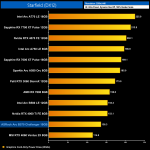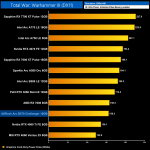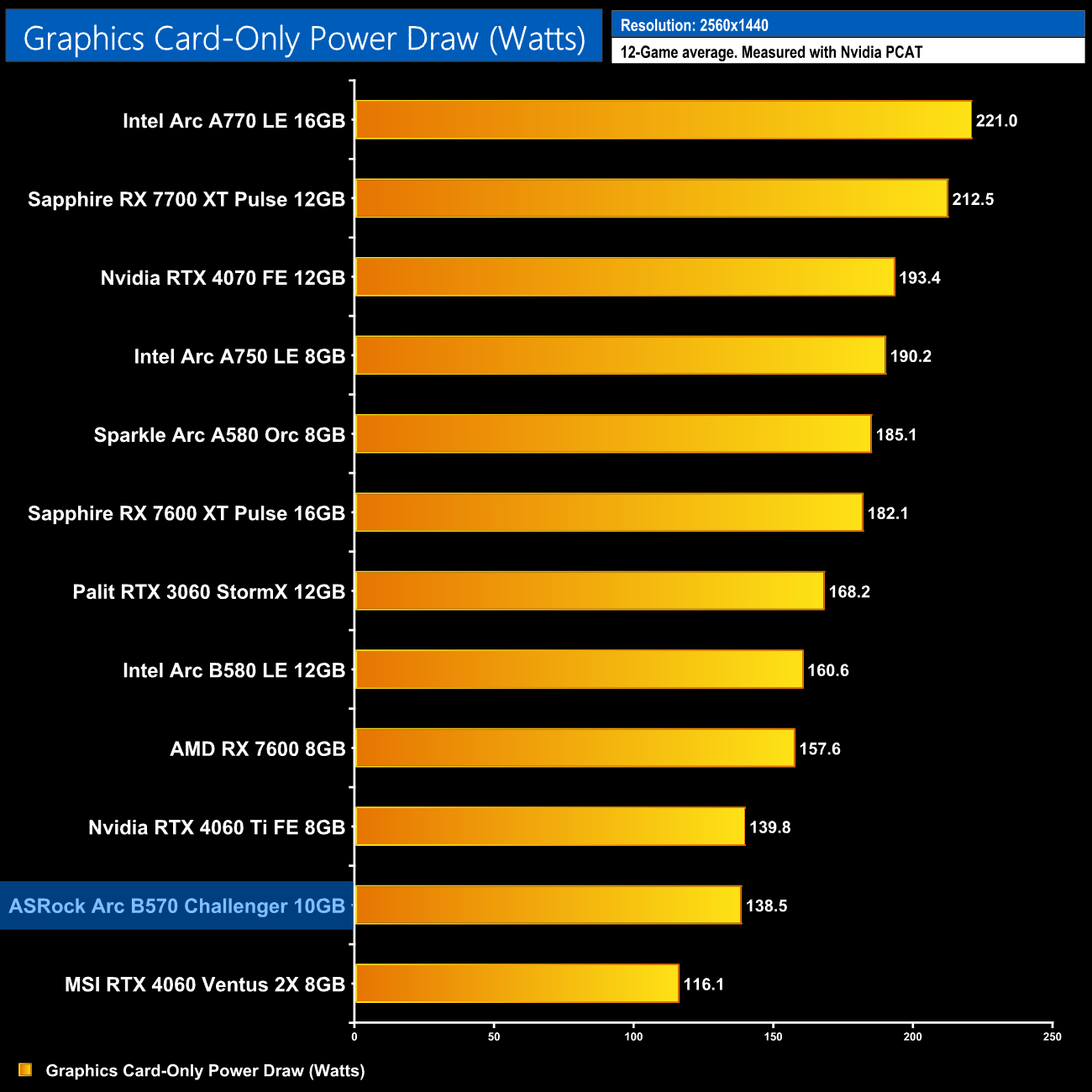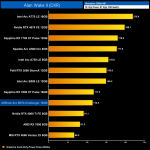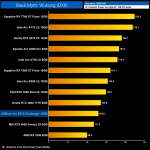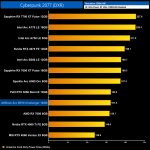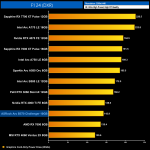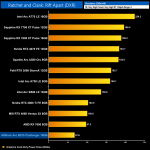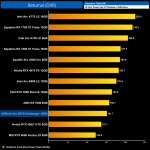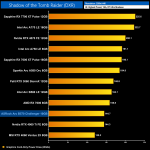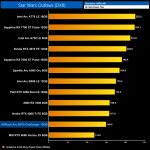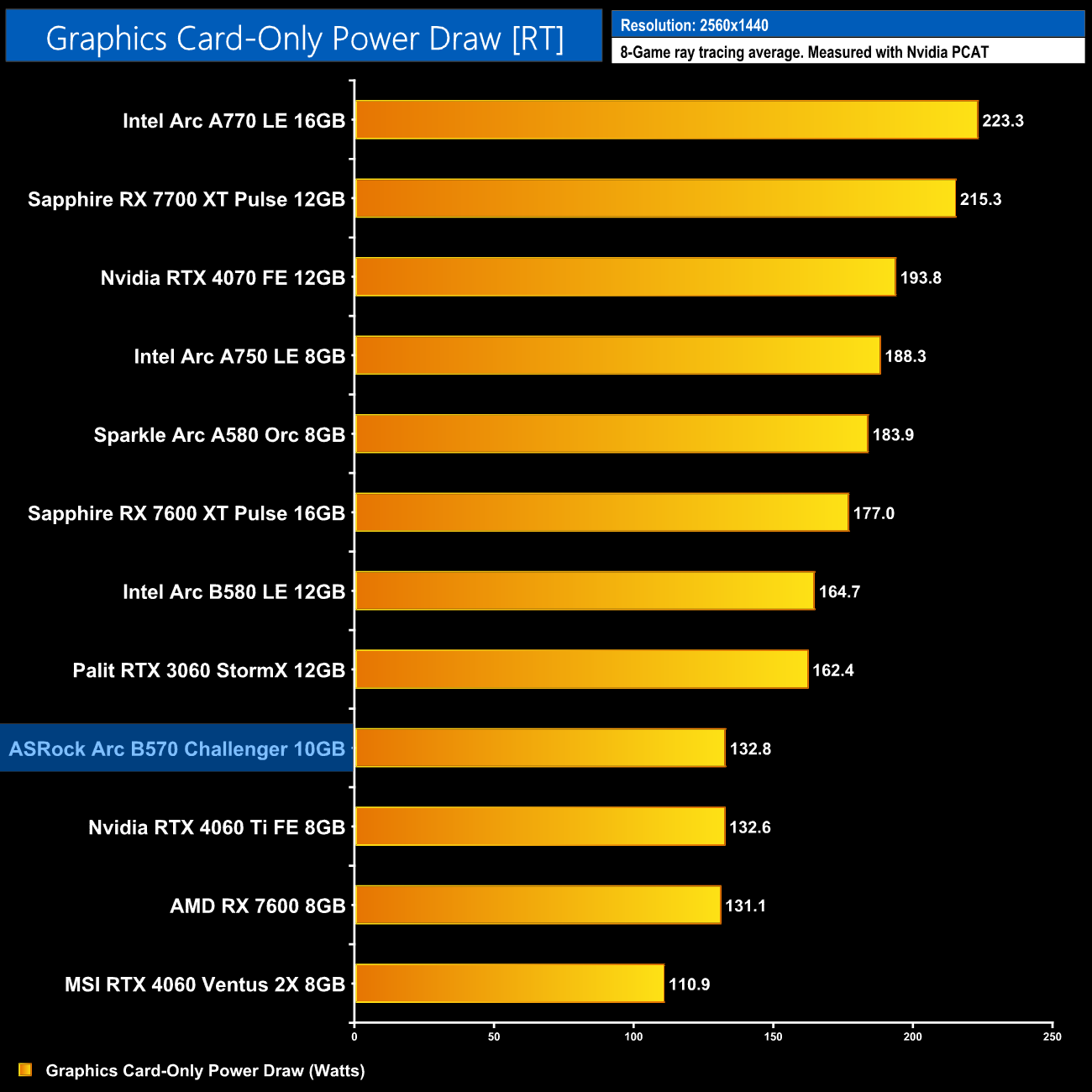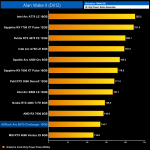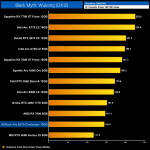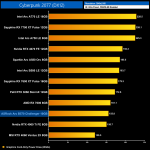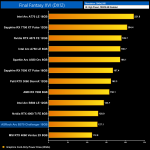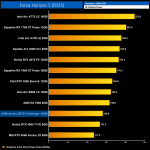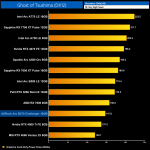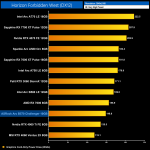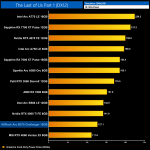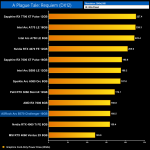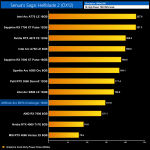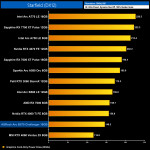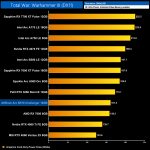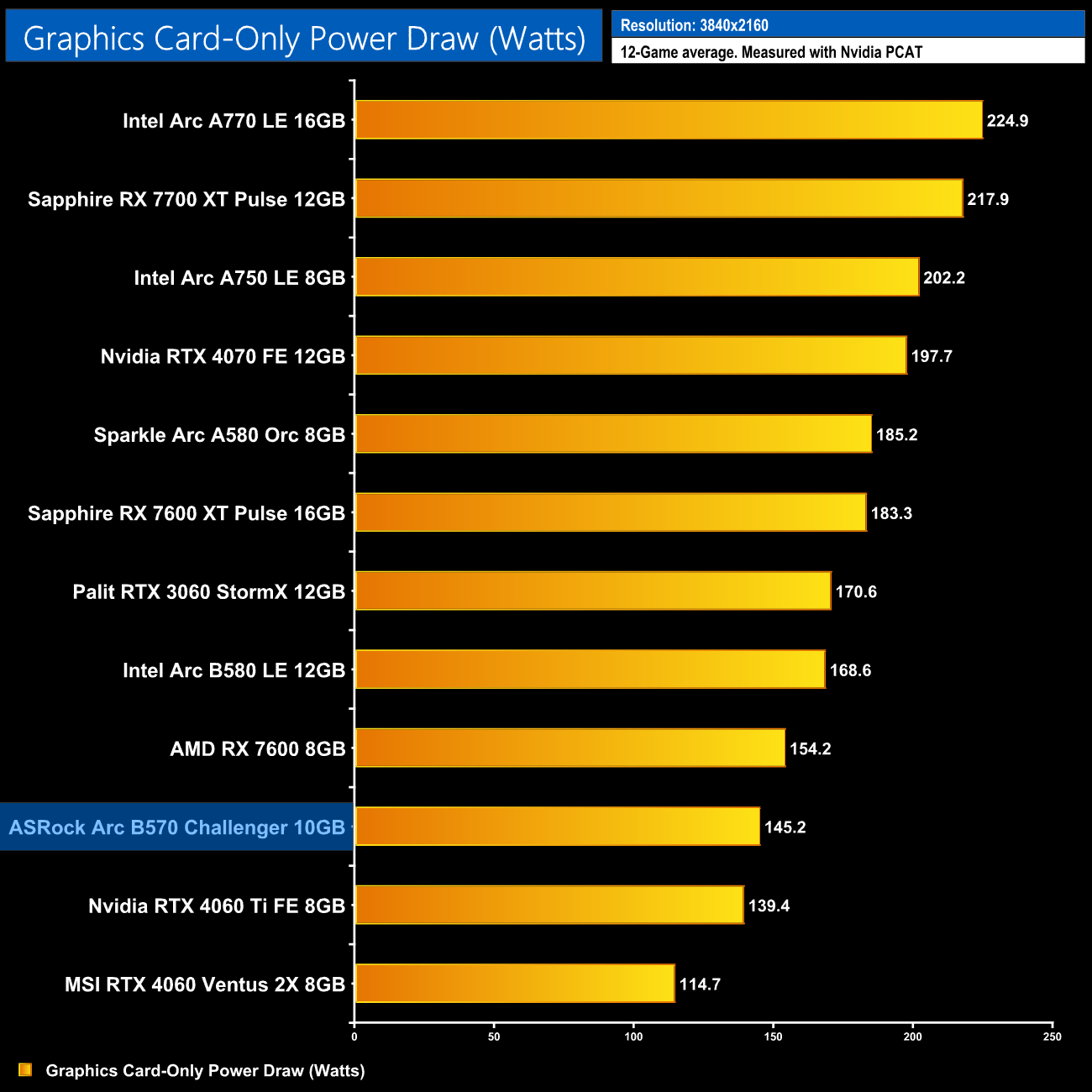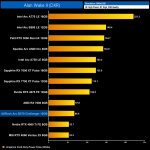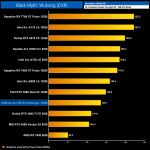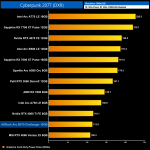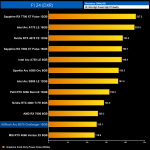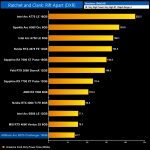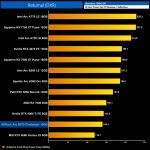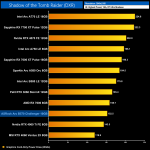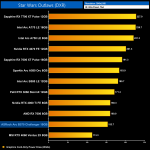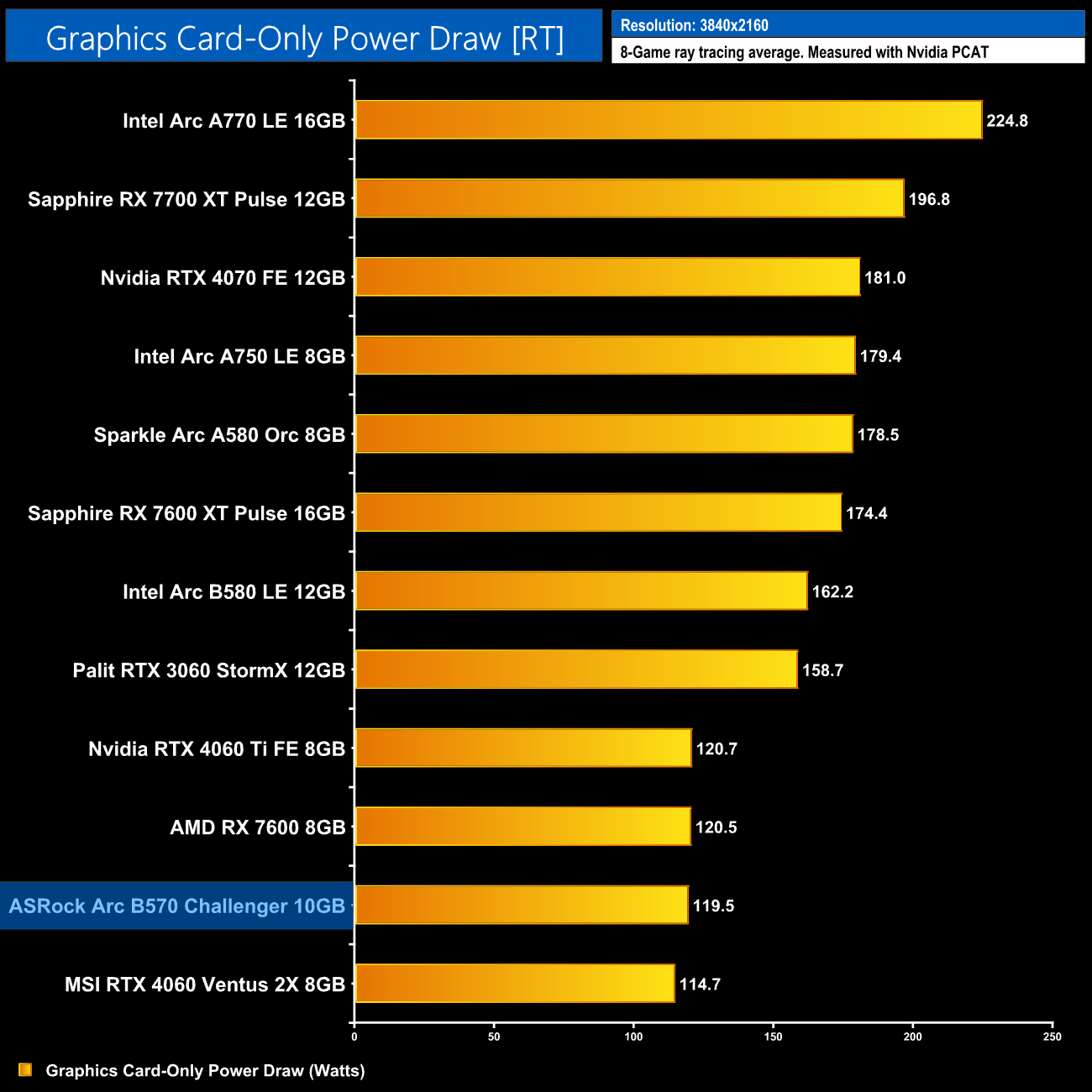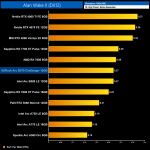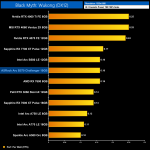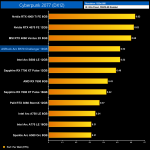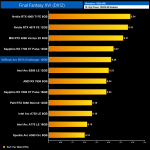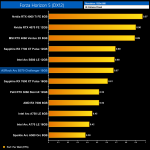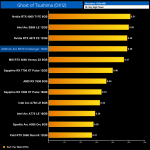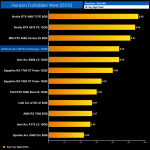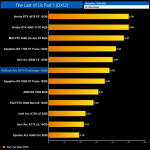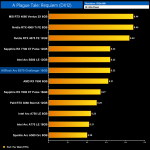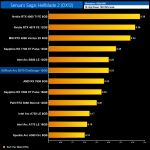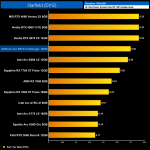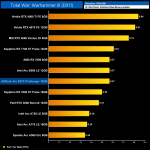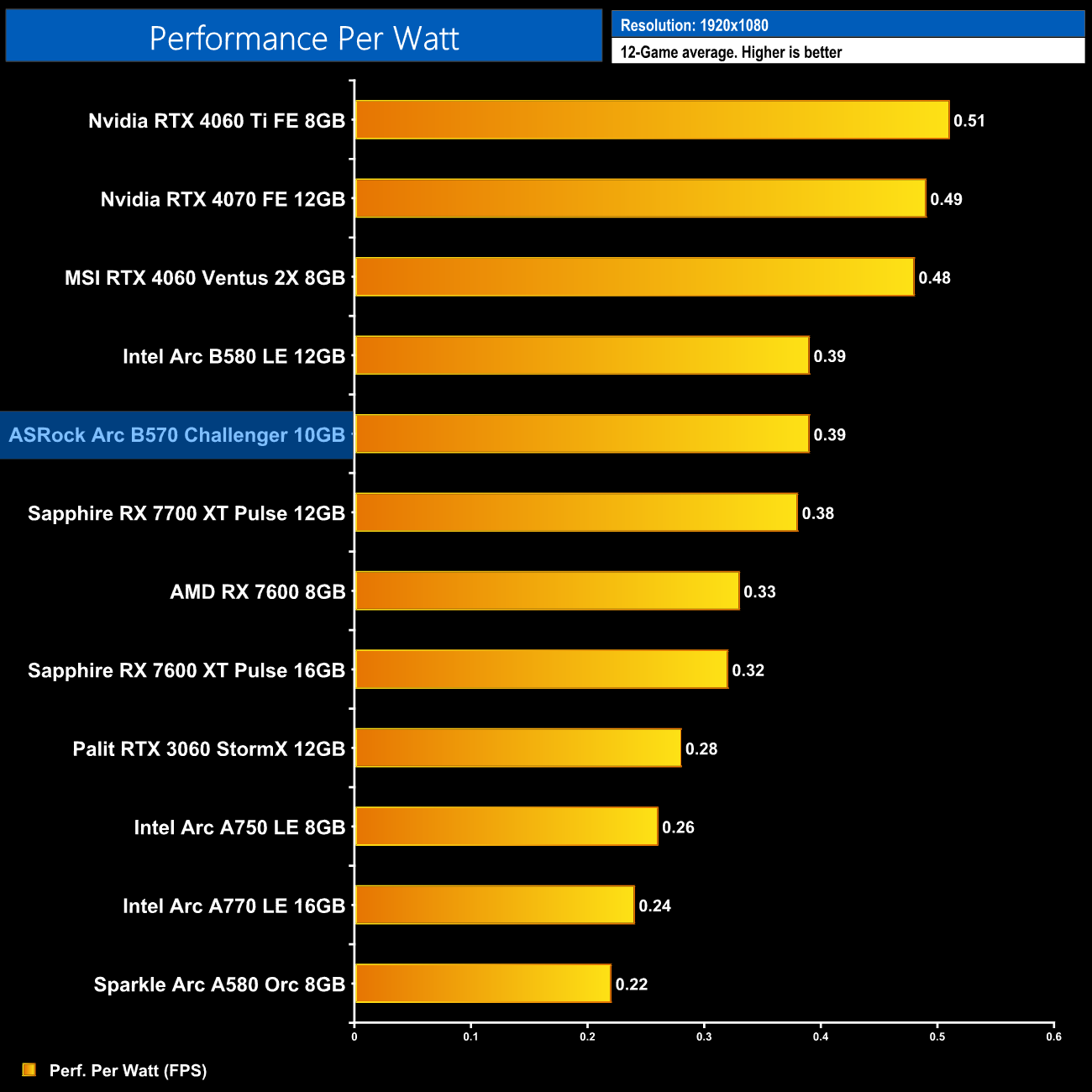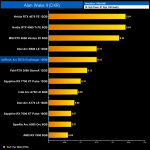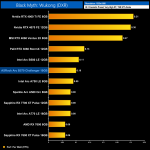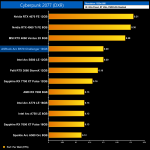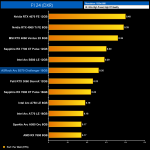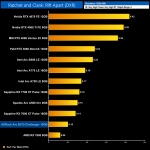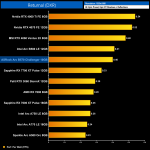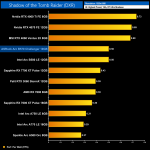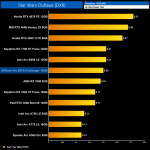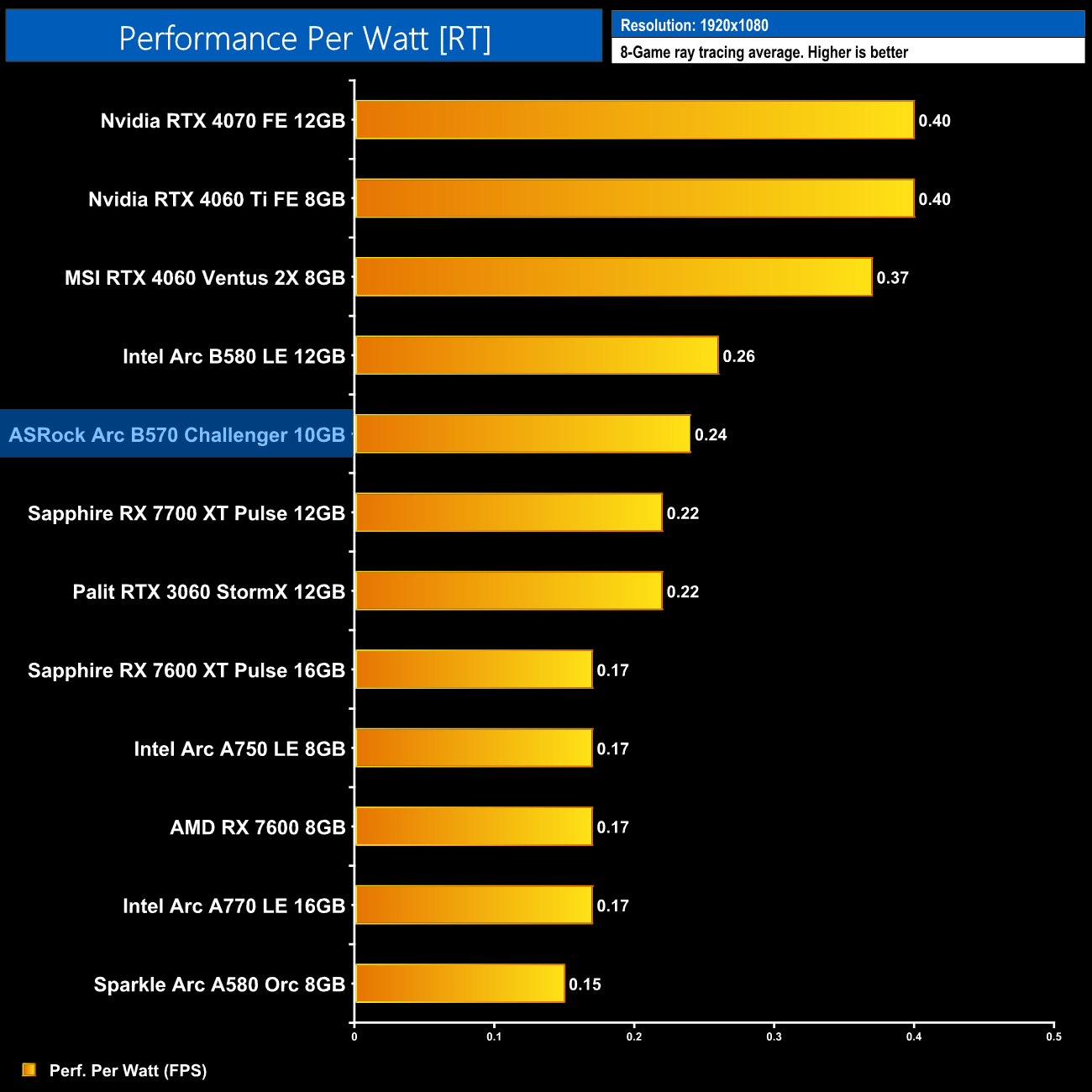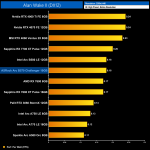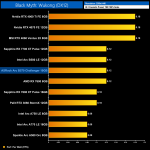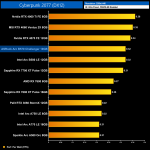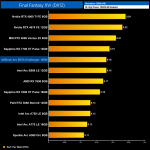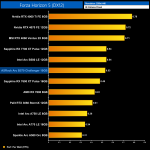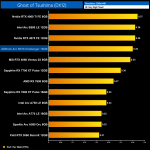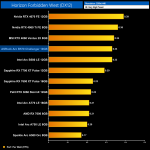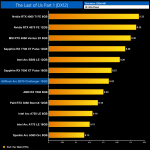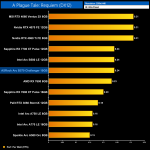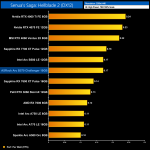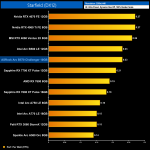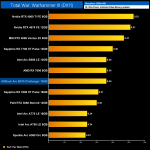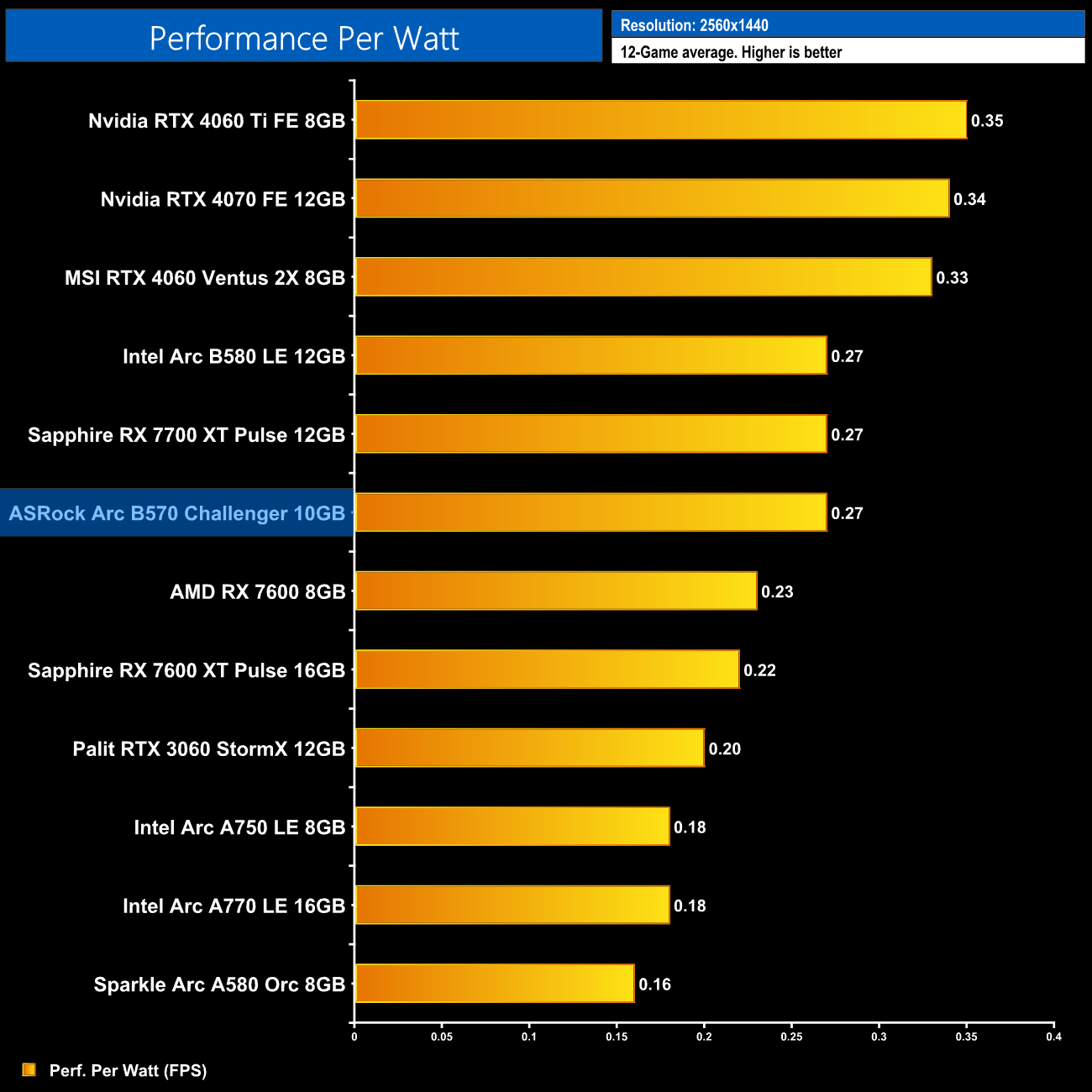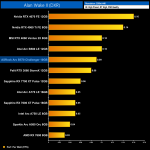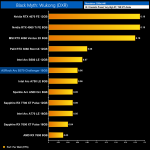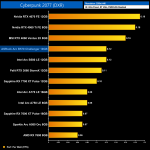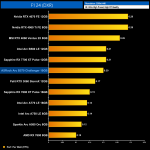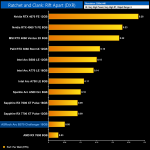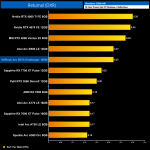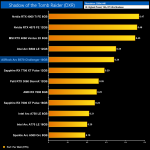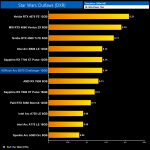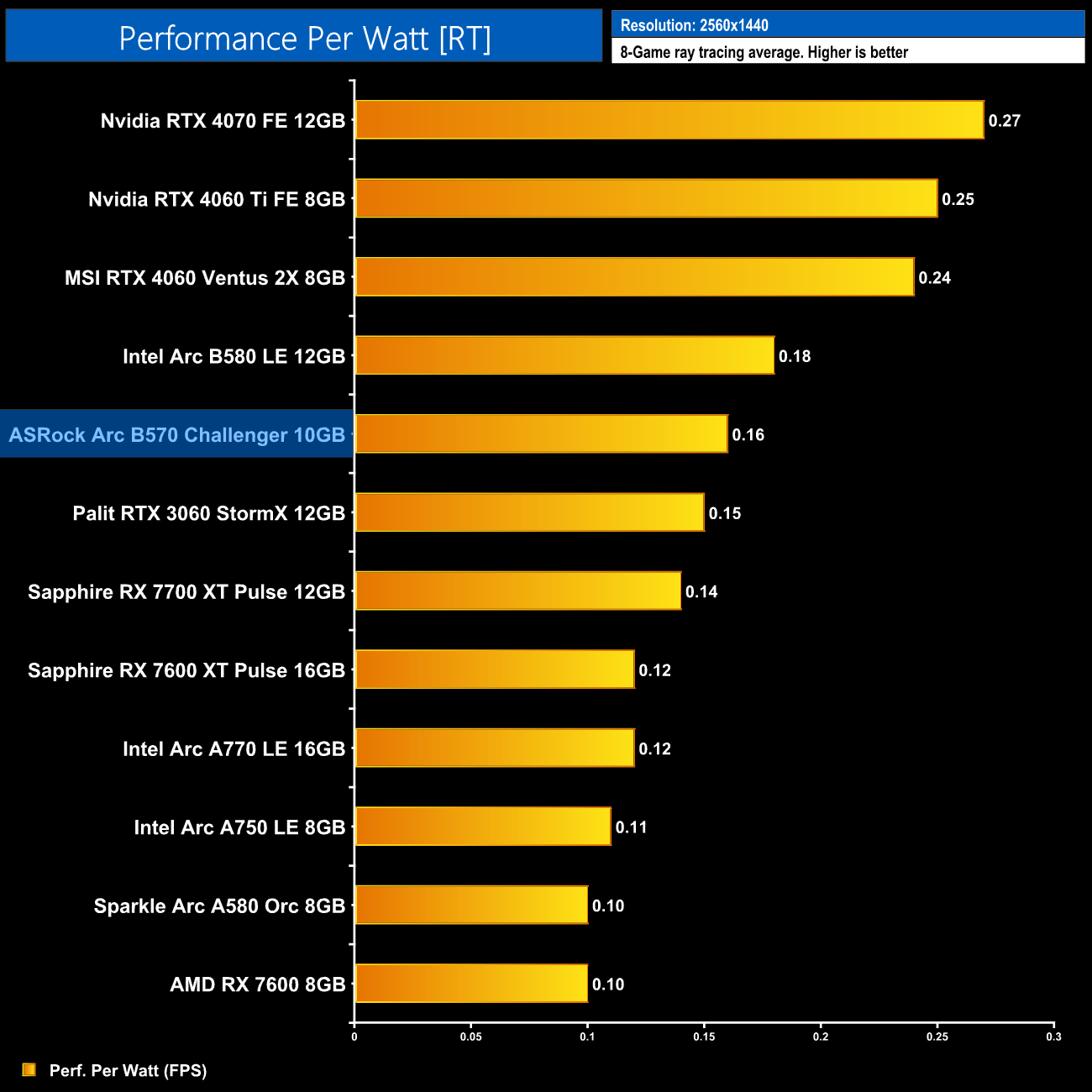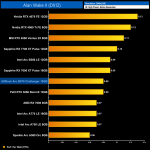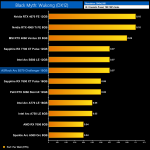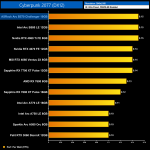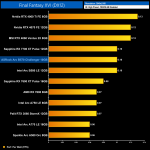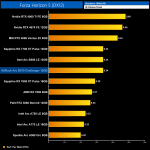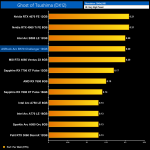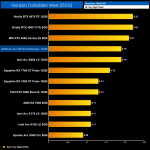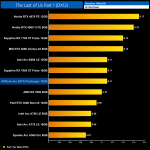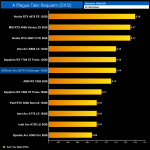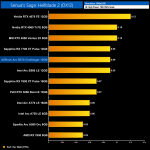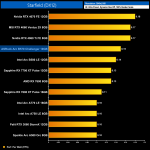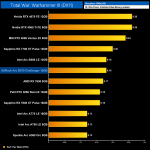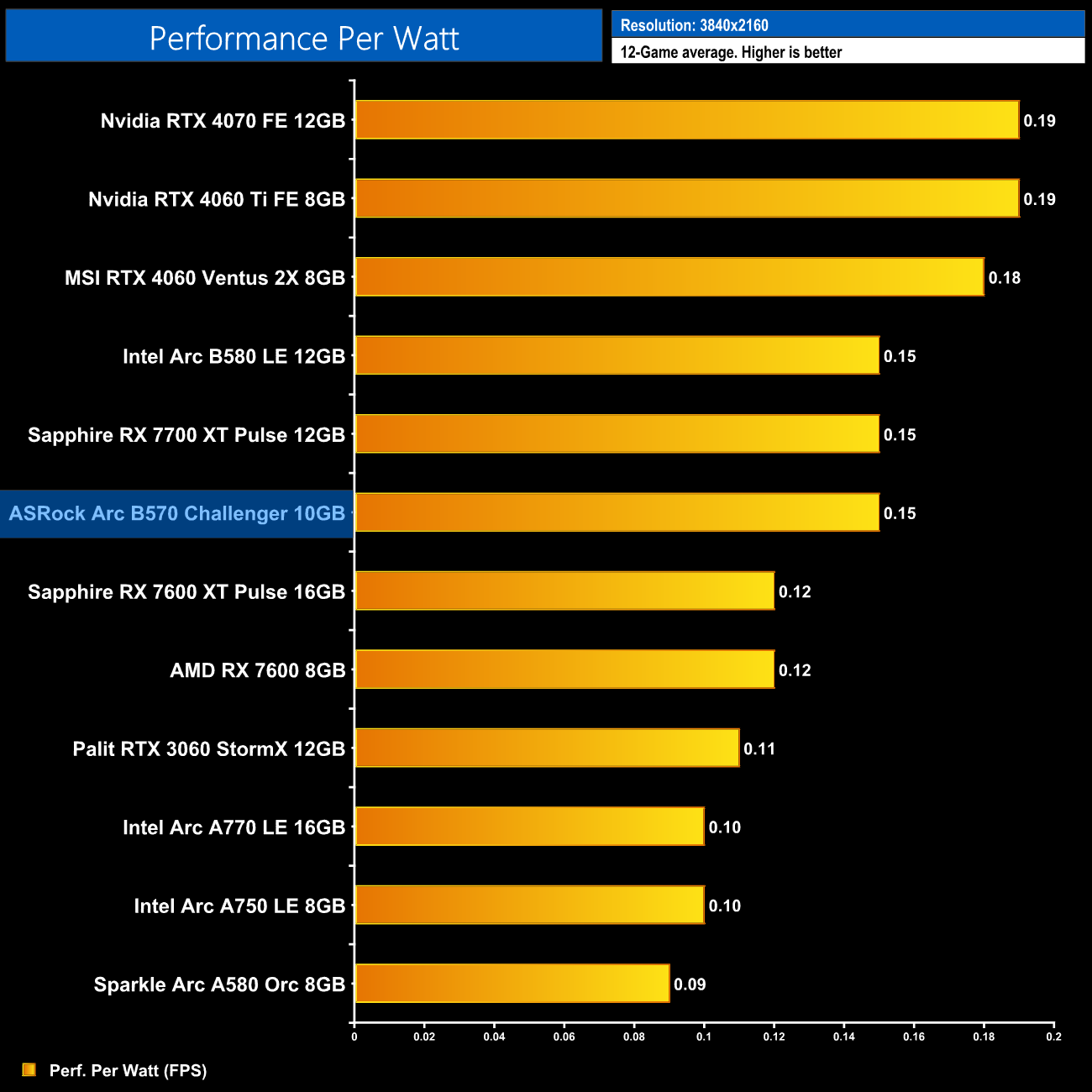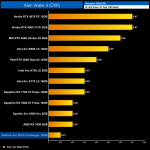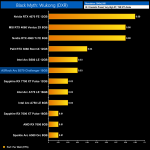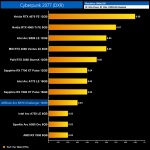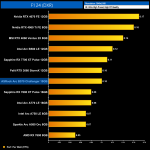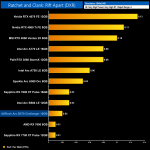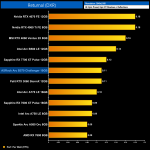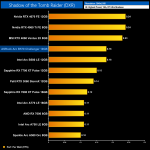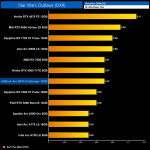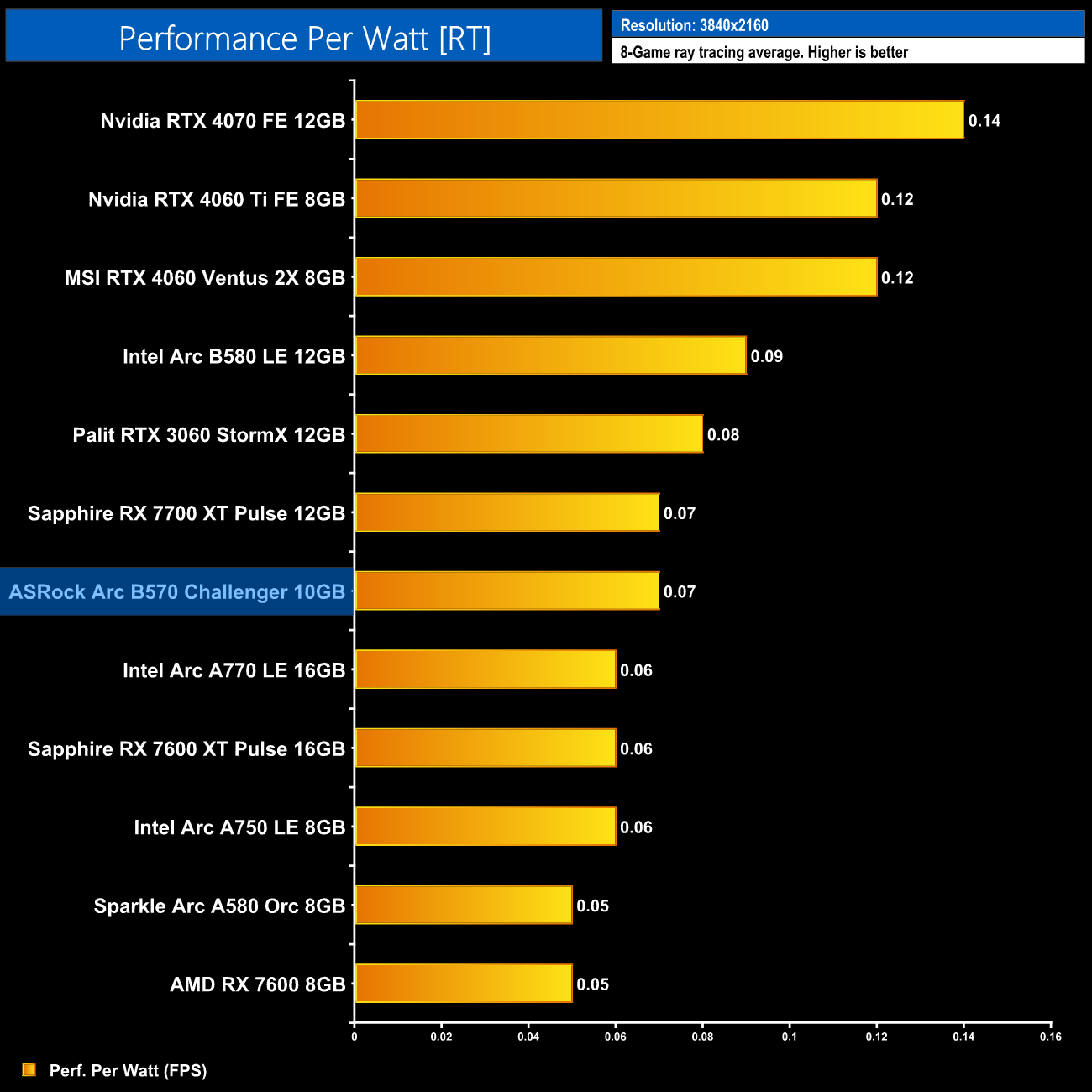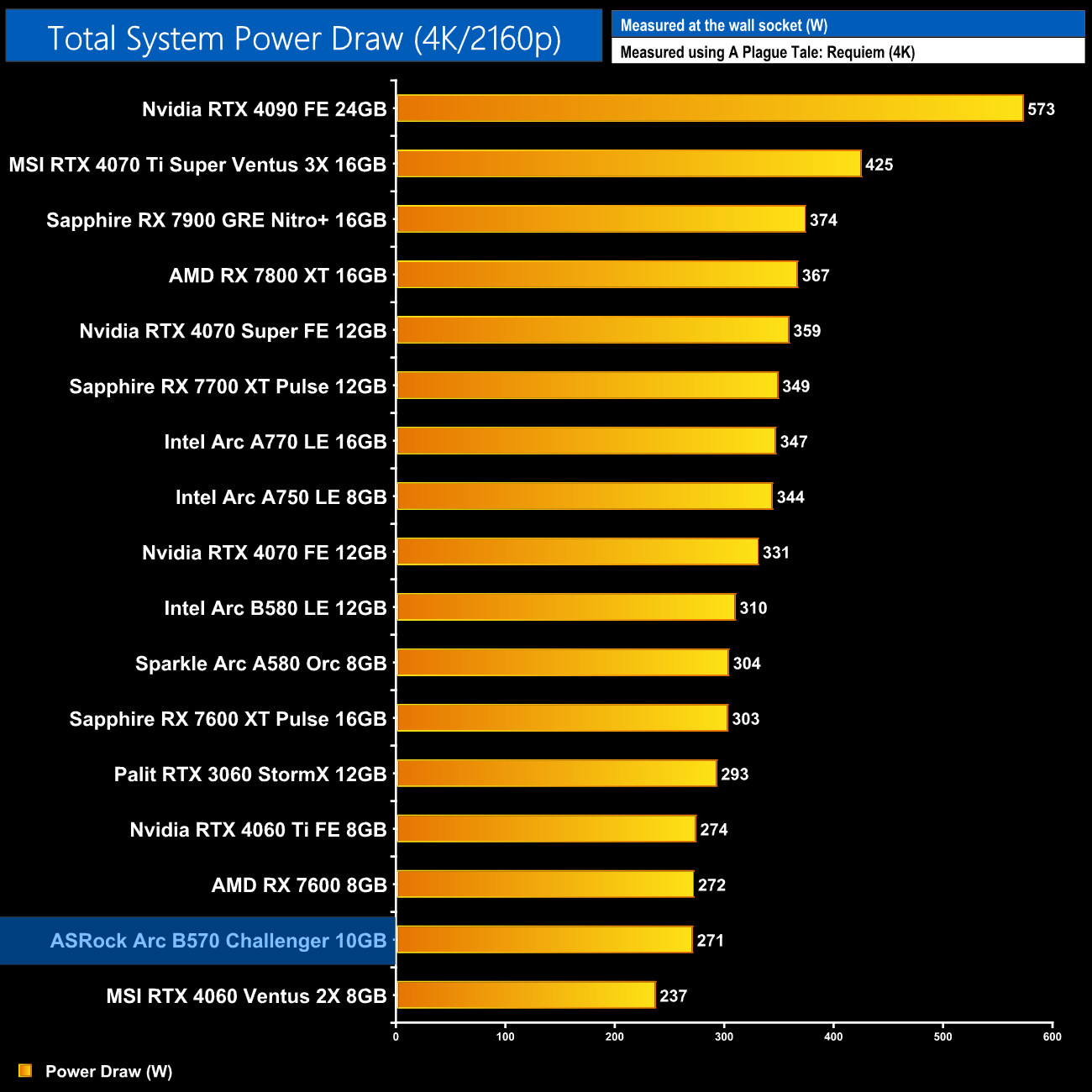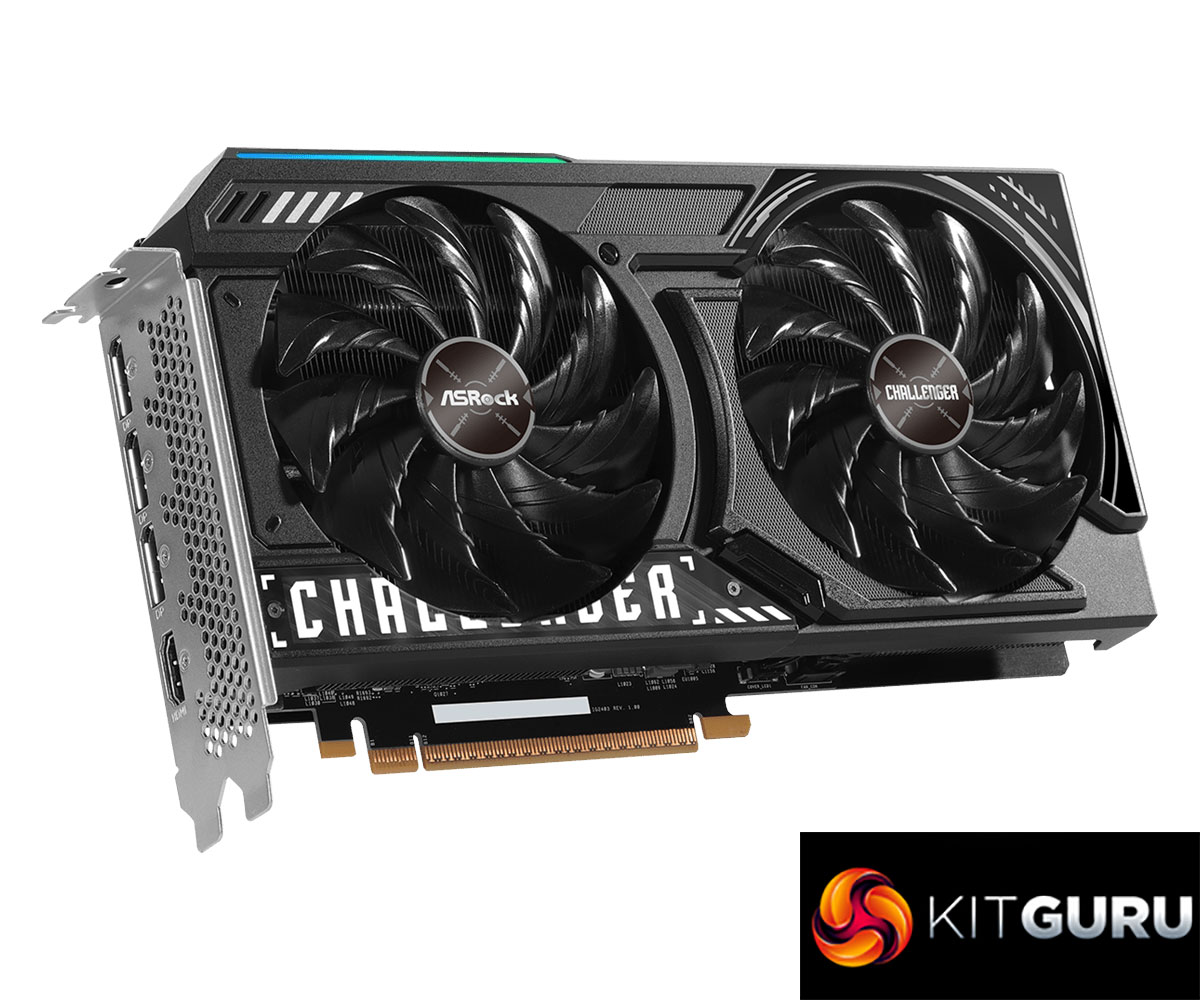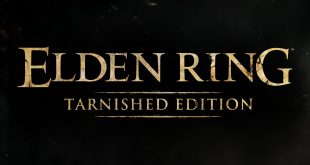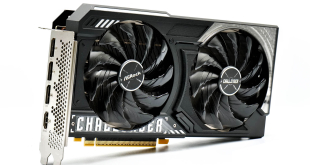
We are back with the first of many new GPU launches this year! Things are kicking off with Intel's Arc B570, the smaller sibling of the B580 that hit the market in the middle of December. Alongside its reduced specification, it also sports a reduced price, targeting a $219 MSRP, making this one of the cheapest GPUs that we have reviewed in years. What can it bring to the table at that price point, and how much slower is it than the $249 B580? All that and more is covered in today's review.
Timestamps
00:00 Intro
00:48 Recapping the B570
01:31 B570 spec and comparison to B580
02:15 Test setup
03:16 Alan Wake 2
03:48 Black Myth: Wukong
04:08 Cyberpunk 2077
04:45 Final Fantasy XVI
05:02 Forza Horizon 5
05:36 Ghost of Tsushima
06:07 Horizon Forbidden West
06:48 The Last of Us Part 1
07:04 Plague Tale: Requiem
07:30 Senua’s Saga: Hellblade 2
07:49 Starfield
08:13 Total War: Warhammer III
08:54 12-game average results
09:46 Cost per frame analysis, $ and £
10:49 RT Alan Wake II
11:07 RT Black Myth: Wukong
11:19 RT Cyberpunk 2077
12:01 RT F1 24
12:56 RT Ratchet & Clank (is totally broken)
13:25 RT Returnal
13:44 RT Shadow of the Tomb Raider
14:01 RT Star Wars Outlaws
14:22 RT 8-game average
14:49 ASRock’s B570 Challenger
16:09 Thermals and noise
16:57 Power draw and efficiency in-depth
18:33 Idle power draw, a ‘sort of’ fix
19:12 Closing thoughts
Put simply, the Arc B570 is a slightly cut-down version of the B580 that we reviewed last month. It's offering 10% fewer cores, 2GB less VRAM over a narrower memory interface, reduced clock speed, and a more frugal 150W board power rating to match. Accordingly, Intel dropped the price by 12%, targeting a $219 MSRP, with the B580 fetching a $30 premium over this new model.
Pricing and availability remains a significant challenge for the B580 however, and I've not been able to find it in stock for less than £290 over the last week, despite launching at £249. As such, pre-order pricing for the B570 has crept higher than I suspect Intel would like, sitting at £250 here in the UK.
It's also worth confirming that there's no Intel-manufactured Limited Edition – AKA reference – model for the B570 either. Instead we were sent the ASRock Challenger model, with a dual-fan cooler and metal backplate.
If you want to read this review as a single page, click HERE.
| Arc B580 | Arc B570 | Arc A770 | Arc A750 | Arc A580 | |
| Silicon | BMG-G21 | BMG-G21 | ACM-G10 | ACM-G10 | ACM-G10 |
| Process | TSMC N5 | TSMC N5 | TSMC N6 | TSMC N6 | TSMC N6 |
| Render Slices | 5 | 5 | 8 | 7 | 6 |
| Xe Cores | 20 | 18 | 32 | 28 | 24 |
| Shaders | 2560 | 2304 | 4096 | 3584 | 3072 |
| XMX Engines | 160 | 144 | 512 | 448 | 384 |
| RT Units | 20 | 18 | 32 | 28 | 24 |
| Texture Units | 160 | 144 | 256 | 224 | 192 |
| ROPs | 80 | 80 | 128 | 112 | 96 |
| Graphics Clock | 2670 MHz | 2500 MHz | 2100 MHz | 2050 MHz | 1700 MHz |
| Memory Config | 12GB GDDR6 | 10GB GDDR6 | 8/16GB GDDR6 | 8GB GDDR6 | 8GB GDDR6 |
| Memory Data Rate | 19 Gbps | 19 Gbps | 17.5 Gbps | 16 Gbps | 16 Gbps |
| Memory Interface | 192-bit | 160-bit | 256-bit | 256-bit | 256-bit |
| Memory Bandwidth | 456 GB/s | 380 GB/s | 560 GB/s | 512 GB/s | 512 GB/s |
| PCIe Interface | Gen 4 x8 | Gen 4 x8 | Gen 4 x16 | Gen 4 x16 | Gen 4 x16 |
| TBP | 190W | 150W | 225W | 225W | 185W |
First, it's worth recapping the specs for this new GPU. Built on the Xe2 architecture, the B570 uses the same BMG-G21 die as the B580, which is fabricated on TSMC's N5 node, and it has a die size of 272mm2. Comprised of 5 render slices, it is here cut-down to offer 18 cores. Each Xe core offers 16 vector engines, with each vector engine housing eight FP32 ALUs, for a grand total of 2304. Each Xe core is accompanied by a Ray Tracing Unit, while we also find 144 TMUs and 80 ROPs.
The memory subsystem, meanwhile, is new for an Arc GPU. We find 10GB of GDDR6 operating over a 160-bit memory interface, and with memory speed at 19Gbps, total memory bandwidth hits 380 GB/s.
Intel has also been able to crank up the clock speed significantly with Battlemage, but while the B580 has a rated graphics clock of 2670MHz, the B570 is slightly slower, rated at 2500MHz but with a 2750MHz peak clock.
Lastly, total board power is rated at 150W, something we look at closely in this review using our in-depth power testing methodology.
The ASRock Arc B570 Challenger ships in a mostly black box, but with the Arc branding in the bottom right corner giving us a splash of colour. On the back, ASRock highlights various key features of the card itself.
Included accessories are minimal, with just a quick-start guide and another leaflet with a QR code which points users to Intel's own Arc Quick Start Guide.
As for the card itself, it's a relatively conventional-looking design, with a black plastic shroud that's accented with some reflective areas, alongside the Challenger branding. It's obviously a dual-fan unit, and each fan measures approximately 100mm in diameter.
In terms of its size, the Challenger is a little bit bigger than the B580 Limited Edition, but it's still a compact dual-slot card. Its official dimensions come in at 249 x 132 x 41mm.
The front side of the card is home to the ASRock and Intel Arc logos, plus there's a small blue/green LED strip which you can see in our video review.
Pleasingly, ASRock has fitted a metal backplate to the card – I, for one, never want to see a cheap plastic backplate ever again so this is a positive move. It also features a large flow-through cut-out, to allow air to pass directly through the heatsink.
Power is supplied by a single 8-pin connector, while we find 3x DisplayPort 2.1 and 1x HDMI 2.1 video connectors. Please note, the middle DP port is rated for UHBR13.5 bandwidth, while the others are UHBR10.
Driver Notes
- AMD GPUs were benchmarked with the Adrenalin 24.12.1 driver.
- Nvidia GPUs were benchmarked with the 566.14 driver.
- Intel GPUs (except B580 and B570) were benchmarked with the 101.6314 driver.
- Intel B580 was benchmarked with the 101.6249 driver supplied to press.
- Intel B570 was benchmarked with the 101.6256 driver supplied to press.
Results are only directly comparable where this exact configuration has been used.
Test System:
We test using a custom built system powered by MSI, based on AMD's Zen 5 platform. You can view the Powered by MSI store on AWD-IT's website HERE.
| CPU |
AMD Ryzen 7 9800X3D
|
| Motherboard |
MSI MPG X870E Carbon WiFi
|
| Memory |
64GB (2x32GB) Kingston Fury Beast DDR5 6000MT/s CL30
|
| Graphics Card |
Varies
|
| SSD |
4TB Kingston NV3 Gen 4 PCIe NVMe
|
| Chassis | MSI MPG Gungnir 300R Airflow |
| CPU Cooler |
MSI MAG CoreLiquid i360
|
| Power Supply |
MSI MEG Ai1300P
|
| Operating System |
Windows 11 23H2
|
| Monitor |
MSI MPG 321URX QD-OLED
|
| Resizable BAR |
Enabled for all supported GPUs
|
Comparison Graphics Cards List
- AMD RX 7600 8GB
- Sapphire RX 7600 XT Pulse 16GB
- Sapphire RX 7700 XT Pulse 12GB
- Intel Arc B580 LE 12GB
- Sparkle Arc A580 Orc 8GB
- Intel Arc A750 LE 8GB
- Intel Arc A770 LE 16GB
- Palit RTX 3060 StormX 12GB
- MSI RTX 4060 Ventus 2X 8GB
- Nvidia RTX 4060 Ti FE 8GB
- Nvidia RTX 4070 FE 12GB
All cards were tested at reference specifications. For factory overclocked cards, this means we manually ‘undo' the overclock via MSI Afterburner or AMD/Intel's built-in tuning tools.
Software and Games List
- Alan Wake II (DX12)
- Assassin's Creed Mirage (DX12)
- Black Myth: Wukong (DX12)
- Cyberpunk 2077 (DX12)
- F1 24 (DX12)
- Final Fantasy XVI (DX12)
- Forza Horizon 5 (DX12)
- Ghost of Tsushima (DX12)
- Horizon Forbidden West (DX12)
- The Last of Us Part 1 (DX12)
- A Plague Tale: Requiem (DX12)
- Ratchet and Clank: Rift Apart (DX12)
- Returnal (DX12)
- Senua's Saga: Hellblade 2 (DX12)
- Shadow of the Tomb Raider (DX12)
- Starfield (DX12)
- Star Wars Outlaws (DX12)
- Total War: Warhammer III (DX11)
We run each benchmark/game three times, and present mean averages in our graphs. We use FrameView to measure average frame rates as well as 1% low values (99th percentile) across our three runs.
Alan Wake 2 is a 2023 survival horror game developed by Remedy Entertainment and published by Epic Games Publishing. A sequel to Alan Wake, the story follows best-selling novelist Alan Wake, who has been trapped in an alternate dimension for 13 years, as he attempts to escape by writing a horror story involving an FBI special agent named Saga Anderson. The game was released for PlayStation 5, Windows, and Xbox Series X/S on 27 October 2023. (Wikipedia).
Engine: Northlight. We test using the High preset, FSR set to native resolution, DX12 API.
Kicking off with Alan Wake 2, at 1080p the B570 delivers 37fps using the High preset, making it 11% slower than both the B580 and RTX 4060. It's also dead level with the Arc A770, and just a frame faster than the RTX 3060 12GB.
1440p gaming isn't really possible at these settings as we only saw 25fps on average and even worse 1% lows, so you'd want to enable upscaling or drop down to something like the Low preset.
Black Myth: Wukong is a 2024 action role-playing game developed and published by Game Science. The game is inspired by the classical Chinese novel ‘Journey to the West' and follows an anthropomorphic monkey based on Sun Wukong from the novel. Black Myth: Wukong was released for PlayStation 5 and Windows on August 20, 2024, with an Xbox Series X/S version to be released at a later date. (Wikipedia).
Engine: Unreal Engine 5. We test using the Cinematic preset, TSR set to 100% render scale, DX12 API.
Black Myth: Wukong appears to be something of a problem for the Battlemage family, given the B570 is actually second bottom in this title. It only managed 22fps on average – and granted, it is a highly demanding game – but it's slower than even the Arc A750, so I'm not sure what's going on here.
Cyberpunk 2077 is a 2020 action role-playing video game developed and published by CD Projekt. The story takes place in Night City, an open world set in the Cyberpunk universe. Players assume the first-person perspective of a customisable mercenary known as V, who can acquire skills in hacking and machinery with options for melee and ranged combat. Cyberpunk 2077 was released for Microsoft Windows, PlayStation 4, Stadia, and Xbox One on 10 December 2020. (Wikipedia).
Engine: REDengine 4. We test using the Ultra preset, FSR disabled, DX12 API.
Cyberpunk 2077 is a much better experience on the B570. We averaged 74fps at 1080p using Ultra settings with no upscaling, and that makes it 12% slower than the B580. It's also 7% faster than the RX 7600 and about level with the RTX 4060, so pretty good going for this calibre of GPU.
1440p is very playable too, with an average just below 50fps, and now the B570 is 11% faster than the RX 7600, while it's level with the RX 7600 XT and A770.
Final Fantasy XVI is a 2023 action role-playing game developed and published by Square Enix. The sixteenth main installment in the Final Fantasy series, it was released for the PlayStation 5 in June 2023, with a Windows version released in September 2024.
Engine: Square Enix in-house engine. We test using the Ultra preset, DLSS/FSR disabled, DX12 API.
Final Fantasy XVI is a new addition to our test suite and it is very GPU heavy, with the B570 managing just 29fps on average at 1080p. That puts it squarely between the A750 and A770, while it's 9% slower than the B580.
Forza Horizon 5 is a 2021 racing video game developed by Playground Games and published by Xbox Game Studios. The twelfth main instalment of the Forza series, the game is set in a fictionalised representation of Mexico. It was released on 9 November 2021 for Microsoft Windows, Xbox One, and Xbox Series X/S. (Wikipedia).
Engine: ForzaTech. We test using the Extreme preset, DX12 API.
Forza Horizon 5 is next and this is such a well optimised title, it is no surprise to see the B570 hitting 83fps at 1080p Extreme settings, putting it level with the A770 and RX 7600. It's 14% behind the B580, and only 8% slower than the RTX 4060.
1440p is no problem either, this time averaging 70fps, once again sandwiching the B570 between the A770 and the RX 7600.
Ghost of Tsushima is a 2020 action-adventure game developed by Sucker Punch Productions and published by Sony Interactive Entertainment. The player controls Jin Sakai, a samurai on a quest to protect Tsushima Island during the first Mongol invasion of Japan.Ghost of Tsushima was released for the PlayStation 4 in July 2020, and an expanded version for PlayStation 4 and PlayStation 5, subtitled Director's Cut and featuring the Iki Island expansion, was released in August 2021. A Windows version of Director's Cut, developed by Nixxes Software, was released in May 2024. (Wikipedia).
Engine: Sucker Punch in-house engine. We test using the Very High preset, DX12 API.
Ghost of Tsushima is another title that runs very well on Battlemage – at least, after the initial stuttering issues were fixed last month! At 1080p the B570 hits 64fps on average, putting it just behind the RTX 4060 Ti no less – a hugely impressive result considering the price difference.
Even at 1440p it's still managing 49fps, making it once again level with the 4060 Ti, while it's 16% slower than the B580.
Horizon Forbidden West is a 2022 action role-playing game developed by Guerrilla Games and published by Sony Interactive Entertainment. The sequel to Horizon Zero Dawn (2017), the game is set in a post-apocalyptic version of the Western United States, recovering from the aftermath of an extinction event caused by a rogue robot swarm. The game and the Burning Shores expansion were collected together, re-released as Horizon Forbidden West Complete Edition for PlayStation 5 in October 2023, and ported to Windows by Nixxes Software in March 2024. A sequel is in development. (Wikipedia).
Engine: Decima. We test using the Very High preset, DX12 API.
As for Horizon Forbidden West, with an average of 57fps, the B570 is once again 10% slower than the B580, though that's still very impressive considering it's basically matching the 7600 XT and RTX 4060, both of which are a good chunk more expensive.
Even 1440p is solid enough, with the B570 hitting 45fps. But get this, the B570 is now a whopping 24% faster than the RTX 4060, which I believe is due to insufficient VRAM on the GeForce GPU. So that 10GB framebuffer for the B570 is well worth having…
The Last of Us Part I is a 2022 action-adventure game developed by Naughty Dog and published by Sony Interactive Entertainment. A remake of the 2013 game The Last of Us, it features revised gameplay, including enhanced combat and exploration, and expanded accessibility options. It was released for Microsoft Windows in March 2023. (Wikipedia).
Engine: Naughty Dog in-house engine. We test using the Ultra preset, DX12 API.
As for The Last of Us Part 1, here the B570 is capable of hitting 50fps on average, once again sandwiching it between the RX 7600 and RTX 4060, while it's 16% slower than the B580 but 11% faster than the A770.
A Plague Tale: Requiem is an action-adventure stealth game developed by Asobo Studio and published by Focus Entertainment. It is the sequel to A Plague Tale: Innocence (2019), and follows siblings Amicia and Hugo de Rune who must look for a cure to Hugo's blood disease in Southern France while fleeing from soldiers of the Inquisition and hordes of rats that are spreading the black plague. The game was released for Nintendo Switch, PlayStation 5, Windows, and Xbox Series X/S on 18 October 2022. (Wikipedia).
Engine: Asobo Studio in-house engine. We test using the Ultra preset, DX12 API.
The B570 is also very closely matched to the A770 in A Plague Tale: Requiem, but it has substantially better 1% lows which is good to see. It's 6% behind the RX 7600 at 1080p as well.
1440p is about manageable but we're only looking at circa-30fps performance, so definitely so image quality tweaks needed.
Senua's Saga: Hellblade II is a 2024 action-adventure game developed by Ninja Theory and published by Xbox Game Studios. The game serves as the sequel to Hellblade: Senua's Sacrifice (2017) and is set in 9th century Iceland, drawing inspiration from Norse mythology and culture. Senua's Saga: Hellblade II was released for Windows and Xbox Series X/S on 21 May 2024.
Engine: Unreal Engine 5. We test using the High preset, TSR set to 100% render scale, DX12 API.
I do think Battlemage struggles with Unreal Engine 5 games, as we see the B570 fall off in Senua's Saga: Hellblade 2. At 1080p it's right down the bottom of the chart, slower than even the RTX 3060, and it's a hair behind the A770, too.
Starfield is a 2023 action role-playing game developed by Bethesda Game Studios and published by Bethesda Softworks. Announced in 2018, Starfield was delayed several times. The game was released for Windows and Xbox Series X/S on September 6, 2023. (Wikipedia).
Engine: Creation Engine 2. We test using the Ultra preset, with 100% resolution scale, dynamic resolution disabled, DX12 API.
Starfield is next, and in terms of averages, the B570 does relatively well, coming in ahead of both the RTX 4060 and RX 7600 by single-digit margins. The 1% lows are more of a struggle however, coming in worse than either of those two GPUs, which isn't an issue we can see with Intel's Alchemist GPUs, so some work could be done to improve things here.
Total War: Warhammer III is a turn-based strategy and real-time tactics video game developed by Creative Assembly and published by Sega. It is part of the Total War series, and the third to be set in Games Workshop's Warhammer Fantasy fictional universe (following 2016's Total War: Warhammer and 2017's Total War: Warhammer II). The game was announced on February 3, 2021 and was released on February 17, 2022. (Wikipedia).
Engine: TW Engine 3 (Warscape). We test using the Ultra preset, with unlimited video memory enabled, DX11 API.
There's no such issue in Total War: Warhammer III, at 1080p the B570 is flying with 84fps on average, once again putting it 14% behind the B580, but it's within touching distance of the RX 7600 and RTX 4060.
At 1440p we still get a solid 56fps, too, putting the B570 within just 1% of the RX 7600.
Here we present frame rate figures for each graphics card, averaged across all 12 games on test today. These figures can disguise significant variations in performance from game to game, but provide a useful overview of the sort of performance you can expect at each resolution tested.
Over the twelve games we tested, the Arc B570 managed an average frame rate of 51fps at 1080p. That makes it 13% slower than the B580, 5% behind the RTX 4060, but dead level with the RX 7600. It's also a hair faster than the A770, and it's 12% faster than the RTX 3060 12GB.
As for 1440p, obviously the frame rate is much lower here and there are plenty of games where you'd need to drop down to lower image quality settings for a playable experience. But, on average, it's 15% behind the B580, 5% faster than the RX 7600 and barely 2% slower than the RTX 4060.
The MSRPs
Using the average frame rate data presented earlier in the review, here we look at the cost per frame using the US MSRP launch prices for each GPU.
In terms of cost per frame, we'll start using the US MSRP given there's no official UK MSRP for the B570. What we can see is a value proposition that's very similar to the B580 – the B570 is 12% cheaper and 13% slower. That sounds reasonable enough, and it is still right at the top of the chart, but I think Intel needs to be a bit more aggressive with the B570's pricing. We'd expect better value at the lower price tier, and we have to remember the B570 has 2GB less VRAM.
Current retail pricing (GBP)
Things look worse when we compare current retail pricing, this time in GBP. Right now, the B570 cannot be found for pre-order for less than £250, which is simply too much. It makes the value proposition worse than the RX 7600 and RTX 4060 which I really don't think is a position Intel can compete from.
Alan Wake 2 is a 2023 survival horror game developed by Remedy Entertainment and published by Epic Games Publishing. A sequel to Alan Wake, the story follows best-selling novelist Alan Wake, who has been trapped in an alternate dimension for 13 years, as he attempts to escape by writing a horror story involving an FBI special agent named Saga Anderson. The game was released for PlayStation 5, Windows, and Xbox Series X/S on 27 October 2023. (Wikipedia)
Engine: Northlight. We test using the High preset, High Ray Tracing preset, FSR set to Quality upscaling, DXR API.
As for ray tracing, we start with Alan Wake 2, and even with quality upscaling you're not going to be enabling the High preset here – it's just too much for this class of GPU to handle, with the B570 barely hitting 20fps on average.
Black Myth: Wukong is a 2024 action role-playing game developed and published by Game Science. The game is inspired by the classical Chinese novel ‘Journey to the West' and follows an anthropomorphic monkey based on Sun Wukong from the novel. Black Myth: Wukong was released for PlayStation 5 and Windows on August 20, 2024, with an Xbox Series X/S version to be released at a later date. (Wikipedia).
Engine: Unreal Engine 5. We test using the Cinematic preset, Ray Tracing set to Very High, TSR set to 67% render scale, DXR API.
Black Myth: Wukong is even worse, this game is clearly best placed to played on Nvidia GPUs and the B570 falls well down the chart, averaging just 13fps, again even with upscaling enabled.
Cyberpunk 2077 is a 2020 action role-playing video game developed and published by CD Projekt. The story takes place in Night City, an open world set in the Cyberpunk universe. Players assume the first-person perspective of a customisable mercenary known as V, who can acquire skills in hacking and machinery with options for melee and ranged combat. Cyberpunk 2077 was released for Microsoft Windows, PlayStation 4, Stadia, and Xbox One on 10 December 2020. (Wikipedia).
Engine: REDengine 4. We test using the Ray Tracing: Ultra preset, DXR API. DLSS/FSR are disabled.
Cyberpunk 2077 is much more performant on the B570, though do note I'm not using Path Tracing here. But at 1080p using the RT Ultra preset, but with no form of upscaling, we're looking at around 32fps on average, so the B570 actually crushes even the RX 7600 XT.
We did, however, still encounter frequent hard locks, as we found during our B580 testing, so clearly that's still a major issue for Intel to fix and renders the game pretty much unplayable with these RT settings enabled.
F1 24 is a racing video game developed by Codemasters and published by EA Sports. It is the sixteenth entry in the F1 series by Codemasters. It holds the official licence for the 2023 Formula One and Formula 2 championships. The game was released for Microsoft Windows, PlayStation 4, PlayStation 5, Xbox One, Xbox Series X/S, and Linux (through Valve's Proton compatibility layer) on 16 June 2023. (Wikipedia).
Engine: EGO. We test using the Ultra High preset, High ray tracing quality, DXR API. DLSS/FSR are disabled.
Next up is F1, and we do get playable frame rates at 1080p, though we're not exactly flying at 36fps on average. Still, that's better than what the RX 7600 is able to manage but Intel can't match the RTX 3060 here.
It is, however, good to see that the frametimes have been fixed since the B580 launched. Above you can see a frametime plot comparing the B580, using the launch driver from December, with the B570 using its own launch driver. Aside from a couple of frametime spikes, it's a very consistent experience so credit to Intel for that.
Ratchet & Clank: Rift Apart is a 2021 third-person shooter platform game developed by Insomniac Games and published by Sony Interactive Entertainment for the PlayStation 5. It is the ninth main installment in the Ratchet & Clank series and a sequel to Ratchet & Clank: Into the Nexus. Rift Apart was announced in June 2020 and was released on June 11, 2021. A Windows port by Nixxes Software was released on July 26, 2023. (Wikipedia).
Engine: Insomniac Games in-house engine. We test using the Very High preset, Very High ray tracing, DXR API. DLSS/FSR are disabled.
Ratchet and Clank remains seemingly completely broken on Battlemage GPUs. The B570 proved even worse than the B580 and was a stuttery mess the whole time, barely getting above 10fps at times. Interestingly, when looking at GPU power draw, I noticed it was very low for the B570, barely 60-70 Watts, perhaps suggesting there's some sort of bandwidth issue at play as the GPU is being starved, but it's hard to say for sure.
Returnal is a 2021 roguelike video game developed by Housemarque and published by Sony Interactive Entertainment. It was released for the PlayStation 5 on April 30, 2021 and Windows on February 15, 2023. The game follows Selene Vassos, an astronaut who lands on the planet Atropos in search of the mysterious “White Shadow” signal and finds herself trapped in a time loop. (Wikipedia).
Engine: Unreal Engine 4. We test using the Epic preset, Epic ray traced shadows and reflections, DXR API. DLSS/FSR are disabled.
Returnal performs significantly better and is a genuinely good experience with maxed out ray tracing at 1080p. It only utilises two RT effects – shadows and reflections – but hitting nearly 60fps on average is a very solid result for the B570 given it's about level with the RTX 4060.
Shadow of the Tomb Raider is a 2018 action-adventure video game developed by Eidos-Montréal and published by Square Enix's European subsidiary. It continues the narrative from the 2015 game Rise of the Tomb Raider and is the twelfth mainline entry in the Tomb Raider series, as well as the third and final entry of the Survivor trilogy. The game was originally released worldwide for PlayStation 4, Windows, and Xbox One. (Wikipedia).
Engine: Foundation Engine. We test using the Highest preset, RT Ultra Shadows, DXR API. DLSS/FSR are disabled.
Shadow of the Tomb Raider plays as well as you'd expect given it's well over six years old and only features ray traced shadows. Even then, the fact the B570 is level with the RX 7600 XT shows you the potential for the Battlemage architecture.
Star Wars Outlaws is a 2024 action-adventure game developed by Massive Entertainment and published by Ubisoft. Set in the Star Wars universe between the events of The Empire Strikes Back (1980) and Return of the Jedi (1983), the story follows Kay Vess, a young scoundrel who assembles a team for a massive heist in order to pay off a crime syndicate. Star Wars Outlaws was released for PlayStation 5, Windows, and Xbox Series X/S on August 30, 2024.
Engine: Snowdrop. We test using the Ultra preset but with Nvidia RTXDI disabled, DXR API. DLSS/FSR are disabled.
Lastly, we close with Star Wars Outlaws, a game where I unfortunately still experience regular crashing with Battlemage GPUs. When I was able to play the game, performance is decent, about level with the RX 7600, but still sub-30fps so you would want to enable upscaling. That is, if you can actually run the game longer than five minutes!
Ray tracing 8-game average FPS
Overall ray tracing performance is not as impressive as we saw from the B580. Granted, the abysmal performance in Ratchet and Clank does pull the average down, but we're looking at the B570 coming in 21% slower on average than its bigger sibling. That still means it's on par with the RX 7600 XT – a GPU that's a good chunk more expensive – and it's not far off the RTX 3060 12GB.
Cost per frame, launch MSRP (USD) data
A quick look at ray tracing cost per frame shows the B570 is certainly competitive, but it can't match the B580 here which really is quite the performer when it comes to ray traced games.
Here we present the average clock speed for each graphics card while running A Plague Tale: Requiem for 30 minutes. We use GPU-Z to record the GPU core frequency during gameplay. We calculate the average core frequency during the 30 minute run to present here.
Just like the B580, I found the B570 would run at its maximum clock speed of 2750MHz all day long, with not a single dip or deviation. Usually a completely fixed frequency plot suggests the GPU is not power limited, perhaps voltage or even clock limited, so while we can't say definitively the behaviour is very clear indeed.
For our temperature testing, we measure the peak GPU core temperature under load. A reading under load comes from running A Plague Tale: Requiem for 30 minutes.
As for temperatures, I've only tested one B570 card for launch so I've included the B580 Limited Edition just as a reference point. It's not a direct comparison as the B570 draws less power, but it gives you an idea. In any case, the ASRock B570 Challenger is a very competent design, with the GPU core hitting just 60C, while the GPU Global and VRAM metrics topped out at 66C, so absolutely nothing to worry about.
We take our noise measurements with the sound meter positioned 1 foot from the graphics card. I measured the noise floor to be 32 dBA, thus anything above this level can be attributed to the graphics cards. The power supply is passive for the entire power output range we tested all graphics cards in, while all CPU and system fans were disabled. A reading under load comes from running A Plague Tale: Requiem for 30 minutes.
What makes the thermal performance even more impressive is that the Challenger ran so quietly under load. In my testing the fans did not spin up beyond 1080rpm, so the noise didn't even register on my sound meter – it is that quiet, and clearly indicates the cooler is way overkill for this level of power. Not that I'm complaining!
Here we present power draw figures for the graphics card-only, on a per-game basis for all twelve games we tested at 1080p. This is measured using Nvidia's Power Capture Analysis Tool, also known as PCAT. You can read more about our updated power draw testing methodology HERE.
Per-Game Results at 1080p:
Click to enlarge.
12-Game Average at 1080p:
As for power draw of the graphics card, Intel states a TBP of 150W, but as with the B580, in practice the actual power draw is much lower. Averaged over the twelve games I tested, the Challenger drew 132.3W, making it a very low-power GPU indeed.
Ray tracing results
As a bonus, we now include the power figures for all six games we test with ray tracing enabled.
8-Game ray tracing average:
We see very similar levels of power when looking at the eight ray traced games, too.
Here we present power draw figures for the graphics card-only, on a per-game basis for all twelve games we tested at 1440p. This is measured using Nvidia's Power Capture Analysis Tool, also known as PCAT. You can read more about our updated power draw testing methodology HERE.
Per-Game Results at 1440p:
Click to enlarge.
12-Game Average at 1440p:
At 1440p, power draw does increase slightly, but it's still below 140W – or 138.5W, to be precise. You can already tell that Nvidia's GPUs are more efficient, considering the RTX 4060 Ti draws a similar amount of power yet is a good chunk faster, but it's hardly a horrible amount of power draw for the B570.
Ray tracing results
As a bonus, we now include the power figures for all six games we test with ray tracing enabled.
8-Game ray tracing average:
Ray tracing power is a touch lower, still around 133W.
Here we present power draw figures for the graphics card-only, on a per-game basis for all twelve games we tested at 2160p (4K). This is measured using Nvidia's Power Capture Analysis Tool, also known as PCAT. You can read more about our updated power draw testing methodology HERE.
Per-Game Results at 2160p (4K):
Click to enlarge.
12-Game Average at 2160p (4K):
Lastly, we do present the 4K data but it's really just academic as who is buying this sort of GPU to game at 4K. Even so, average power hit 145.2W.
Ray tracing results
As a bonus, we now include the power figures for all six games we test with ray tracing enabled.
8-Game ray tracing average:
Power actually falls away at 4K with ray tracing enabled as the GPU becomes bandwidth starved on many occasions.
Using the graphics card-only power draw figures presented earlier in the review, here we present performance per Watt on a per-game basis for all twelve games we tested at 1080p.
Per-Game Results at 1080p:
Click to enlarge.
12-Game Average at 1080p:
Now we're looking at performance per Watt, a simple calculation where we divide frame rate by the power draw for each game, and then present the average result here. The B570 is just as efficient as the B580, putting it on a similar level to the RX 7700 XT. It's a good step up from the Alchemist series, delivering exactly 50% more performance per Watt compared to the A750, but it does lag behind Nvidia and the RTX 40-series.
Ray tracing results
As a bonus, we now include the power figures for all six games we test with ray tracing enabled.
8-Game ray tracing average:
Ray tracing scales similarly, but the Nvidia GPUs have an even bigger lead here.
Using the graphics card-only power draw figures presented earlier in the review, here we present performance per Watt on a per-game basis for all twelve games we tested at 1440p.
Per-Game Results at 1440p:
Click to enlarge.
12-Game Average at 1440p:
Things stay much the same at 1440p, with the B570 level with the B580 and RX 7700 XT in terms of average efficiency, but the B570 is 18% less performant per Watt compared to the RTX 4060.
Ray tracing results
As a bonus, we now include the power figures for all six games we test with ray tracing enabled.
8-Game ray tracing average:
It's a similar story with ray tracing enabled, the Nvidia GPUs rule the roost here.
Using the graphics card-only power draw figures presented earlier in the review, here we present performance per Watt on a per-game basis for all twelve games we tested at 2160p (4K).
Per-Game Results at 2160p (4K):
Click to enlarge.
12-Game Average at 2160p (4K):
Not much changes at 4K either, though again, this data is not overly useful in the real world given no one is realistically going to be gaming on a B570 at 4K!
Ray tracing results
As a bonus, we now include the power figures for all six games we test with ray tracing enabled.
8-Game ray tracing average:
The same goes for the RT data.
We measure system-wide power draw from the wall while running A Plague Tale: Requiem for 30 minutes (4K resolution).
Lastly, total system power draw shows us what we already knew – the B570 is a very low-power graphics card, with the system pulling just over 270W at the wall. Only the RTX 4060 drew less.
Kicking off the the start of a busy season for the GPU market, today we have assessed Intel's Arc B570 in the form of the ASRock Challenger model. Most of the focus around the launch of the Battlemage series has gone on the more expensive B580, with the B570 flying under the radar somewhat, but it turns out it is still a capable 1080p graphics card.
That said, I do think it would have generated a bit more excitement if the B570 had launched before the B580. Taken in isolation, this is a $220 graphics card that is trading blows with the likes of the RX 7600 and RTX 4060 while also offering more VRAM. Considering both of those competitors are a good chunk more expensive, at least in terms of MSRP, Intel is definitely coming out favourably in those comparisons, which is great news for this market segment.
It's when we look at the B570 in relation to the B580, however, that things start to get murky. It turns out the B570 is 13% slower on average at 1080p, despite being just 12% cheaper and shipping with 2GB less VRAM. For me, that's just not enough of a difference for the B570 to etch out its own niche in this corner of the market. To be clear, it's not like the B570 is bad value – it's still very close to the top of our cost per frame chart – but I think with another $20 lopped off the price, it would make more sense relative to its faster and more expensive sibling.
Complicating things further is the fact that, right now, the B570 cannot be pre-ordered for less than £250 here in the UK, and that only worsens the value proposition for this card. RX 7600 can be found for just £230 at the time of writing, while RTX 4060 starts from about £255. Granted, both of those are only 8GB cards, but I firmly believe Intel must offer a decent discount relative to its competition to entice buyers, simply because it is still more of a risk to purchase a Battlemage GPU, but with UK pricing the way it is right now, that is not happening. I suspect prices are inflated due to the B580's lack of supply, with the B570 shifting upwards to fill the void, but we'd really need to see pricing drop a good £30-40 to give the B570 a fighting chance on this side of the Atlantic.
There are, of course, still a driver complaints but, in fairness to Intel, a number of issues – such as the erratic frametimes in F1 24 – have been fixed since my B580 review. Now, of the eighteen games tested, only three gave me real issues, and incidentally they are all games where I had ray tracing enabled. Of the twelve rasterised games benchmarked for this review, I did not run into any driver problems, so that is a welcome improvement.
Unfortunately, new issues have since come to light since however, with testing from Hardware Canucks and Hardware Unboxed revealing Battlemage performance can drop off significantly when paired with an older CPU. We've just upgraded to a new 9800X3D test system so I've not been able to test that for myself, but I did put the question to Intel and I've copied their response here: ‘We are aware of reports of performance sensitivity in some games when paired with older generation processors and we are investigating.'
Considering how far Alchemist GPUs have come since their introduction over two years ago, I remain confident that Intel can continue to improve Battlemage. Right now, however, I'm still not ready to fully recommend these GPUs given the issues laid out above. The B570 in particular would benefit from a price adjustment to help it step out from the B580's shadow, as it's otherwise a very solid entry-level GPU – and one that will hopefully get better with time.
A final mention to has to go to the ASRock Challenger model, though. In lieu of any reference – or Intel Limited Edition – design, we were sent this aftermarket card and it has proved highly impressive in my testing. It runs cool but is incredibly quiet, while also offering a compact design with a metal backplate. It's definitely one to keep an eye out for if you do end up shopping for a B570.
Intel's Arc B570 will be available at retail as of January 16th, with an MSRP of $219. In the UK it's up for pre-order starting at £250 HERE.
Discuss on our Facebook page HERE.
Pros
- Very competitive gaming performance vs the RX 7600 and RTX 4060.
- 10GB VRAM is great at the price-point.
- Ray tracing performance wipes the floor with the RX 7600 and matches the RX 7600 XT.
- Signs that some driver issues are getting ironed out.
- Efficiency has come on hugely since Alchemist.
- Very low power at less than 140W.
- ASRock Challenger models run very quiet and cool.
Cons
- Driver issues remain problematic for certain games.
- There are valid concerns around Battlemage performance scaling on older CPUs.
- Needs an extra $10 or $20 off the price to give it breathing room vs the B580.
- UK pricing is not favourable ahead of launch.
- Efficiency still lags behind the RTX 40-series.
KitGuru says: Taken in isolation, the B570 has all the makings of a solid entry-level GPU, and it's particularly pleasing to see the 10GB framebuffer in this market segment. However, it needs a more aggressive price to step out from the B580's shadow, while the pricing situation in the UK is even more problematic.
 KitGuru KitGuru.net – Tech News | Hardware News | Hardware Reviews | IOS | Mobile | Gaming | Graphics Cards
KitGuru KitGuru.net – Tech News | Hardware News | Hardware Reviews | IOS | Mobile | Gaming | Graphics Cards


